- U.S. OLYMPIC MOUNTAIN BIKE TEAM TO BE NAMED ON TUESDAY, JUNE 11—WE PREDICT WHO WILL BE PICKED
FLASHBACK FRIDAY: RACING AT MAMMOTH MOUNTAIN, MORE THAN 30 YEARS AGO
OPINION: N+1 IS DEAD
7IDP RELEASES PROJECT.21 HELMET
VIDEO: KRISS KYLE FINDS HIS FLOW IN THE SWISS VINEYARDS
- VIDEO: FEELING THE PACIFIC NORTHWEST’S MID-SEASON STOKE IN ‘SUMMER FLING’
- HOW A BRAND EVOLVED FROM MAKING PIANOS TO EBIKES – THE YAMAHA STORY
- HOW BENTONVILLE TURNED INTO “BENT TENT VILLE”
- SRAM LAUNCHES EAGLE POWERTRAIN RANGE EXTENDER
- MOOTS RELEASES THE ALL NEW MXC CROSS COUNTRY HARDTAIL


TREK SLASH GEN 6 REVIEW – A GENERATIONALLY DEFINED TWO-WHEELED ENDURO MARVEL
This high pivot enduro bike is one of the best we've tested.

TREK SLASH GEN 6 REVIEW
There has been a Slash in Trek’s arsenal for just over 10 years, and it has undergone five generations of upgrades coming into the end of the 2023 season. This time, however, Trek didn’t just upgrade the Gen 6 Slash, they completely reimagined it. It goes without saying that the new Slash is longer and slacker than the previous generation, but Trek had a few other things up its sleeve, which was hinted at in their bike releases the last few years. We saw the high pivot come into form on the Session in the 2022 model year, and earlier this year the release of the Fuel EX showcased Trek’s interest in engineering diversely adjustable bikes, both of which carry into the sharply engineered Gen 6 Slash.
Trek’s signature OCLV Mountain Carbon is employed in the construction of this frame, making up both the front and the rear triangles. Dual-density downtube protectors guard against rocks and tailgate damage, and an extensively engineered chainstay protector helps keep the bike quiet when things get rough. Under the clear coat of paint on the downtube, they’ve added an impact-resistant film that acts as frame protection against light damage. They upgraded their storage box with a wider mouth opening and contained the cables and hoses in their own tubes to eliminate snag points when taking out the storage bags inside the frame.
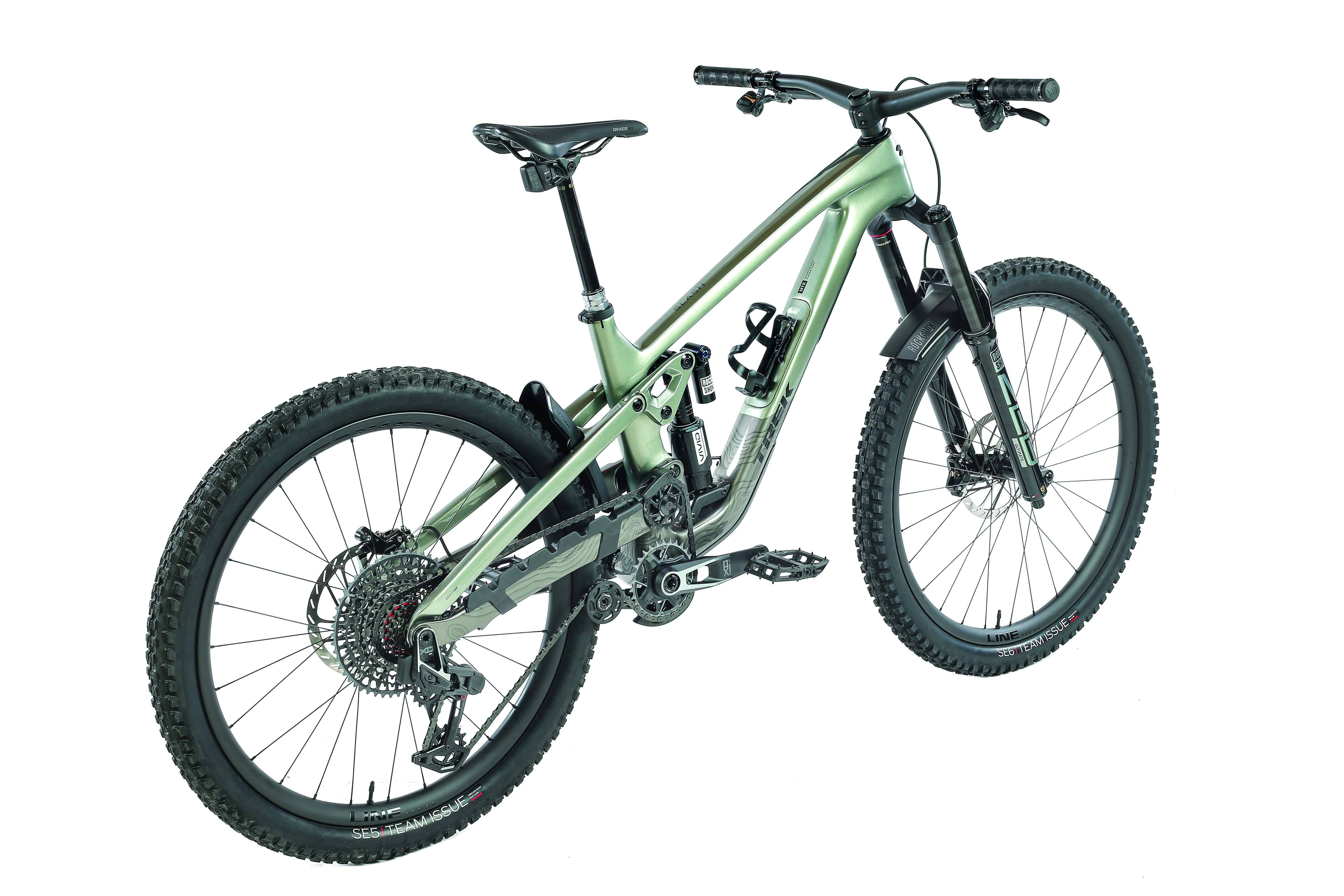
The bike is only sold with a mixed-wheel setup, but the bolt-on shock mount can be swapped to allow a 29-inch back wheel to be used without changing the bike’s geometry—this goes for all sizes except size small, which is only available with 27.5-inch wheels. It comes from the factory with a neutral headset cup, which gives the bike a head angle of 63.3 degrees and an effective seat tube angle of around 77 degrees depending on which size you get. You can get an angle-adjust headset cup that will steepen or slacken the bike by 0.7 degrees. Our M/L-size test bike has a 434.2mm chainstay length, but Trek gives this bike size-specific chainstays to keep a consistent ride feel throughout the size range.

Trek has jumped on the bandwagon of high-pivot bikes with the allure of the rearward axle path that they claim allows the bike to carry speed more effectively throughout the trail, specifically on square-edged rocks. They’ve combined this 170mm-travel high-pivot system with their existing ABP (Active Braking Pivot), which they say allows them to separate the anti-squat and anti-rise characteristics and tune them individually. This system is designed to keep the suspension active even under heavy braking, keeping traction to the rear wheel at a premium.
According to Trek, they’ve been able to keep the anti-squat number at just over 100 percent throughout the stroke. This basically means the suspension won’t be affected by your pedaling movement no matter where you are in the bike’s travel.
This Slash has a couple of other tricks up its handlebars with a rear suspension flip chip to adjust the progression located in the bolt-on shock mount at the base of the shock. This is the same bolt-on mount that can be swapped out to accommodate a 29-inch rear wheel. Our test bike came spec’ed with RockShox’s new Vivid Ultimate high-volume air shock with an adjustable hydraulic bottom-out, a climb switch, and high- and low-speed compression adjustments.
This is matched to a 170mm-travel RockShox Zeb Ultimate fork with the Charger 3 RC2 damper with high- and low-speed compression adjustments. They’re saying this bike is compatible with up to a 190mm fork with a 606mm axle-to-crown measurement if you decide to make it more of a park bike.

The Slash 9.9 XO AXS T-Type build, which we tested, featured the excellent SRAM XO AXS Transmission, Code Silver RSC brakes and a 170mm-travel RockShox Reverb AXS dropper post. This bike has a unique chain line consisting of an oversized 19-tooth upper idler pulley, an MRP bash guard and lower idler pulley, and a 30-tooth chainring attached to 165mm XO cranks. I
t also contained some Bontrager components in the mix with the RSL integrated handlebar/stem system, grips and saddle, along with Line Pro 30 carbon wheels wrapped in a Bontrager SE6 Team Issue front tire and a SE5 Team Issue rear tire. This wheel and tire combination we felt was a weak point of the bike because we broke a spoke nipple on the third ride out and just couldn’t get comfortable with the grip the tires offered.
Trek offers several build options for the Gen 6 Slash, including the aluminum Slash 8 that starts at $4,400 and includes every feature the Carbon 9 models have. From there, they go up in price and build spec with every size—from S, which is 27.5 inches only, to M, M/L, L and XL, all of which are mixed-wheel builds topping out at $11,500 for the Slash 9.9 XX AXS T-Type build.

For a high-pivot bike, the Gen 6 Slash is an excellent climber. We were impressed with the ease of forward momentum when the trail pointed uphill. We did some experimentation with the progression chip at the base of the shock and found that, though the climbing performance was enhanced, it wasn’t enough for us to want to flip it every time we rode mellower trails, as the bike performs perfectly well in the less progressive setting. Steep technical sections were a pleasure to climb, and generally boring road climbs and traverses seemed to pass more quickly than normal aboard the Slash. Though we flipped it once just to see if it helped, we never felt the need to use the shock’s climbing switch.
We were impressed with the bike’s composure on any ascent. We also liked how the shorter 165mm cranks worked with the 27.5-inch back wheel, giving us both ground clearance in sticky situations and the quick acceleration we associate with mullet bikes. We never had a pedal strike while riding this bike, which made pedaling along narrow shelves and up technical bits a more peaceful experience.

Aside from experiencing some technical malfunctions, none of which have anything to do with the frame, we were more than happy with the descending performance of the Gen 6 Slash. Our initial impression of high stability continued on through the duration of the test as we pushed limits and enjoyed each second of riding this bike.
For the first few days on the bike, we felt a strange flex in the back of the bike that we thought might have been associated with frame flex due to experiencing an intense squeaking when rounding sharp corners at speed. We figured out later this was an unfortunate combination of the flimsy-feeling Line Pro 30 rear wheel flexing and a sticky piston in the brake caliper rubbing the rotor in an annoying fashion.
As soon as we troubleshot these issues, we were able to experience the full descending potential of the Gen 6 Slash. It’s one of those “The faster you go, the better it feels” types of bikes that encourages less brake usage. When you are eventually forced to use the brakes, the suspension responds as if you’re not and remains as active and supportive as ever.
We found ourselves late braking into all kinds of corners and whipping around them faster than we’d normally have done, ready to face the next one. We also felt the bike’s composure on the steeps and in intense rock gardens, which it skipped or floated through rather than getting hung up in the crevasses. When we experimented with the progression switch, we found the added support to be a little too much on all but the most mellow sections of the trail and quickly flipped it back, as we were more than happy with the performance in the less progressive setting.

WHAT DID WE LOVE?
There was a lot to love about this bike that we feel needs a shout-out. Most of our testers loved the 165mm XO cranks and wished more companies would add 165mm cranks to their bike’s specs list. RockShox’s new Vivid Ultimate shock was excellent throughout testing, taking very little time to set up and even less time to adjust for added comfort and traction. We were also impressed with the bike’s overall stability and maneuverability wherever we were on the mountain, bringing the confidence of a big bike and the joy of a smaller bike.
WHAT DID WE HATE?
This might be a bit longer than normal, and that’s mostly due to the Bontrager products supplied with this bike. Aside from the grips and the saddle, we didn’t particularly like any of them, especially the tires and rear wheel. While they performed adequately enough to have fun on the trail, we never quite felt the confidence in grip that we feel when a Maxxis Minion or American Classic Vulcanite is mounted to the wheels.
The rear wheel was a whole problem in itself, because while the hub action was good, the wheel as a whole flexed far too much for comfort, and we even broke a nipple at the bike park on just the third day riding the bike. The RSL integrated bar and stem didn’t have the adjustability we’d prefer, and most would have liked to roll the bar angle back just a little bit if they could. The BITS headset tool proved to be useful, but very hard to get out of the head tube when needed, which was annoying.
Our other complaints were about the fork and rear brake, both of which could happen to any build. The rear brake suffered from a stuck piston and was very far over to one side, meaning the rotor rubbed on the caliper itself. This was an easy fix. The fork formed a weird clunk in the rebound stroke, which made it hard to ride at any speed, so we had to get a warranty replacement to complete the test. All of these things gave us a bit of a love/hate relationship with the bike more severe than with most bikes. Were we to own this bike ourselves, these would have been warranty issues or we’d simply swap out all the troublesome parts and enjoy the excellent performance this frame can offer.
BOTTOM LINE
Our feelings about the Gen 6 Slash may be mixed, but the good outweighs the bad, and we were able to get past the inconveniences. This bike is very versatile in the gravity side of things, so if you’re looking for an enduro race bike, backcountry exploration rig or park sender, the Slash has you covered. A quick swap over to your preferred parts and this bike will serve its rider well for a long time. Because of the component’s spotty performance, our recommendations are damped on this particular build, but we feel it’s still well worth consideration when looking for your next full-send rig.
TREK SLASH 9.9 XO AXS T-TYPE
www.trekbikes.com
CATEGORY: Enduro
SUSPENSION: 170mm (front/rear)
TIRE SIZE: 29″/27.5″ mixed
Price: $9,400 Weight: 34.7 pounds (without pedals) Sizes: S, M, M/L (tested), L, XL Frame tested: 170mm, OCLV Mountain Carbon (travel and material) Shock: RockShox Vivid Ultimate Fork: RockShox Zeb Ultimate Wheelset: Bontrager Line Pro 30 carbon Tires: Bontrager SE6 Team Issue (29×2.5″) front, SE5 Team Issue (27.5×2.5″) rear
Seatpost: RockShox Reverb AXS (170mm travel) Saddle: Bontrager Arvada Handlebar: Bontrager RSL integrated handlebar/stem Stem: Bontrager RSL integrated handlebar/stem Grips: Bontrager XR Trail Pro Headset: Integrated cartridge bearing Brakes: SRAM Code Silver Rotors: SRAM 6-bolt 200mm (f), 200mm (r) Rear derailleur: SRAM XO AXS Eagle, T-Type Shifters: SRAM AXS POD Ultimate Crankset: SRAM XO Eagle, 165mm Bottom bracket: SRAM DUB, 73mm, BSA threaded Cassette: SRAM Eagle XS-1295, T-Type, 12 speed, 10-52T Chain: SRAM XO Eagle, T-Type, 12-speed Chainrings: SRAM XO T-Type, 30-tooth
GEOMETRY SIZE M/L
Head tube angle: 63.3° Effective seat tube angle: 77.3° Reach: 468.1mm (18.4″) Stack: 632.1mm (24.9″) Bottom bracket height: 351.1mm (13.8″) Chainstay length: 434.2mm (17.1″) Wheelbase: 1253.2mm (49.3″)
U23 XCO RESULTS FROM THE PAN AMERICAN GAMES
VIDEO: CHASING TRAIL EPISODE 38 – IN SEEK OF SQUAMISH, BC’S UNRIDDEN MOUNT HABRICH TRAILS
THROWBACK THURSDAY: COLIN BAILEY, FATHER OF THE MAXXIS MINION

mountainbikeaction
- Since 1986 - Covering All Aspects of ⛰🚲 #MBAmagazine

- Bike Builds
- Cross Country Bikes
- Downhill Bikes
- Enduro Bikes
- Hardtail Bikes
- Trail Bikes
FASTHOUSE SPEED STYLE ROWEN GLOVE REVIEW
SPECIALIZED CAMBER HELMET REVIEW – INCREDIBLE PERFORMANCE FOR ONLY $35!
YETI TURQ WIND VEST REVIEW – THE IDEAL SPRING COMPANION
FASTHOUSE TRACKER PACKABLE WINDBREAKER REVIEW
VIDEO: FEELING THE PACIFIC NORTHWEST’S MID-SEASON STOKE IN ‘SUMMER…
SPENCER RATHKAMP TAKES ON 4 DIFFERENT RACES FROM XC TO DH WITH THE SPECIALIZED EPIC 8…
VIDEO: HANS REY EXPLORES THE NEXT FRONTIER OF RIDING IN NORWAY
ASK MBA: ARE CARBON WHEELS WORTH THE EXTRA MONEY?
ASK MBA: HOW DO I REPLACE A BROKEN SPOKE?
ASK MBA: WHAT’S THE BEST WAY TO FLY WITH MY BIKE?
ASK MBA: WHY DO MY BIKE’S DISC BRAKE PADS KEEP RUBBING?
INTERNAL ROUTING THE EASY WAY – CHEAT CODES FOR CABLE AND HOSE ROUTING
THE INS AND OUTS OF FRAME PROTECTION – THE BEST WAYS TO KEEP YOUR FRAME LOOKING…
HOW TO SERVICE A PRESS-FIT BOTTOM BRACKET
ASK MBA: SHOULD YOU REPLACE THE ROTOR ALONG WITH YOUR BRAKE PADS?
BIKE CHECK: MARK WEIR’S VERY CUSTOM CANNONDALE MOTERRA
BIKE CHECK: BRYN ATKINSON’S PIVOT SHUTTLE LT E-BIKE
MATHIEU VAN DER POEL TELLS US ABOUT HIMSELF AND HIS MOUNTAIN BIKE, MBA SEPTEMBER 202O
BIKE CHECK: LARS FORSTER’S THÖMUS LIGHTRIDER WORLDCUP
- Mountain Bike Action
- Digital Mountain Bike Action
- Back Issues
- NICA Team of the Month
- B’s Buzz
DESTINATION: CAPPADOCIA, TURKEY – ICY TRAILS AND FAIRY TALES
LOAM PASS ADDS 12 NEW DESTINATIONS JUST IN TIME FOR SUMMER
DESTINATION: WHISKEY RUN OREGON – A NOT SO SECRET RIDING PARADISE
GIRLZ GONE RIDING CELEBRATE WOMEN’S MOUNTAIN BIKING WITH BIG BEAR EVENT IN JULY
VIDEO: TRANSITION FACTORY RACING EP. 1 – FT. WILLIAM
PHOTO GALLERY: THE BEST OF SEA OTTER CLASSIC 2024
READER SENDS: THIS MONTH’S BEST READER-SUBMITTED PHOTOS
READER SENDS – THIS MONTH’S BEST READER SUBMITTED PHOTOS
READER SENDS – THIS MONTH’S BEST READER SUBMITTED PHOTOS
- Anneke’s Blog
- Down The Trail

TREK SLASH 9.9 X0 GEN 6 REVIEW
Words by Drew Rohde | Photos by Staff
After nearly six months of abuse, conversations with Trek Bikes HQ and a YouTube Service Bulletin video full of interesting comments, we’re kicking off the new year with a high pivot, Gen 6 Trek Slash review that should be another great conversation piece as one of the hottest bikes of 2023. We’ve been fans of many of Trek’s bikes over the last few years from the Session DH bike to their Fuel EX and Fuel EXe and of course, the last generation Slash . We first rode the Gen 6 Trek Slash during Crankworx Whistler, where we filmed a Dissected Feature with their engineer: Trek athlete Casey Brown and more. Since then, we spent the rest of summer in the bike park, pedaling backcountry trails and yes, filming a service video on the famous “Chain dropping” issue that commenters had us thinking was affecting nearly everyone who owned one of these bikes. But…as the saying goes, don’t believe everything you hear. Even if you don’t believe what we’ve got to say when it comes to the goods and bads of the new Trek Slash, we think you’ll find it entertaining at least.
QUICK SPECS
• 170mm High Pivot ABP Suspension • Mixed Wheel (29”F/27.5”R) as standard, dual 29” option • HTA 63.3 • STA 76 (effective) • REACH 490 (Large)
FULL BUILD SPEC
CHASSIS Frame: OCLV Mountain Carbon | 170mm Fork: RockShox ZEB Ultimate 170mm | Charger 3 RC2 Shock: RockShox Vivid Ultimate 230x65mm
COCKPIT Brakes: SRAM Code Silver | 200F/R Centreline rotors Bar/Stem: Bontrager RSL Integrated | OCLV Carbon | 820mm | 27.5mm Rise | 35mm Length Headset: Integrated Sealed Bearing Seatpost: RockShox Reverb AXS | S: 100mm, M-XL: 170mm Saddle: Bontrager Arvada
WHEELS Hubs: Bontrager Rapid Drive 108 Rims: Bontrager Line Pro Carbon Front Tire: Bontrager SE6 Team Issue | 29″ x 2.5″ Rear Tire: Bontrager SE5 Team Issue | 27.5″ x 2.5″
DRIVETRAIN Bottom Bracket: SRAM DUB Threaded Cassette: SRAM Eagle XS-1295 | T-Type | 10-52T Cranks: SRAM X0 Eagle | T-Type | 30T | 165mm length Shifter: SRAM AXS POD Ultimate | 12s Derailleur: SRAM X0 Eagle AXS | 12s
Downhill performance is incredible
Rear suspension plush yet solid
Fast and Confident
Bike Park shredder
Vivid Ultimate
WE DON’T
3 Dropped chains (fix appears to work)
Steep, chunky climbing
About The Trek Slash Gen 6
Packing 170mm of travel out back, the new Trek Slash claims to be a 70/30 bike, meaning Trek designed the bike to have a 70% downhill bias with a 30% nod to climbing and uphill capabilities. Needless to say, this isn’t your run of the mill XC or all-mountain bike. It’s designed and built for riders who prioritize downhill speed, composure, and confidence on the gnarliest terrain over efficiency and climbing performance.
Since this review is likely going to get a bit long, we’ll link to our Dissected Feature which has a written interview, all the tech details and a video interview and presentation on the Gen 6 Trek Slash. If you’d like to check that out, click here.
If the CliffsNotes version works for you then we’ll gloss over a few key features:
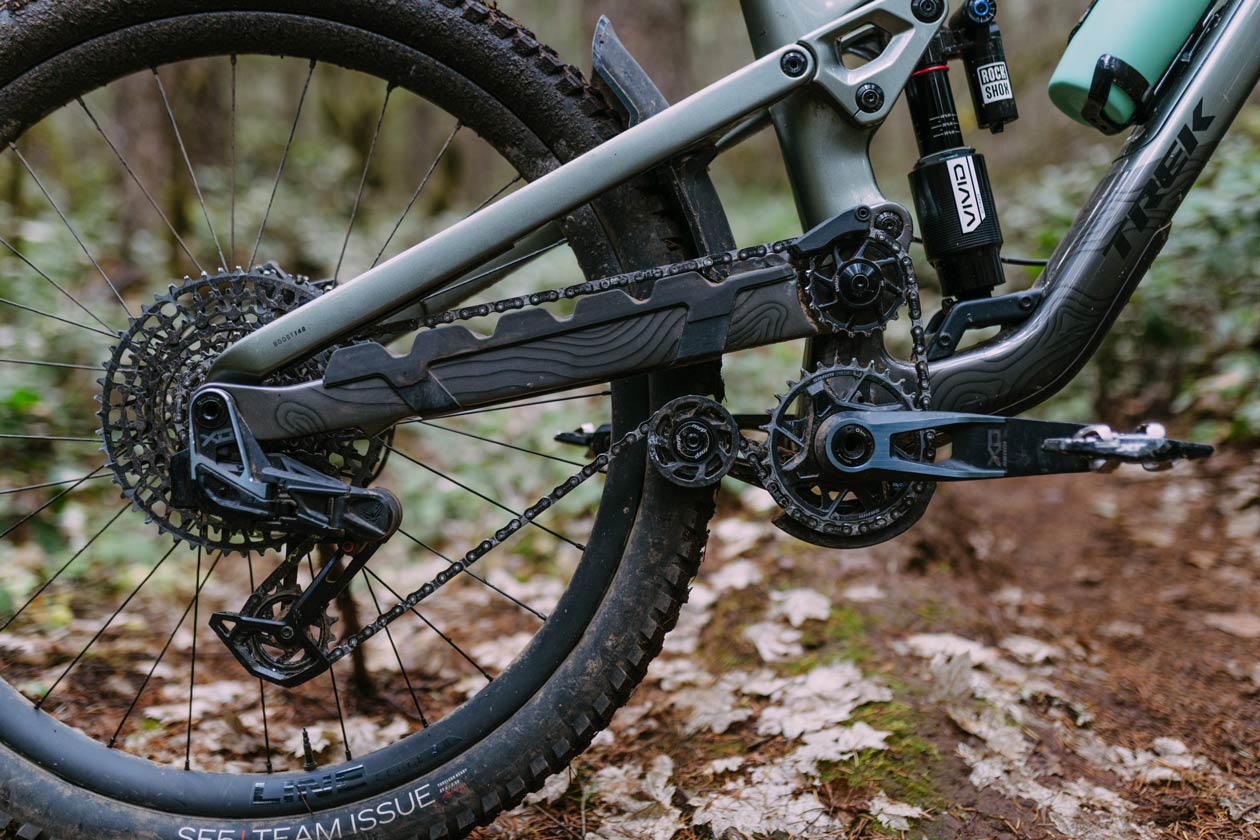
FRAME AND FEATURES
Updated for 2023, the high pivot Trek Slash Gen 6 can be run with a number of wheel size configurations and can take up to a 190mm travel fork but comes with a 170mm fork and mixed-wheel setup as standard. Riders can choose a full 29er race machine, 27.5” aggro-shredder or put a dual crown 190mm with a mullet and have a mini-Session bike park rig.
With many people loving the last generation Slash, some may have wondered why Trek opted to go to a high pivot and run two idlers? Well, with Trek’s other bikes creeping up in capability and riders wanting to go faster and bigger, it seems many brands are making their bikes bigger and burlier, and of course, more high-pivoty. Trek Slash engineer, Matt Yerke told us that even though the bike’s 70% focused on DH performance, they took time to keep it versatile and pedal-friendly, as a mountain bike should be. Did they deliver? We’ll see down below.
BUILD SPECS AND VALUE
With bikes starting at $4,399 and going up to $11,499, our Slash 9.9 X0 AXS sits on the higher end of the spectrum at $9,399 and comes with a dialed spec. If we were spending our own money however, we’d likely be checking out the Slash 9 or Slash 9.8 XT models.
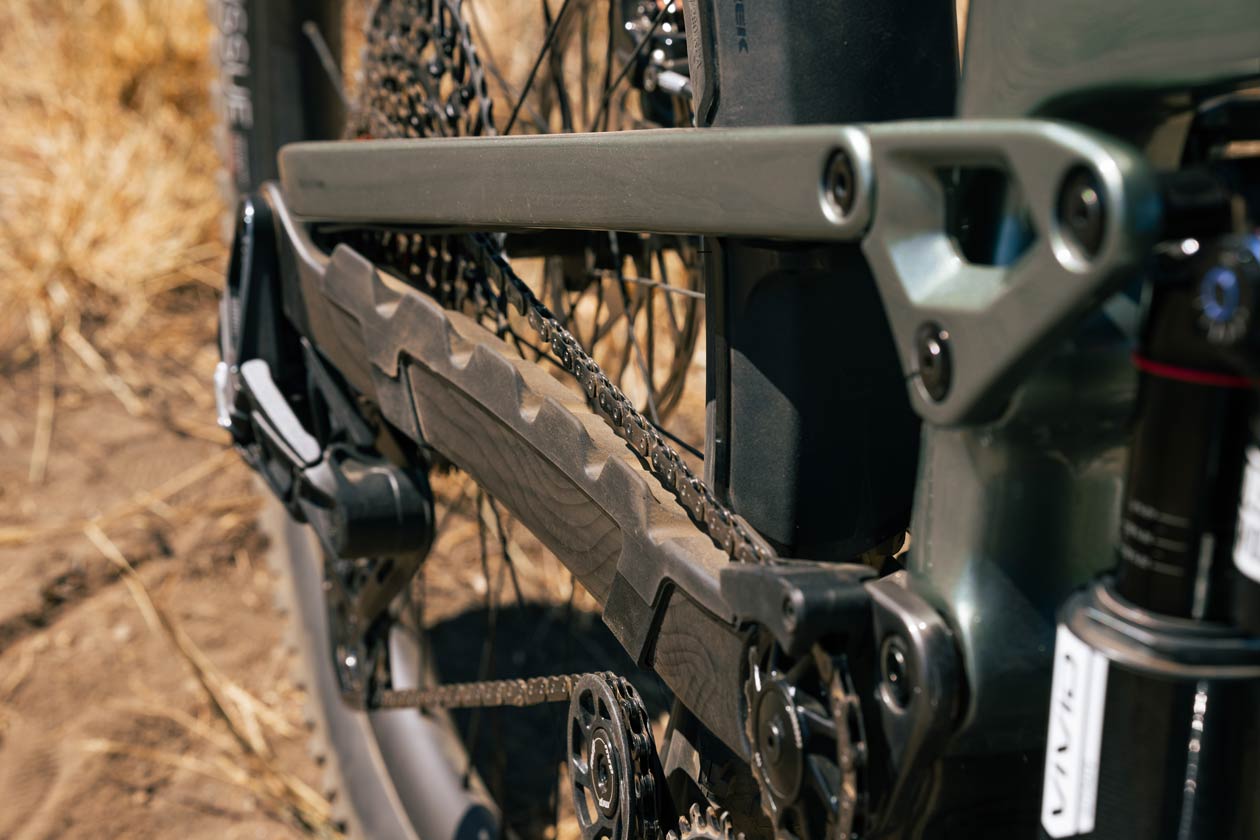
Chain Drop Service Bulletin and Notes from Trek
We published this How To Video to address some of the popularized videos and comments talking about chain drop on the new Trek Slash. After publishing this video and seeing all the comments, we reached out to Trek as it had us reconsidering our official stance on the long-term review you’re about to see below. The statement below from Trek, which we are taking as truthful, made us feel better and also aligned with our notions of what we’ve observed. Trek passed our concern around their Customer and Dealer Service teams and below is a small excerpt.
“First off, Trek Bicycles and I would like to acknowledge that it is frustrating to buy a nice new bike that doesn’t work exactly like it should out of the box. Luckily however, it has been a very small number of people affected and thankfully they have been far less upset than what online commenters may have you believe.
Trek’s customer service team has actually received way more calls about internet comments talking about chain drop than actual Slash owners who are experiencing the issue. We have found that a handful of riders said the fix did not entirely solve their dropping issues. We have sent out early units of our updated idler wheel to that handful of riders, one of which is Ryan Howard, who has been spending a ton of time on his Slash. We’ve been pleased to hear that those riders are no longer having any drop issues.
These will ship to dealers at no cost for any Slash owners who want to get one.” – Ross Rushin // MTB Product Manager
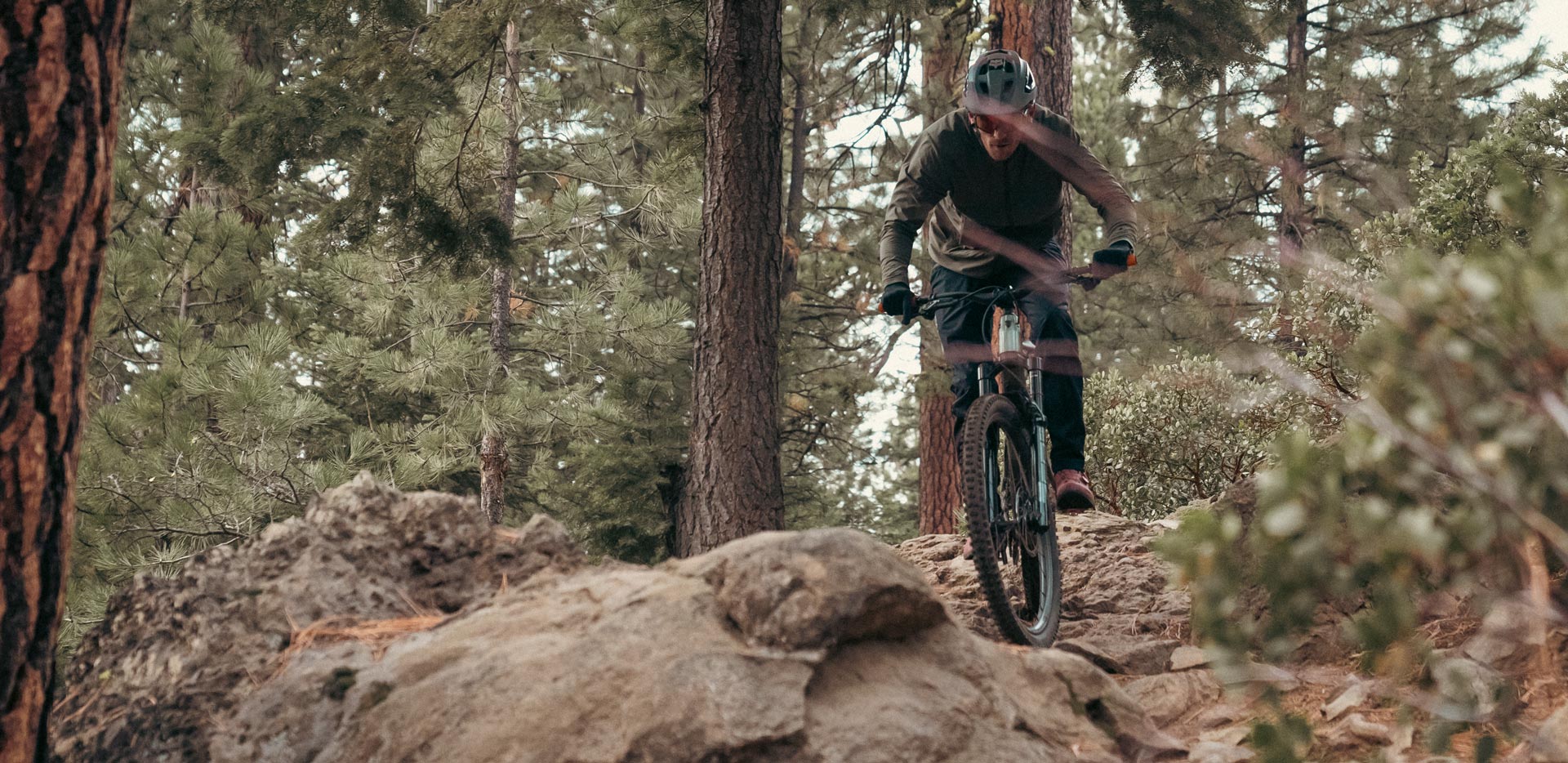
When evaluating the new Gen 6 Trek Slash 9.9 X0 AXS against the previous generation Slash and current offerings from other brands in this genre, the Slash commands attention. As with any purpose-built product, the things that make it excel can also alienate or turn off others. I’m traditionally not a huge fan of high pivot bikes, though I’ve grown to like mid-high pivot bikes for certain applications. Rocky Mountain’s Powerplay eBike and the Trek Session , which we reviewed last year, are two examples of mid-high pivot bikes that I like quite a bit.
Chances are you’ve already heard the touted claims of high pivot bikes since they’ve been so heavily marketed over the last couple of years, so we’ll save you the pitch. What is undeniable though, is that they can charge over terrain and obstacles a bit better than other designs, but only if they are tuned and designed well. We have ridden some high pivots that don’t really improve much, but suffer the downsides of a high pivot, but we’re happy to report that Trek has avoided this ill fate.
SETUP | Setting up The Trek Slash was one of the easier tasks of the year. It required almost zero tuning, customization or tinkering with to feel amazing. If you’ve read our older Trek reviews, you may recall us being a bit critical about the tune being a bit too mellow, which led to heavier or more aggressive riders needing to add maximum volume reducers or going our route, contacting Fox Shox to weasel a Trek Factory Racing tuned shock, which did wonders for the bike. This is no longer an issue as Trek seem to have finally identified that if they’re going to design an aggressive bike for aggressive riders, they need to have a shock and tune that are ready for it.
The most time-consuming part of our review bike’s set up was removing the one-piece Bontrager bar and stem combo unit and replacing it with our favorite OneUp Components Ebar and stem. This resulted in a better body position and way less hand fatigue.
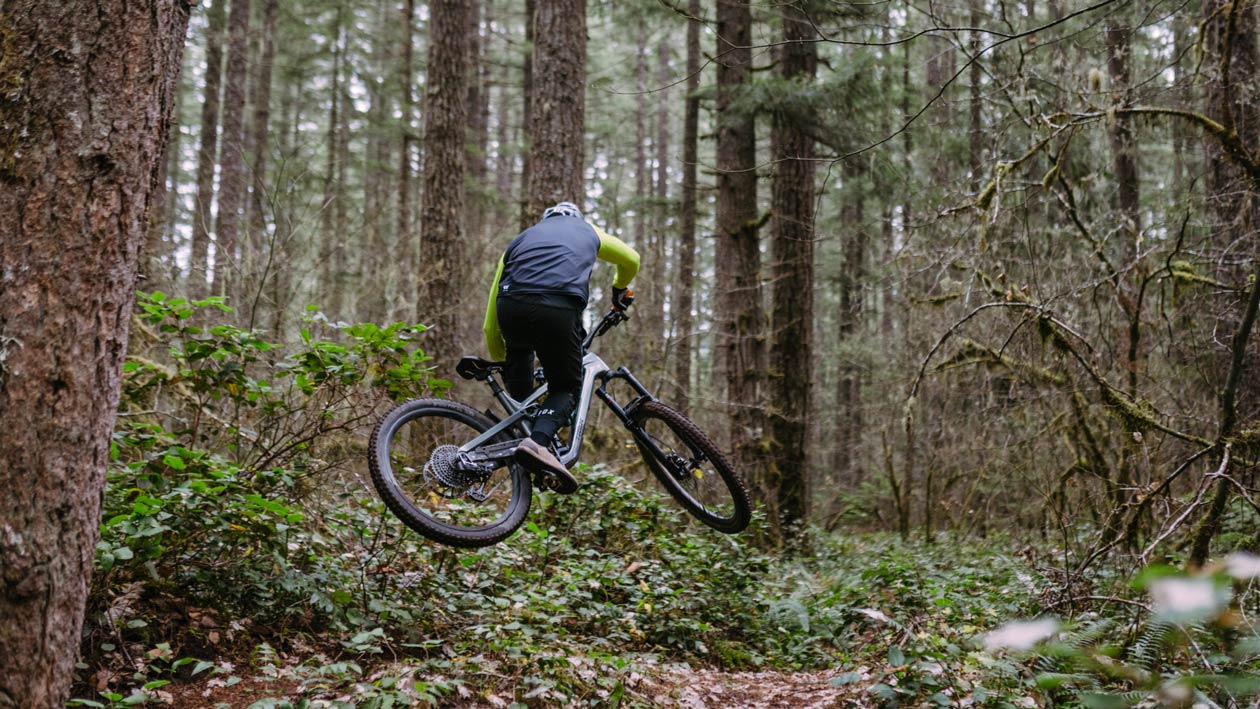
DESCENDING | Trek has done a great job of making the new Slash’s suspension absolutely devour hits of all sizes. The RockShox Vivid Ultimate rear shock only compliments the insane capability of the Slash’s rear end. It is possibly the smoothest, best feeling rear suspension I’ve felt in a while. For me, a rider who loves smashing, gapping and floating rough, chunky downhill trails, it offers a very nice platform for support and control, but gets out of the way offering a bottomless and smooth feel. I could have been tricked into thinking a coil shock was mounted out back based on the composure and smoothness.
When it comes to downhill performance, the Trek Slash may be the best descending mountain bike we rode in 2023! It absolutely shreds trails with ease and begs to go faster. Whether we were lapping blown-out end of season bike park trails or remote backcountry downhills, the Slash leads the way. In fact, we can’t think of any bikes that aren’t downhill bikes that we’d want to ride in a bike park more than the Slash. The speed this bike carries, composure over braking bumps, big and little hits as well as the way it corners make it a really impressive machine.
The downside is, the compliance combined with the weight, makes this bike a little bit tougher to jib on smaller features at slower speeds. It absolutely still gets off the ground and is fun to play on, it just requires a bit more muscle to get it up and tweaked. Granted, this rocket ship wasn’t designed with lower speeds in mind, and it shows with a list of Personal Records that our various testers achieved.
Another downside is that the bike does have more stuff to go wrong. Whether you’re one of the unlucky riders dropping chains – which we did three times before the service bulletin addressed the issue – or not, more moving parts, extra chain links, and more nooks and crannies all mean more chances for things to go wrong.
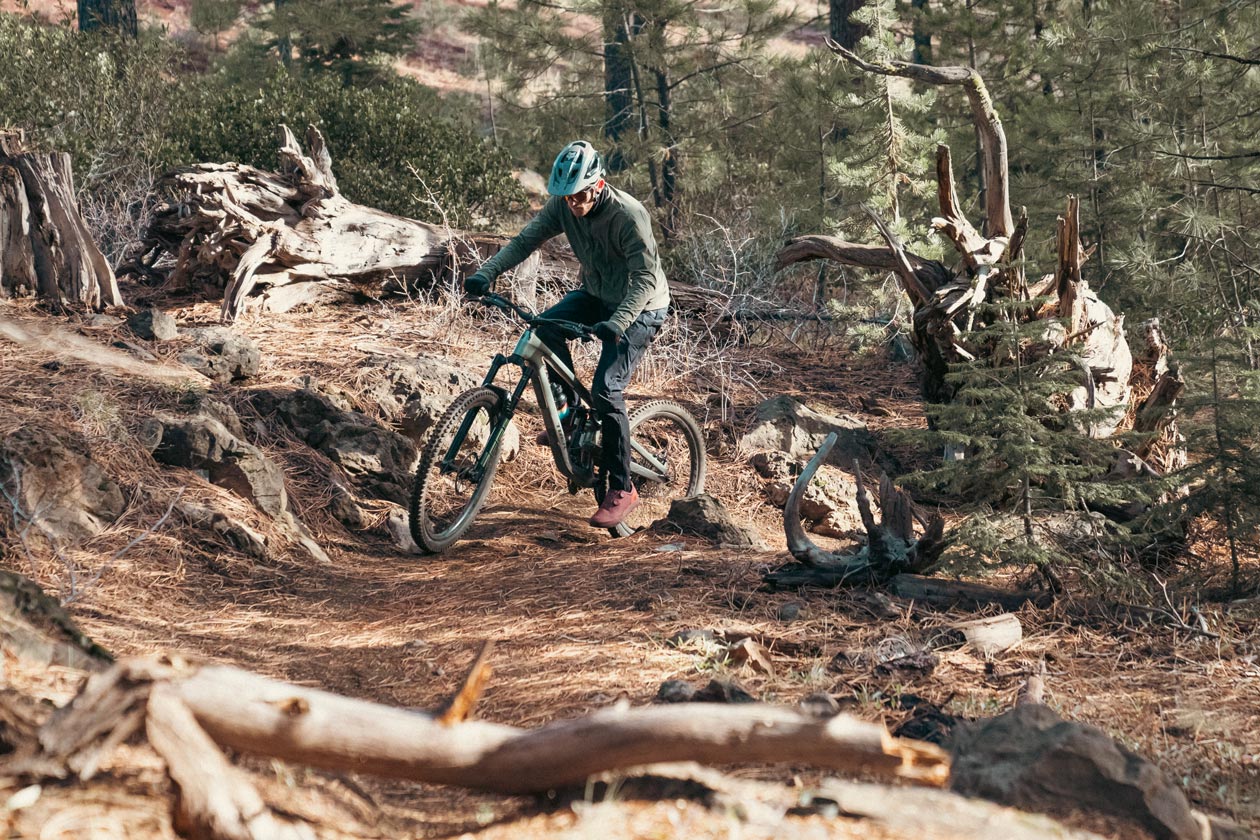
CLIMBING | Along with the above concerns, the climbing performance of the Gen 6 Slash certainly isn’t what its outgoing sibling offered. Since taking possession of the Trek Slash 9.9 XO AXS we’ve had four riders put time on it. Two of which owned previous generation Trek Slashes. All riders agreed, like Trek claims, this bike is a definite 70/30 bike, and the climbing performance is tolerable in certain situations like fire roads and smoother trails, but can be a struggle on more steep, technical trails with larger obstacles that want to eat your momentum.
The weight is noted, and while the drag may be a claimed 3%, it felt a bit closer to 10% in practice. That could be exacerbated by the lengthening rear end – yes, the same thing that makes high pivots so great, also works against it.
It’s been a while since we graduated but, we think someone smart once said something about actions having reactions, but we didn’t pay close attention in school so maybe we’re making it up. Either way, when speeds are low, the grade steep and effort high, we found that the rear end could “stall” as we tried to pedal over roots or rocks, sucking our energy and momentum in the process. Much the way the rear end grows to get up and out of the way of an impact while descending, as you climb and hit an obstacle, the front continues to creep up the hill as you grind away at the pedals. However, the rear wheel goes backwards before going up and that delay can make it feel like you’re pedaling harder to get up and over that obstacle, which means more energy and slower times. Of course, this bike wasn’t designed to race up the hill, it’s meant to go down. If your energy is spent on the way up, however, it could be worth considering you may be more fatigued when that race timer starts.
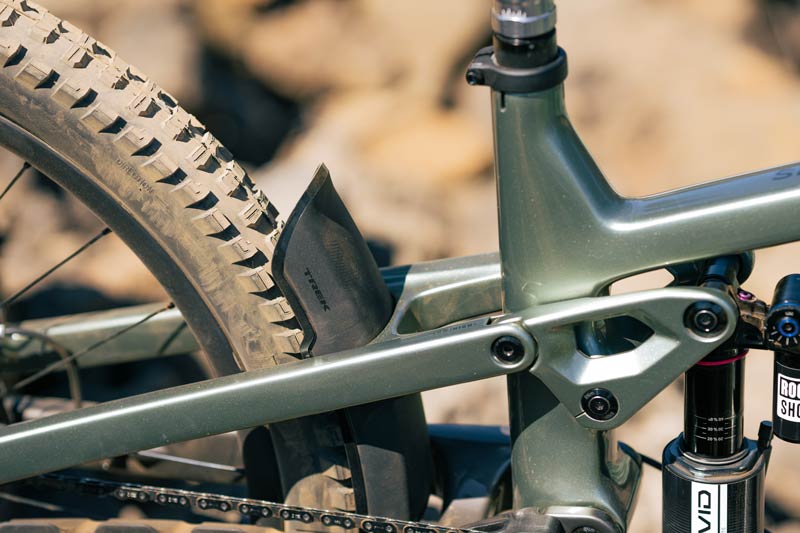
FINISH AND VALUE | Now, as amazing as the bike is, we did in fact drop the chain three times over the six-month test period we had. Since the repair, we didn’t drop the chain, however we only had a few rides on it before winter hit, so we can’t say with 100% confidence it’s gone, but we are pretty certain that with the updated spacing and especially the new idler wheel, we’d be in good shape. You may want to wait until the updated idlers hit, hopefully February of 2024, but in the meantime the chain dropping issue may not be quite as bad as commenters may have you believing.
The rest of the bike is a nicely put together package. Trek paint had some years known for being a bit, soft we’ll call it, and while it’s still not as durable as we’d like, it’s a lot better. Though we’d recommend a frame wrap, of course, we’d recommend that on any bike, so maybe not a surprise there. If you stop, look closely and examine the details of this bike, it does look very nice, has quality bits, nice hardware and a very classy overall appearance. Trek have done a nice job making this a drool-inducing bike.
The Wolf’s Last Word
Price: $9,399 Weight: 36.4lbs Website: Trekbikes.com
LEAVE A COMMENT, WIN FREE SWAG!
Want to win some free schwag? Leave a comment and vote up the most thoughtful comments and each month we’ll pick a winner. The person with the smartest and most helpful replies will earn some sweet new gear. Join the Pack and get the latest news and read the latest reviews on the top mountain and electric mountain bikes .

2021 Trek Slash 9.9 on test – Is this the new enduro bike benchmark?

The Trek Slash caused quite a stir when it was launched in 2016 and played a key role in shaping the 29er enduro bike category. Now, Trek have finally presented its successor, the 2021 Trek Slash 9.9 – with more travel, updated geometry and a practical storage compartment. Will this be the new benchmark?
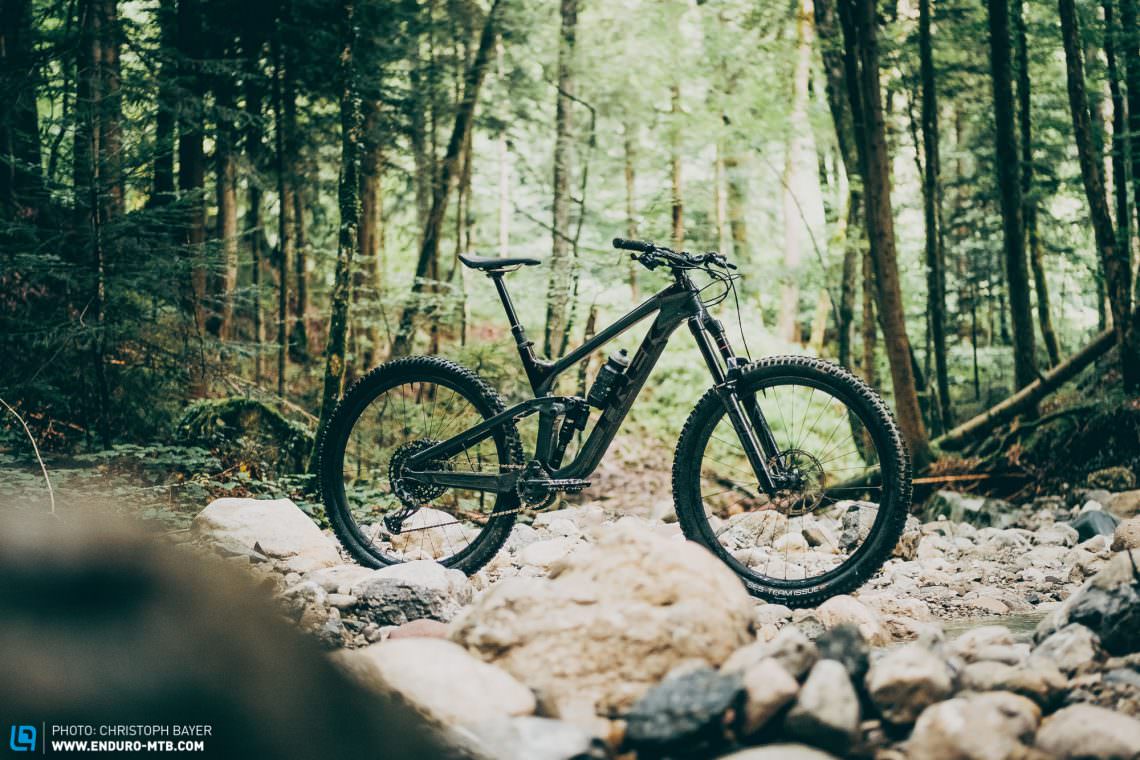
The most important updates of the 2021 Trek Slash in a nutshell
The new Trek Slash has big shoes to fill! Hardly any bike was as popular in the scene as the 29er preceding it, but it was getting on in years. Trek have increased the travel of the new Slash by 10 mm to 170 mm up front and 160 mm at the rear. The geometry has also been fundamentally revised: the reach is longer, the seat tube angle is almost 2° steeper and the head angle is slacker (now 64.1°). The bottom bracket was lowered by a further 6 mm, despite having more travel, bringing the BB drop to 29 mm. As with the Fuel EX , the American brand have equipped the Slash with a storage compartment in the down tube of both the carbon and aluminium frames.

Looks like a … Trek! There’s no denying the new Slash’s heritage.
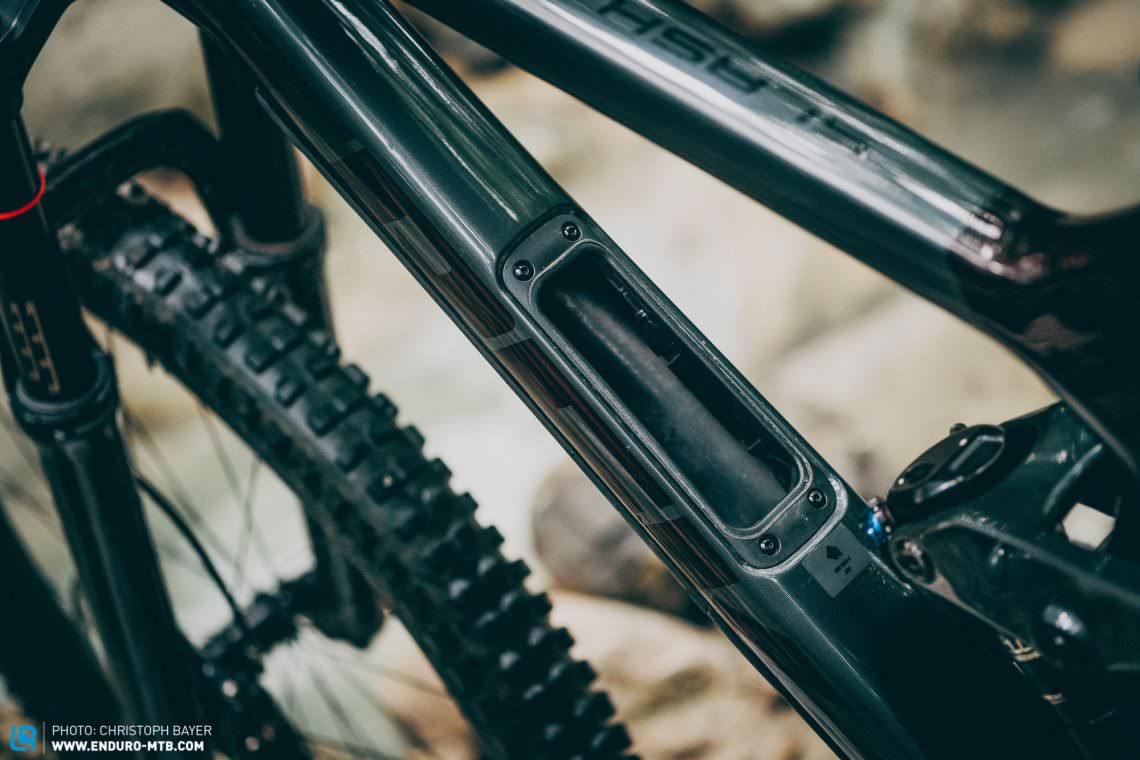
Trek have also improved many details of the Slash, giving the bike a new Thru Shaft Super Deluxe shock specially made by RockShox, a revised Knock Block that doesn’t limit the steering quite as much, a threaded bottom bracket and bigger frame protectors. On top of that, the new Trek Slash comes with a 34.9 mm dropper post offering up to 200 mm of travel.
The changes made to the 2021 Trek Slash at a glance:
- longer and slacker geometry with a steeper seat tube angle
- more travel – 170 mm at the front, 160 mm at the rear
- convenient storage compartment in the down tube (aluminium and carbon frames)
- revised Knock Block offering a wider steering angle (72° instead of 58°)
- Specially developed Super Deluxe shock with Thru Shaft technology
- bigger frame protectors
- 34.9 mm dropper post with up to 200 mm travel
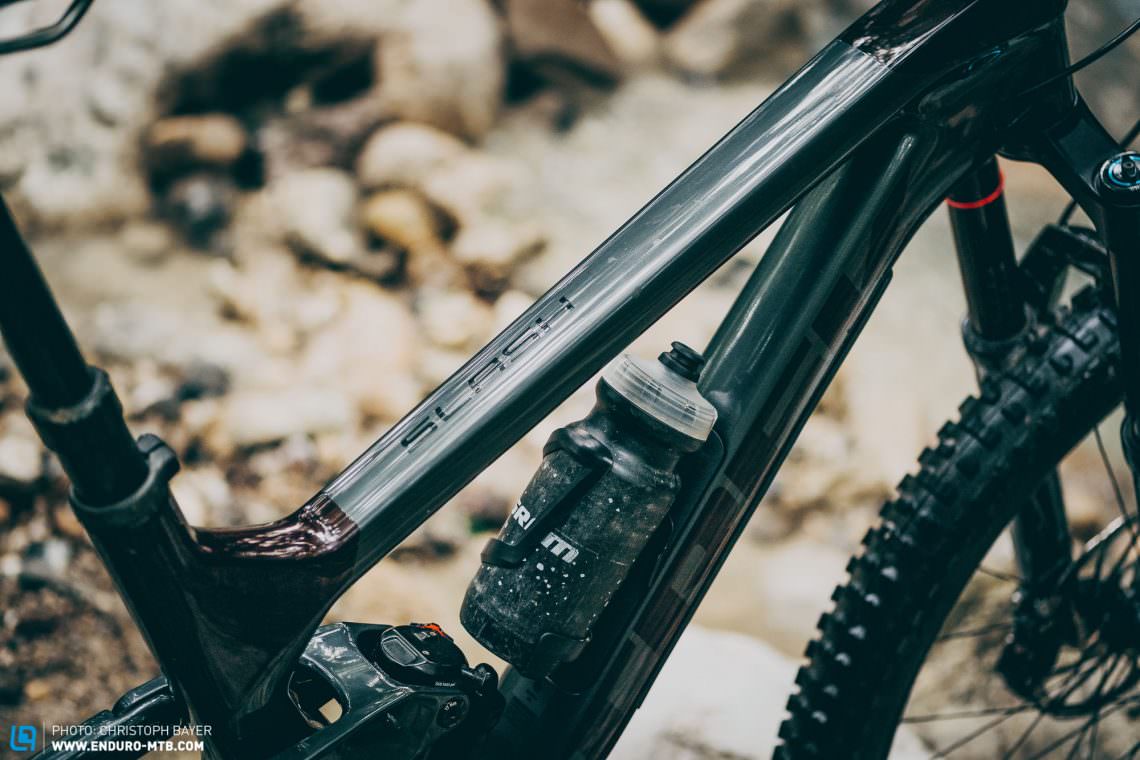
The frame of the 2021 Trek Slash in detail
Like its predecessor, the new Trek Slash is available as an aluminium or carbon version. The kinematics and geometry of both versions are identical. Trek are also the first company to integrate the practical storage compartment in the down tube on an aluminium frame – awesome! Like its predecessor, the rear linkage of the new Slash also pivots on the rear axle. As such, the rear suspension should remain active while braking. Trek also continue to rely on their so-called Mino-Link on the new model, allowing you to adjust the geometry by around 0.5° and the bottom bracket height by 6 mm – but we don’t know of anyone who actually uses it. We only ever rode the old and the new Slash in the slack setting.
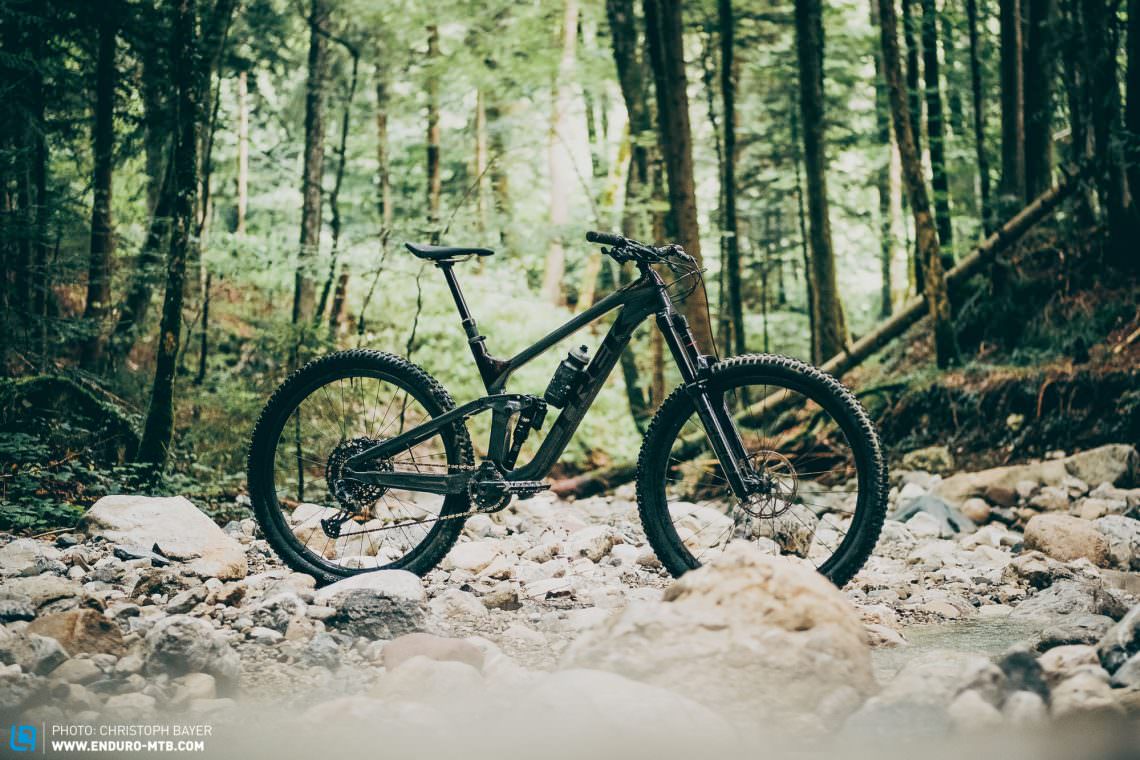
The Thru Shaft technology on the shock already proved itself on the predecessor, which creates less internal friction thanks to the continuous shaft and the lack of IFP and its seals. For the new model, Trek worked with RockShox to improve on this technology. Instead of using a specially manufactured body, it is now based on the Super Deluxe which allows you to adjust low-speed compression in three stages and thus tune the bike to suit different trails. Flow trails = more compression; steep natural trails = less compression. Another update is that the rebound clicks are now numbered, making it much easier to play with the setup. If you’d prefer using a different shock on the Slash, you can do so without any problems. Most 230 x 62.5 mm Trunnion mount shocks should fit into the rear triangle (e.g. FOX DHX2, FOX X2, RockShox Super Deluxe Coil, FOX DPX2 and MRP Hazard). According to Trek, the Slash is also compatible with coil shocks. The only shock that won’t fit is the classic Super Deluxe air shock because of the position of the lockout lever. Despite having longer travel, Trek have managed to retain the kinematics of the previous Slash, only increasing the overall progression by 2%.
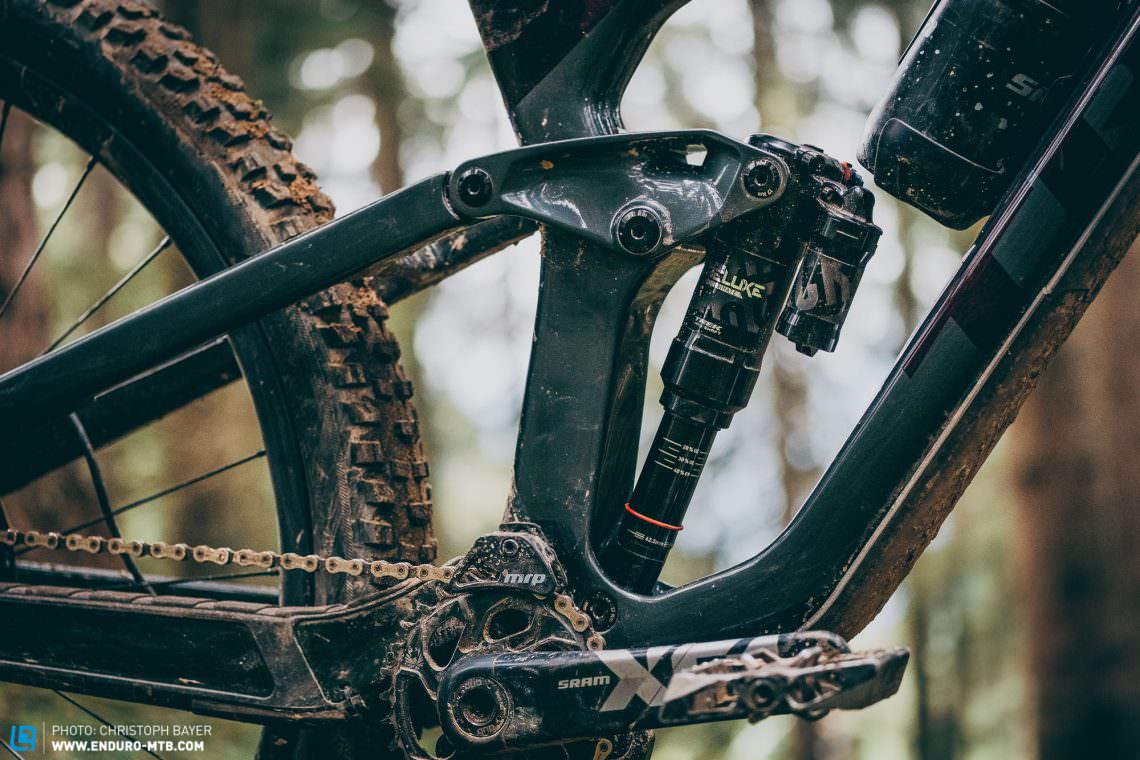
Trek have reworked the details too, equipping the Slash with a threaded BSA bottom bracket, which is much easier to replace than a press-fit version. The down tube protector has been lengthened, but it can also be split in two to save weight, though we wouldn’t know who would want to do that. The cables are routed internally and are secured in place at two positions in the storage compartment, negating the need for foam sleeves or dedicated cable channels inside the frame. Trek have also designed the new Slash to accommodate longer dropper posts, speccing a 200 mm travel Bontrager model on the XL bike. Size L comes with a 170 mm version, while sizes ML and M are fitted with 150 mm travel posts. The smallest size S gets a 125 mm model. The travel of the dropper post can be reduced with spacers if need be.
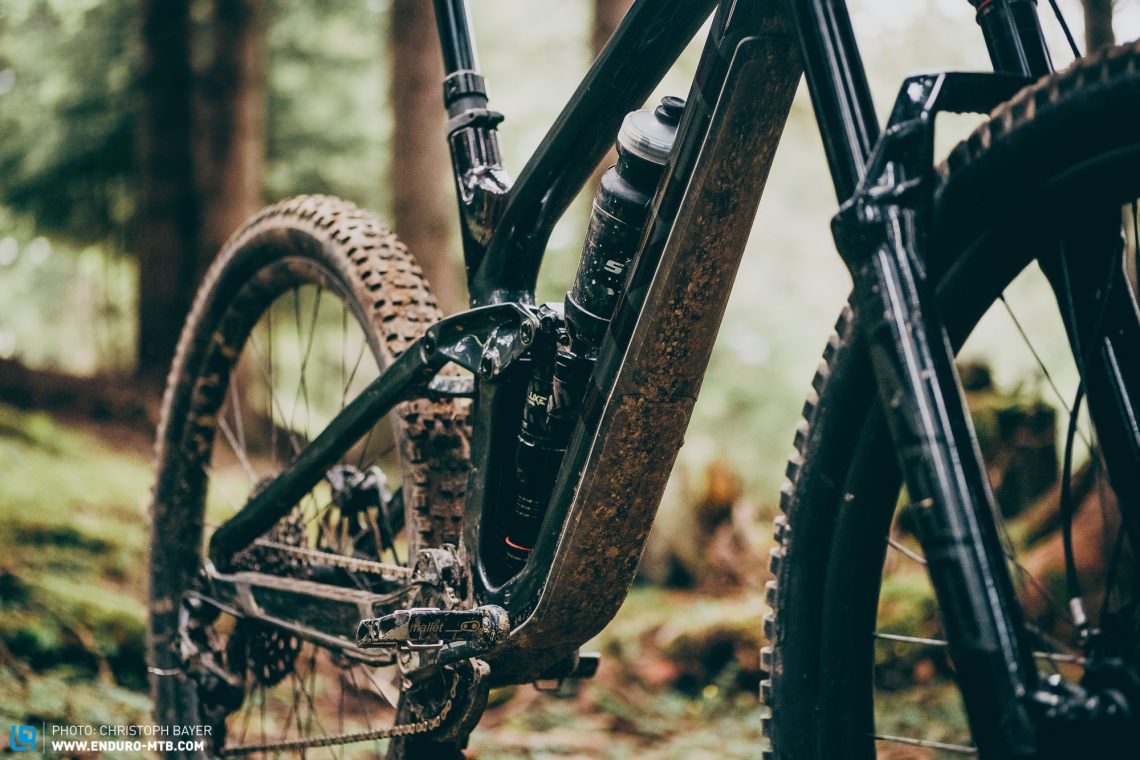
For the rear end, Trek continue to rely on the established 148 mm Boost standard that they introduced. To increase the clearance around the chainring, they choose to fit the latest SRAM or Shimano cranks with a 55 mm chain line. We wrote a separate article explaining why we think the new Super Boost Plus standard makes little sense, so we’re glad that Trek didn’t go down that route.
An analysis of the Slash’s geometry
You can tell the age of the previous Slash by its short reach and the very slack seat tube angle. Trek have updated both of these aspects on the new model. In size L, the new bike has a reach of 486 mm, 33 mm longer than previously. The chainstays have only increased by 2 mm to 437 mm. The seat tube angle has been made 1.9° steeper, but at 75.6° it’s still pretty slack by today’s standards, especially as the effective angle slackens the further the dropper post is extended. The bottom bracket is lower than its predecessor too, but the 29 mm drop isn’t extreme. The intermediate ML size, on the other hand, is an excellent addition as it will make things much easier for all those riders who find themselves between two frame sizes. In general, we like that Trek is offering the Slash in five sizes, thus making an optimal fit available to as many riders as possible.
The geometry at a glance:
An overview of the various slash models.
Trek are offering the new Slash in two aluminium models and three carbon versions. The 9.8 and 9.9 carbon models are further split between versions with a SRAM or a Shimano drivetrain and different colours, including a completely customised paint job thanks to Trek’s Project One concept. Pricing for the new range starts at € 2,999 for the Slash 7. However, the most attractive model for most riders will be the € 3,499 aluminium Slash 8, which leaves little to be desired in terms of its components. The most affordable carbon Slash is the 9.7, retailing for € 4,499. Topping the range is the 9.9 XTR Project One bike for € 9,099. Both the carbon and aluminium frames are available separately for € 3,999 and € 2,499, respectively. Compared to the complete bikes, this doesn’t seem like a very sensible option for most buyers.
A brief introduction of the different models
Trek Slash 7 – your entry into the range – € 2,999
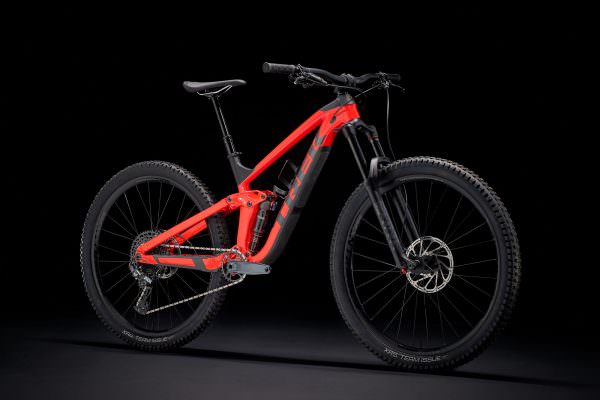
At € 2,999, the Trek Slash 7 is the most affordable model. It comes with a RockShox Yari fork, a Deluxe Select+ shock without a reservoir, an NX Eagle drivetrain, and weak Guide T brakes. Both the suspension and the brakes are compromised and we would recommend paying € 500 more for the Slash 8.
Trek Slash 8 – great value for money – € 3,499

It sounds almost too good to be true – for just € 500 more, the Slash 8 comes with a RockShox Lyrik RC fork, a Super Deluxe Ultimate shock, a GX-Eagle drivetrain and the powerful SRAM CODE R brakes! Functionally, there is nothing to complain about on this bike. Anyone looking for an attractively priced enduro bike to hit the trails at full speed should take a closer look at this model.
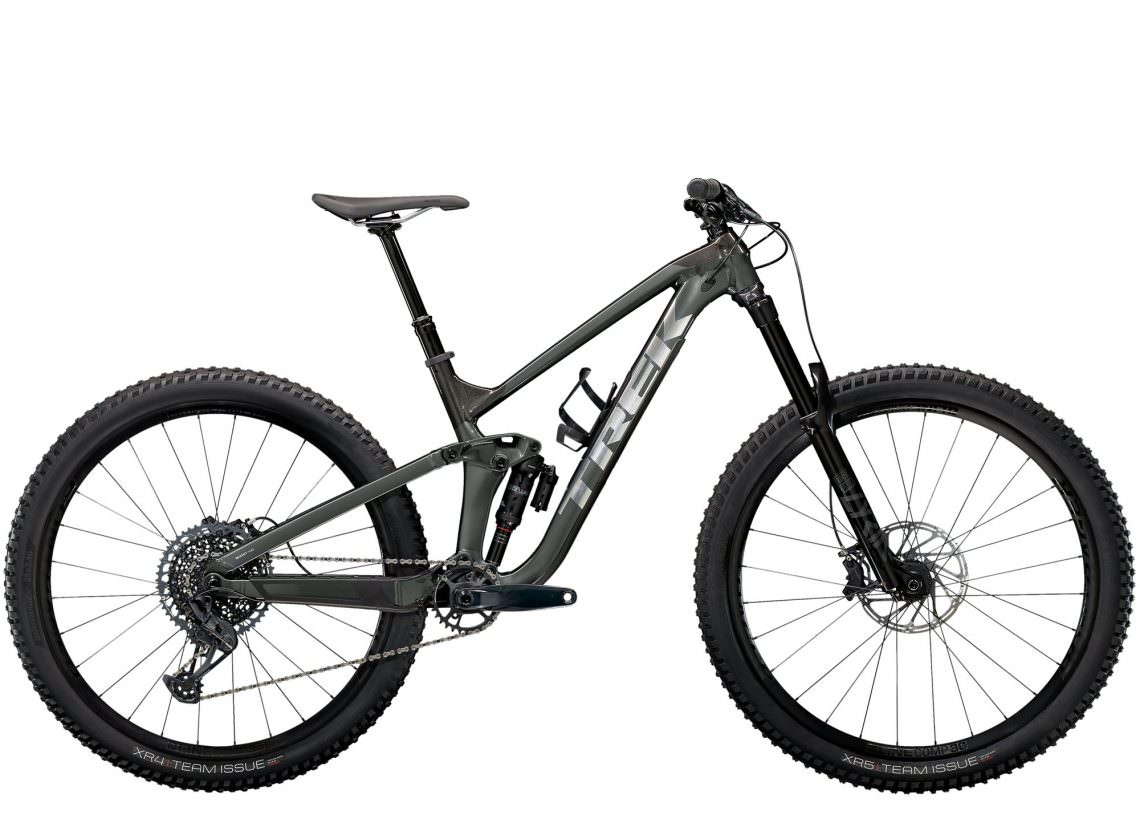
Trek Slash 9.7 – your entry into the world of carbon – € 4,499
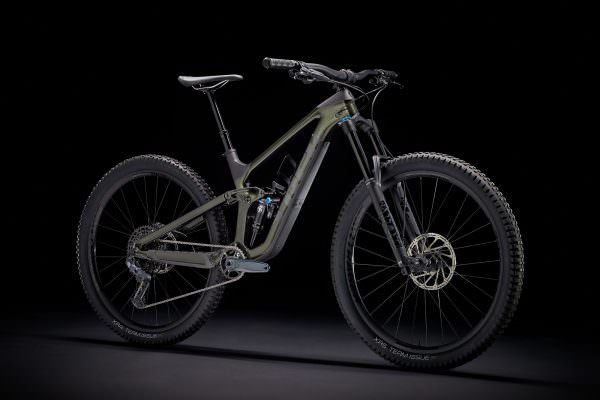
The Slash 9.7 is the only model in the lineup equipped with FOX suspension. It comes with a 36 Rhythm fork and a DPX2 shock. Shifting is taken care of by SRAM NX and GX components and a pair of SRAM CODE R brakes provide the stopping power. There is nothing to complain about on the bike, but we would personally save ourselves the additional € 1,000 for the carbon frame and spend the money on slight upgrades for the Slash 8 instead.
Trek Slash 9.8 XT or GX – available in Project One on request – from € 5,999

The Slash 9.8 is the most affordable model available in Trek’s Project One range. For a surcharge of € 500 or more, you can get a completely custom paint job. It comes either with a SRAM GX or Shimano XT drivetrain. The SRAM variant is paired with G2 brakes while the Shimano model is specced with a pair of SLX four-piston brakes. We would choose the Shimano option for the brakes. Both models feature Bontrager Line Elite carbon wheels. The suspension is taken care of by a RockShox ZEB Select+ fork and the specially developed Super Deluxe Ultimate shock. In our opinion, if you must have a carbon frame, this is the model to go for.
Trek Slash 9.9 X01 or XTR – also available in Project One on request – from € 8,499
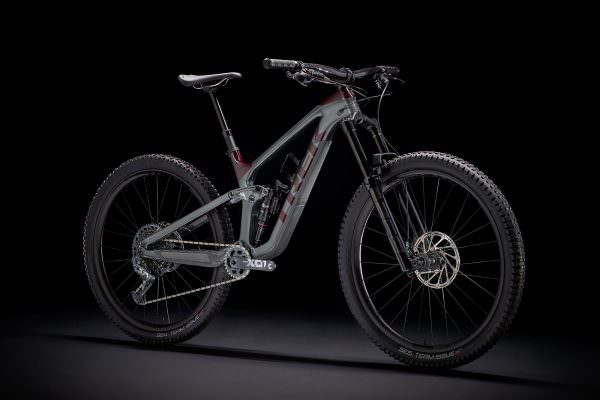
You only want the best? Then you should choose the Trek Slash 9.9. The bike is optionally available with a SRAM X01 or Shimano XTR drivetrain and can be completely customised as part of the Project One concept. The bike’s handlebars, as well as the Bontrager Line Elite wheels, are made of carbon. The suspension consists of a ZEB Ultimate fork and a Super Deluxe Ultimate shock. From a rational point of view, the extra charge compared to the Slash 9.8 simply isn’t worth it – but who of us is rational when buying a bike?
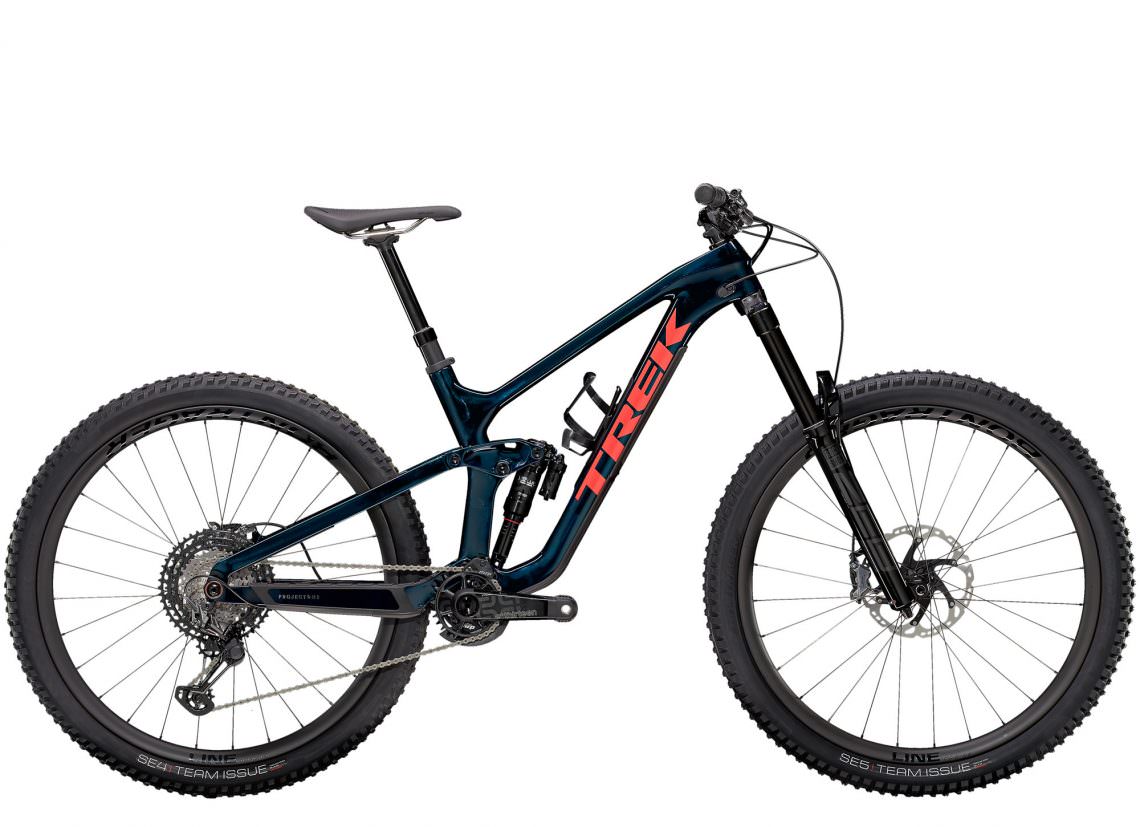
Our review of the new 2021 Trek Slash 9.9 X01 enduro bike
More than six weeks before the official launch of the new 2021 Trek Slash, we were lucky enough to do an in-depth review of the flagship 9.9 X01 model in size L. Besides riding the bike on our home trails, as usual, we also took it to the bike park in Innsbruck. As if that wasn’t enough, we included it in our enduro bike group test, which will be published in the next issue, comparing it to the hottest enduro bikes of the year. In total, the new Slash 9.9 XO1 was ridden by five experienced ENDURO test pilots.

At first glance, the new Slash looks a lot like its predecessor. However, the frame is generally beefier. As soon as you climb aboard, you’ll immediately notice a few differences. The bike is longer, the seat tube angle is steeper and the suspension feels plusher. The riding position is comfortable, neither too stretched nor too upright. However, the seat tube angle remains on the slacker side of the spectrum. Long-legged riders or anyone who regularly attempts very steep climbs will have to push the saddle as far forward as possible. By doing so, we were able to find a suitable climbing position. Riding uphill, the rear suspension is as pleasantly efficient as before, as long as you stay seated and pedal in even strokes. If that’s the case, you can leave the shock open without any problems. However, if you have to get up out of the saddle to pedal, we recommend locking out the shock first. Overall, the Slash is a capable climber and will easily get you to the top of every trailhead.
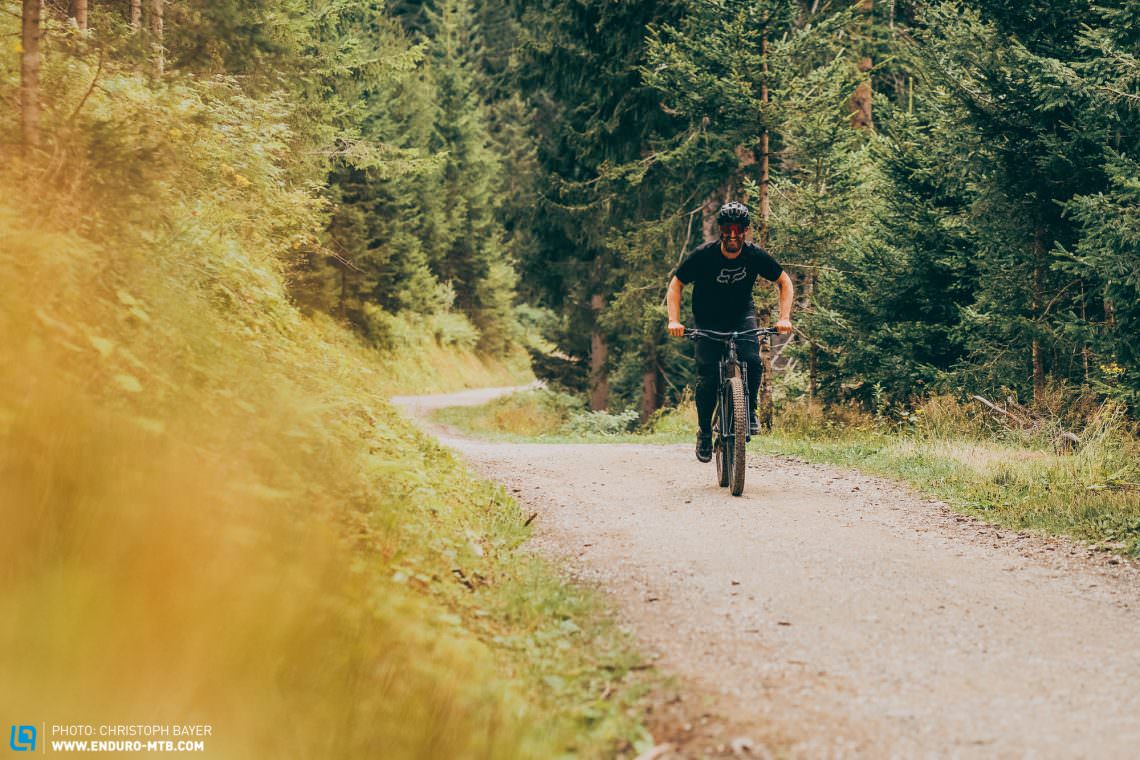
Let’s be honest – who would buy a Trek Slash for its climbing prowess? If climbing is your thing, you should perhaps take a closer look at the Fuel EX instead. Where the Slash has to deliver is on the descents and once you drop the saddle, you’ll immediately feel that you’re dealing with a completely different beast. While the previous Slash was more reminiscent of a modern, long-travel trail bike with its rather firm suspension and compact geometry, there’s no denying what the new bike was designed for. The suspension responds a lot more sensitively and literally sticks to the ground. The added reach gives you lots of freedom of movement and you’ll feel much more integrated into the 2021 Slash than on the predecessor. When the descents get steep and technical, the bike’s length keeps it very composed, holding its line and generating a lot of traction. Provided that you replace the SE4 rear tire, because it doesn’t do justice to the new Slash in any situation except for its low rolling resistance. On demanding terrain, there is room for improvement with the small 180 mm rear rotor as the SRAM CODE RSC brakes tend to fade quickly. This bike requires at least a 200 mm rotor and is even approved for up to 220 mm versions – excellent!
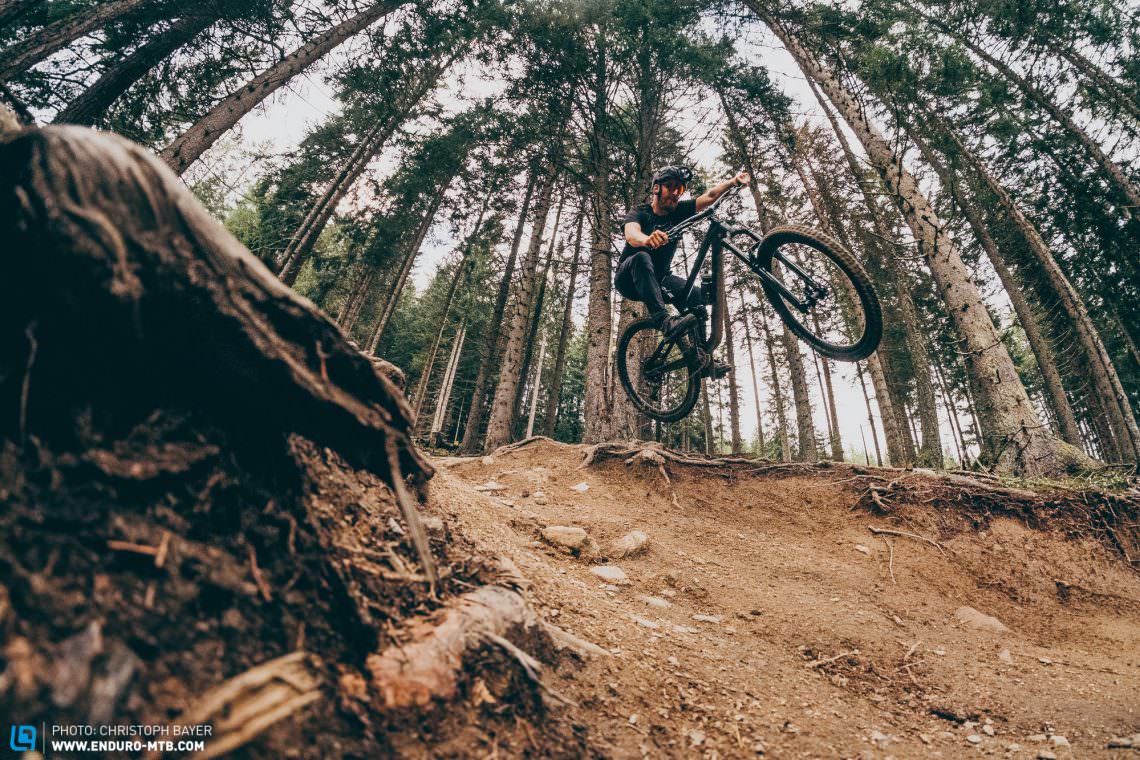
Just pull up – the Slash easily copes with botched landings!
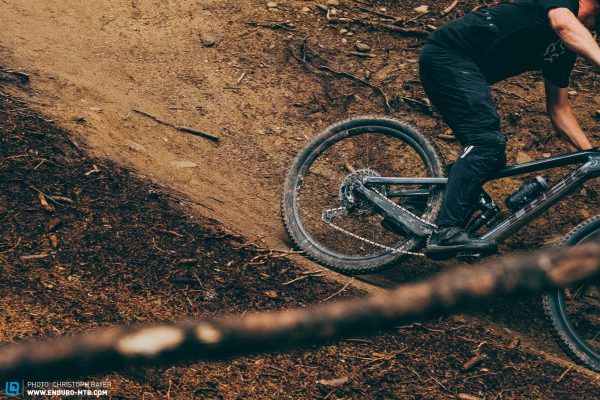
The rear end of the Slash performs sensitively with just the right amount of progression towards the end-stroke, but we got the impression that it gives up its travel to readily in the medium compression setting, making it wallow slightly in the mid-stroke. The shock offers enough support through compressions, but it’s a little wallowy in general. Installing three volume spacers didn’t do anything to help. We tried different sag settings between 25 and 30%, finding the sweet spot at around 28%. In combination with the long 485 mm reach and the compact 437 mm rear end, the Slash demands a very committed riding style through corners and for quick direction changes. If you don’t get actively involved, you’ll find yourself hanging off the back of the bike and lacking grip on the front wheel. If you set the compression lever on the shock to the plus, the bike offers more support. However, we would only recommend this setting for flow trails as it comes at the expense of small bump sensitivity as soon as you take on more natural trails. We would have liked to be able to fine-tune the shock more. If you’re not sure about the frame size, we recommend sizing down. Looking back, the ML Slash would have been a better option than the L for a rider height of around 180 cm.
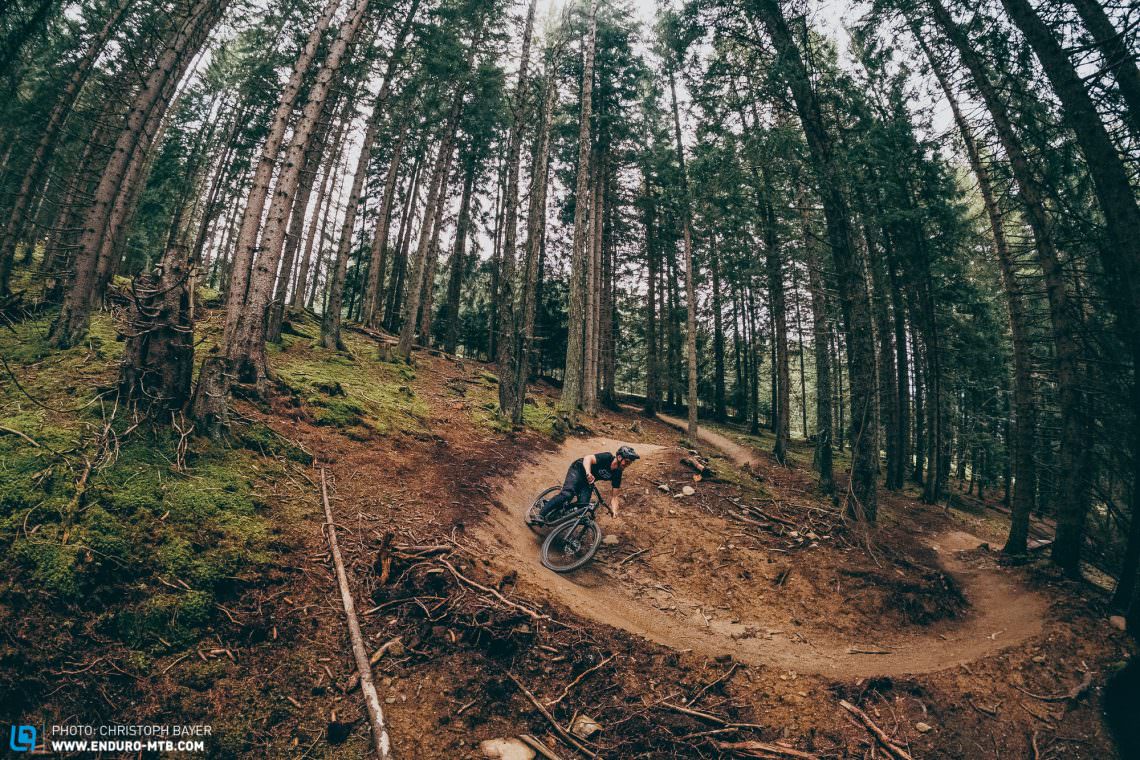
What else did we notice while testing?
The handling of a bike is key, but there are a few other factors that are important to consider before buying a new bike. One feature that makes the Slash so attractive for many enduro riders is the additional storage compartment in the down tube. You can use it to store a tube, an energy bar, a pump or simply a packet of gummy bears. Specialized were the first brand to offer this feature on their carbon bikes. Compared to the opening on the current Specialized Enduro, that of the Slash is smaller, but the latch is easier and quicker to open.
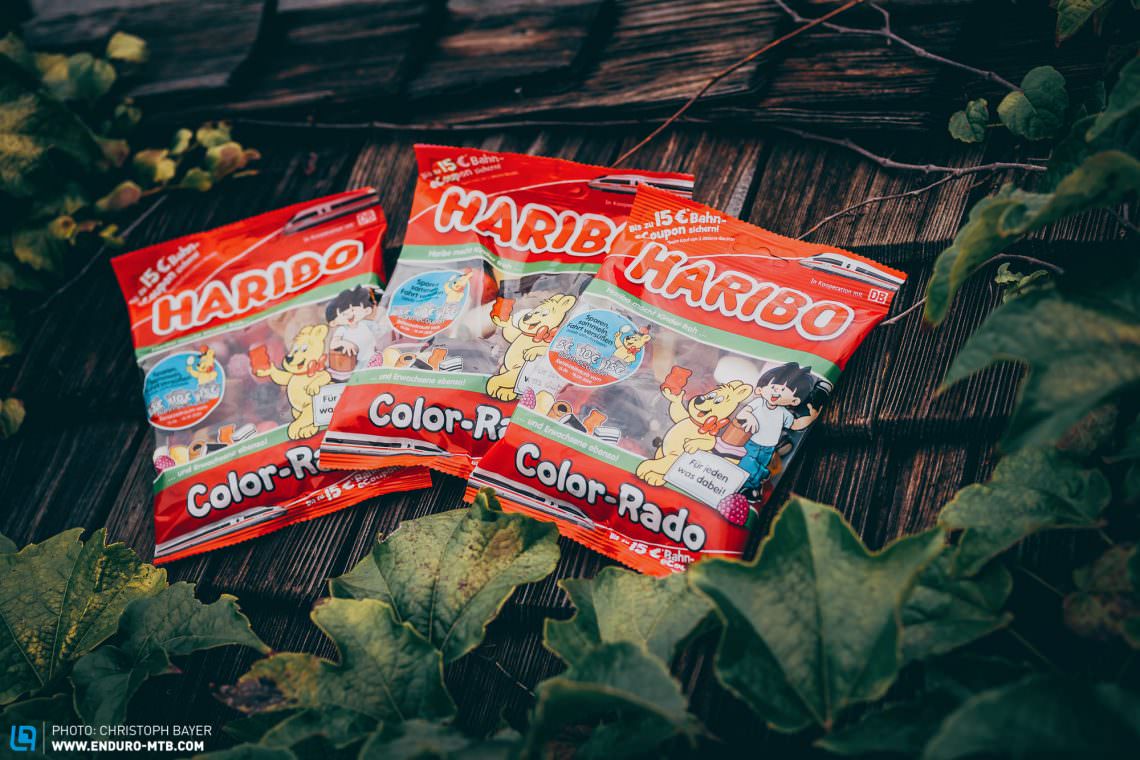
Tuning-Tipps: choose a smaller frame if necessary | larger brake rotor at the rear | Swap tires for a grippier, more robust model
There are a few other things we noticed during our test. Unfortunately, the rubber stopper that allows the thru shaft shock to fully compress came loose. It to be fumbled out of the frame. The shaft had also slightly damaged the housing of the shifter cable – no drama, but annoying. Last but not least, the Bontrager Line Elite carbon rims didn’t survive the test unscathed. While riding, we couldn’t remember encountering any hard impacts and the tires were always inflated to the correct pressure, but the rim wall delaminated from the bed. As a result, the tubeless tire would no longer stay inflated.
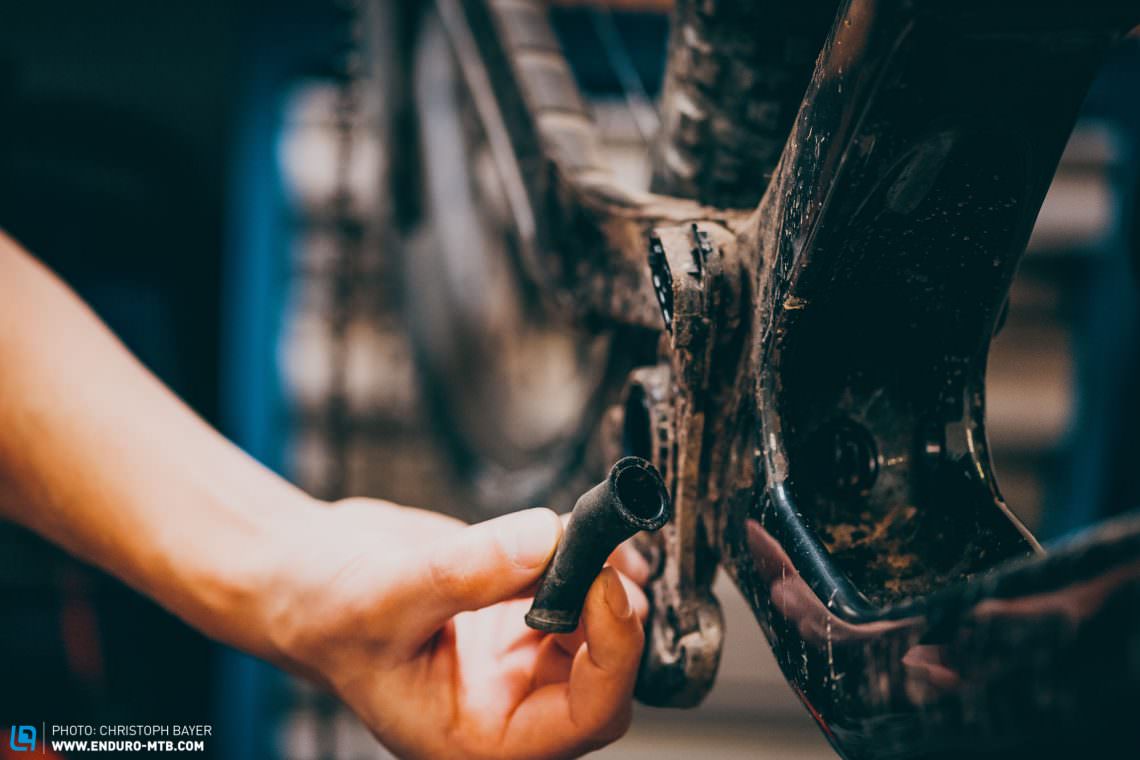
Our conclusion on the new 2021 Trek Slash
With a series of updates, Trek aim to put the Slash back on the podium. Thanks to its plush suspension and capable geometry, it’s ready to take on the most demanding trails. The integration of the storage compartment, the comeback of the threaded BSA BB and the longer dropper post are great. However, there’s little innovation and the unsuitable tires, the small brake rotor, the still slack seat tube angle and the lack of adjustability on the rear shock cloud the otherwise positive impression of the 2021 Trek Slash 9.9 X01.
- plush suspension
- practical storage compartment in the down tube (also on the aluminium frame)
- composed handling in rough terrain
- beautiful paint job
- additional ML frame size for the perfect fit
- unbalanced in flat and open corners
- minimal adjustment options on the rear shock
- tires and small rear brake rotor don't do the bike justice
More infos on trekbikes.com
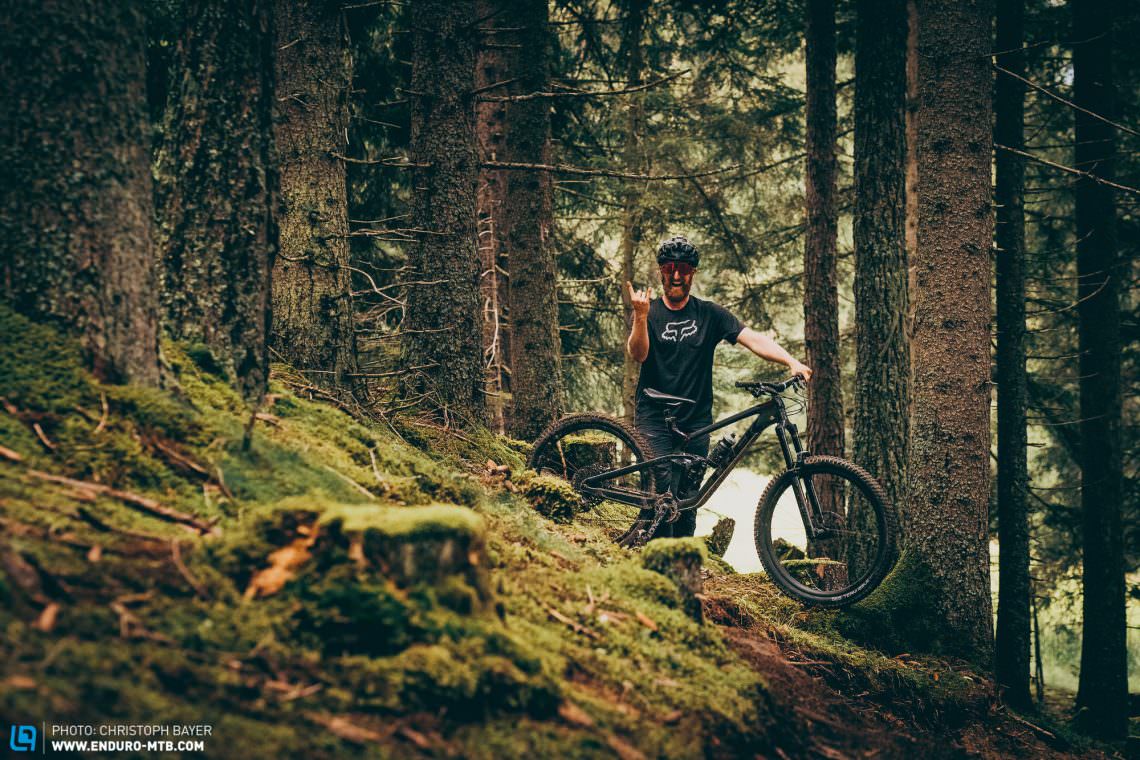
Did you enjoy this article? If so, we would be stoked if you decide to support us with a monthly contribution. By becoming a supporter of ENDURO, you will help secure a sustainable future for high-quality mountain bike journalism. Click here to learn more .
Words & Photos:
You may also like

Hidden gems: little known bike parks for maximum fun!

The San Util Whirlpool 3.5 L hip pack on test – Just a stylish bag...
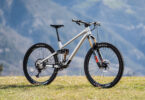
ENDURO reader survey 2024 – Win a RAAW Jibb V2

Testing the VEE Tire Co. Snap WCE MK2 and Attack FSX – Grip for the...

Three hot downcountry bikes in direct comparison

Bridge the gap – Light eMTBs aren’t just for men
2024 Trek Slash
Wheel Size:
- Size Small: 27.5’’
- Sizes Medium through XL: 29’’ front / 27.5’’ rear (29’’ compatible)
Travel: 170 mm rear / 170 mm front
Geometry Highlights:
- Sizes offered: S, M, M/L, L, XL
- Headtube angle: 63.3° (Default setting, adjustable)
- Seat tube angle: ~77° (Varies by size and geometry setting)
- Reach: 488 mm (size Large)
- Chainstay length: 434 mm (size Large)
Frame Material: Aluminum and carbon fiber versions available
Price: Complete bikes: $4,400 to $11,500
Blister’s Measured Weight: 36.6 lb / 16.6 kg (Slash 9.8 GX, Large)
Reviewer: 6′, 170 lb / 183 cm, 77.1 kg
Test Duration: 3.5 months
Test Locations: Washington, British Columbia
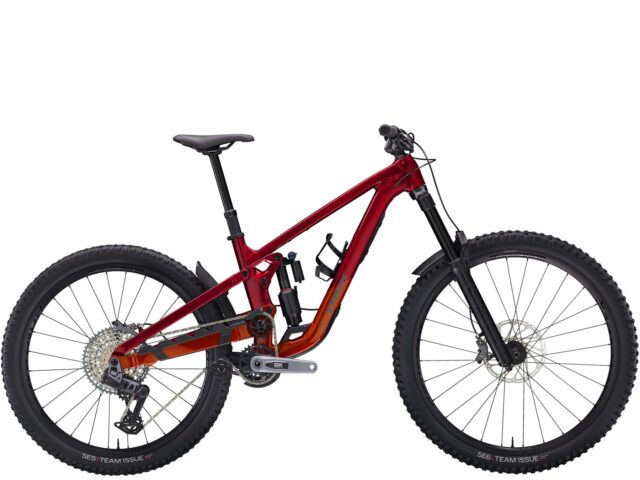
The Slash has been a longstanding part of Trek’s lineup — dating back to the days of 26’’ wheels — as their long-travel Trail model and eventually their Enduro race bike once that category emerged.
The fifth-generation Slash debuted a little over three years ago now, so it isn’t a big surprise that a new version has now surfaced. However, some of the new design details suggest it’s a more substantial update than simply “half a degree slacker here, a few millimeters longer there.”
The prior-generation Slash was arguably a touch conservative in some aspects of its design and geometry even back when it launched, but you’d be hard-pressed to say the same about the new sixth-generation bike — it’s gotten a big overhaul in just about every facet, and there’s a lot of interesting stuff going on here.
The Slash is now a 170mm-travel bike with a high-pivot layout — clear indications that it’s meant to be a big, gravity-oriented bike. But Trek makes it clear that they mean for the Slash to pedal well and climb efficiently, and say it’s intended to be confidence-inspiring for all sorts of riders on rugged descents, not a super game-on bike for only the hardest chargers out there. But what has Trek done to make that happen? Let’s check out the new Slash.
[And for a bunch more on the new Slash, including its design goals and how Trek went about achieving them, check out Ep.186 of our Bikes & Big Ideas Podcast with the lead engineer on the project, Matt Yerke.]

Like the fifth-generation Slash, the sixth-gen one is offered in your choice of an aluminum or carbon fiber frame, in sizes ranging from Small through XL with an ML snuck in the middle. It uses Trek’s longstanding ABP suspension layout — essentially a linkage-driven single pivot with a pivot between the chainstay and seatstay that’s located concentric to the dropout, to give a floating brake mount akin to a Horst link bike.
The big visual change is that the suspension layout has been reconfigured to feature a much higher main pivot, necessitating the use of an idler pulley to reign in the interaction between the rear suspension and chain forces, both in terms of anti-squat and pedal kickback. That idler pulley is on the larger side for high-pivot bikes (19 teeth) and is mounted to the chainstay substantially offset from the main pivot. This is in contrast to Trek’s Session DH bike, which mounts its idler concentric to the main pivot; that said, some of Trek’s athletes have been spotted riding what looks to be a prototype chainstay on the Session that moves the idler to a more Slash-like spot below and behind the main pivot.

Trek co-developed a lower chain guide specifically for high-pivot bikes, in collaboration with MRP, in order to increase chain wrap around the chainring, improve chain retention, and mitigate derailleur clutch movement (and in doing so, improve small-bump sensitivity from the suspension). That guide actually came out a while ago as the “MXg” and is designed specifically for high-pivot bikes such as the Slash. It includes an integrated bash guard and features a larger-than-average 14-tooth roller to reduce how much the chain has to flex, thereby keeping drivetrain drag to a minimum. It bolts to the lower two mounts of a set of ISCG-05 tabs (the Slash includes all three, though it’s not compatible with conventional upper chain guides due to the idler pulley); an integrated upper guide over the idler is included. The Slash is designed around a 55 mm chainline crank (as featured on SRAM’s new Transmission groupsets ) and uses a threaded bottom bracket shell. Despite the extra pair of pulleys, the Slash takes a standard 126-link chain in all sizes apart from the XL (which needs 128 links, due to its longer chainstays — more on those below).
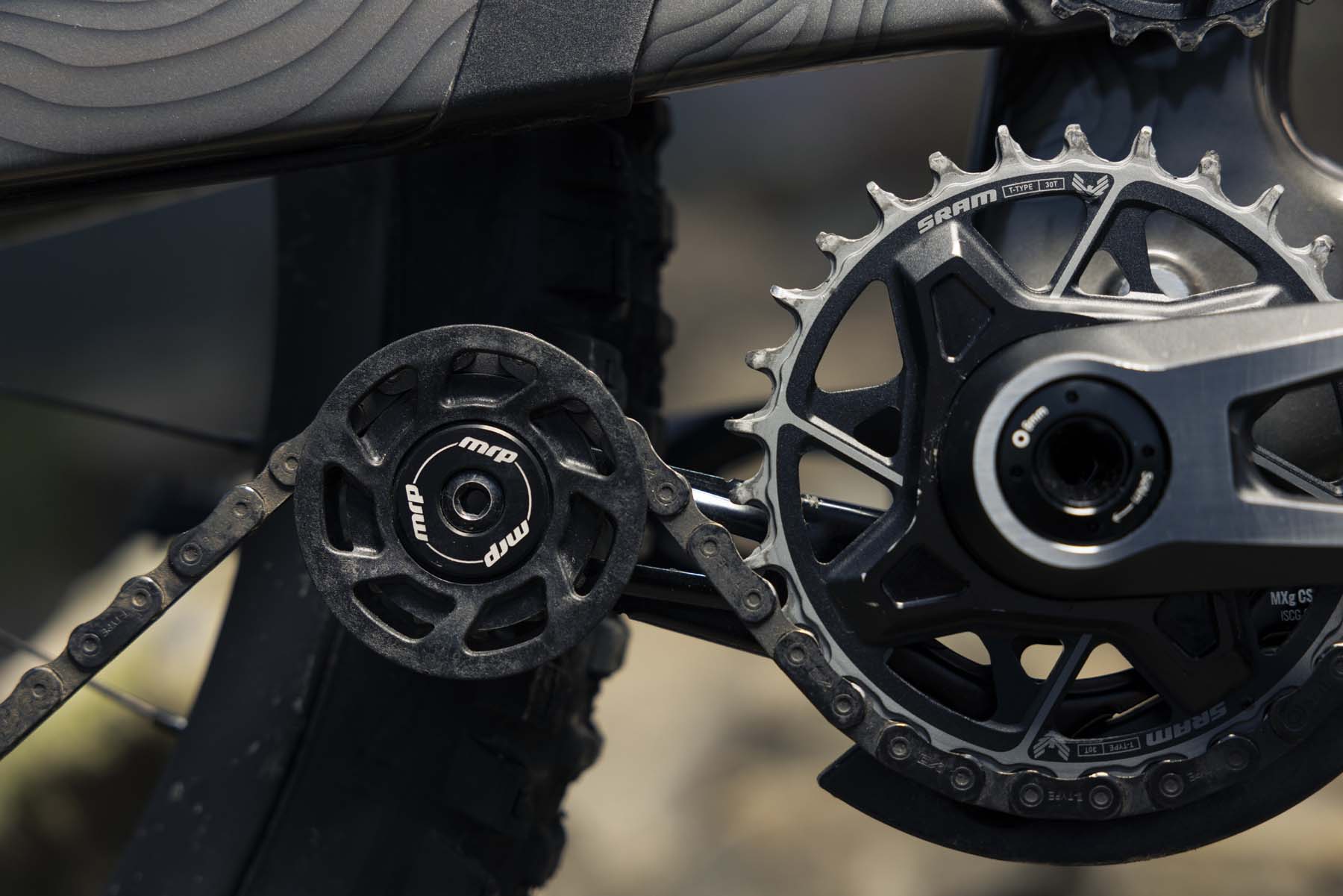
[It’s not labeled in this graph, but Trek says that the published numbers are in a 30/21 gear ratio, with the center of gravity sitting 800 mm above the bottom bracket.]
A flip chip in the sixth-gen Slash’s lower shock mount toggles between two different leverage curve settings, producing either ~20% or ~25% of progression in generally straight lines. A 230 x 65 mm shock produces 170 mm of rear wheel travel and the funky through-shaft shock used on the prior-generation Slash is no more, replaced by a standard RockShox Vivid on most of the complete builds (more on those below). Air shocks are spec’d throughout, but Trek says coils work just fine, too.
Speaking of the lower shock mount, it’s a bolt-on part that can be swapped to toggle between a 27.5’’ and 29’’ rear wheel on the size Medium through XL frames, paired with a 29’’ front wheel. The Small frame gets 27.5’’ wheels at both ends to keep the stack height in check for shorter folks. Interestingly, all the builds and sizes (Small excepted) come in the mixed-wheel configuration, only, with the 29’’ shock mounts sold separately for folks who want to make that conversion.
To round out the frame adjustability, Trek also offers offset angle-adjusting headset cups to toggle between three different headtube angle settings, as previously seen on the Fuel EX and Fuel EXe Al. Bikes ship with the neutral cups installed; the offset ones are available separately. The upper cup is a drop-in installation, but the lower one is a press-in affair.
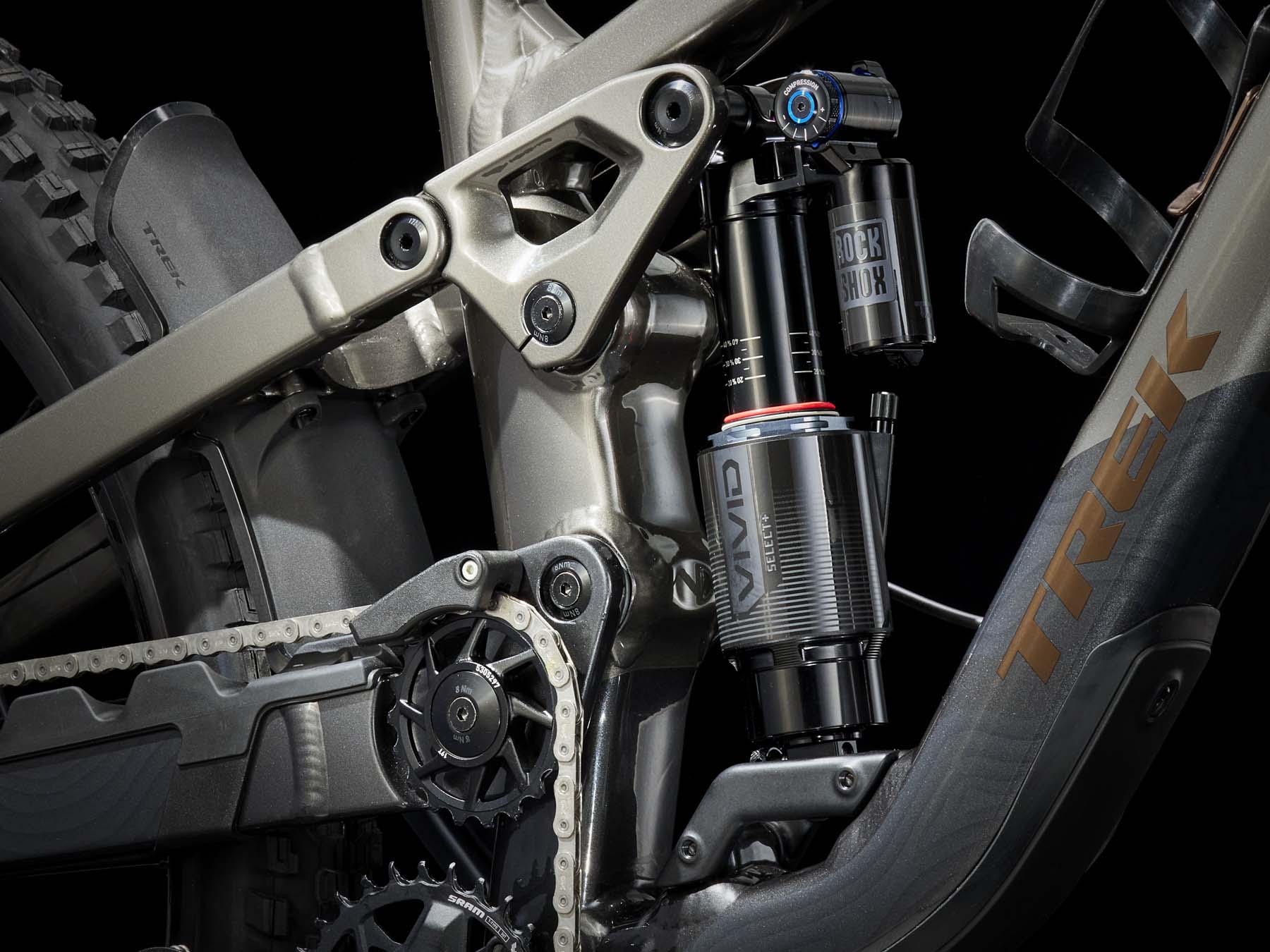
Trek was one of the first companies to offer in-frame storage on mountain bikes, and the new Slash continues the trend with a hatch under the water bottle mount on all frame sizes, in both the aluminum and carbon fiber frames. Cable routing is fully internal, with ports for the rear brake on both sides of the head tube, for folks who run their rear brake on the left side. The Slash features ample rubber guards on the chainstay, seatstay, and downtube, with the downtube guards bolting on for easy replacement should they get damaged. Trek says they’ve also applied a layer of an impact-resistant film underneath the paint on the carbon frames to further protect the frame from damage. A bolt-on rear fender is included as well, though Trek says it’s only compatible with a 27.5’’ rear wheel — there’s not enough clearance with a 29’’ one.
Trek specs the Slash with a 170mm-travel fork, but says that a single-crown fork up to 190 mm travel can be used if you want to go that route. Dual-crown forks, on the other hand, aren’t currently approved, though Trek says that they simply haven’t tested them enough to say for sure either way, so it’s possible they’ll be condoned at some point in the future. Trek has also done away with the Knock Block steering-limiting headset on the new Slash, and single-crown forks easily clear the downtube.
Fit & Geometry
Trek offers the Slash in five sizes, Small, Medium, ML, Large, and XL, with the reach ranging from 430 mm to 508 mm in roughly 20 mm increments. The headtube angle is 63.3° for the Medium frames on up (the Small steepens very fractionally to 63.5°). The effective seat tube angle is around 77° (varies slightly by size), with a still-pretty-steep 74° actual angle for the whole size range. There’s no kink in the seat tube on the new Slash, so dropper post insertion has been greatly improved — Trek says you can bottom a 200 mm post to the collar on a Medium frame. The chainstay lengths now vary by size, with the Small starting at 429 mm and the XL topping out at 439 mm; the Medium comes in at 429 mm, and the ML and Large share 434 mm stays.
All of those numbers are in the stock geometry configuration (i.e., neutral headset cup, mixed wheel sizes on Medium and larger sizes, dual-27.5’’ wheels on the Small). Going to a full 29’’ configuration on the sizes that support it steepens the headtube and seat tube by 0.2°, adds almost 6 mm to the chainstay length, and increases the reach by a couple of millimeters. Installing the offset headset cups either steepens the headtube angle by 0.8° or slackens it by 0.7° with fractional changes to the other geometry numbers.

[There’s a typo in Trek’s listed geometry charts, above — the reach on the XL frame in the mullet configuration should be 508.1 mm. And for the full range of charts, including with the offset headset options, check out Trek’s website.]
Those are really nice-looking numbers for a modern Enduro bike. If anything stands out as being a little bit unusual, it’s the fairly short chainstay lengths in the 27.5’’ rear-wheel settings. That said, it’s worth bearing in mind that the high-pivot layout and notably rearward axle path that it produces means that the Slash’s stays are substantially longer at sag, and continue to grow as it cycles deeper into the travel. That’s also why the chainstay length changes so much between the 27.5’’ and 29’’ rear-wheel configurations, and it’ll be interesting to see just how much the different rear-wheel options impact the ride of the Slash. We’ve got a set of the optional 29’’ rear wheel shock mounts for our test bike and will be finding out.
Trek offers the Slash in seven complete builds, with pricing ranging from $4,400 to $11,500. There’s a mix of SRAM and Shimano drivetrains in here, but apart from the entry-level Slash 8, all builds get some variant of a RockShox Vivid shock and ZEB fork (with the exact version varying by build tier). As per usual for Trek, builds with a whole number indicate aluminum frames, and “9.X” denotes a carbon one.

- Drivetrain: Shimano XT w/ Deore crank and SLX chain
- Brakes: Shimano Deore 4-piston
- Fork: Fox 36 Rhythm
- Shock: Fox Float X Performance
- Wheels: Bontrager Line Comp 30
- Dropper Post: Bontrager Line
- Drivetrain: SRAM GX Transmission
- Brakes: SRAM Code Bronze Stealth
- Fork: RockShox ZEB Select+
- Shock: RockShox Vivid Select+
- Drivetrain: Shimano XT
- Brakes: Shimano XT 4-piston
- Wheels: Bontrager Line Elite 30 Carbon
- Dropper Post: Bontrager Line Elite
- Drivetrain: SRAM X0 Transmission
- Brakes: SRAM Code Silver Stealth
- Fork: RockShox ZEB Ultimate
- Shock: RockShox Vivid Ultimate
- Wheels: Bontrager Line Pro 30 Carbon
- Dropper Post: RockShox Reverb AXS
- Drivetrain: Shimano XTR w/ e*thirteen LG1 Carbon crank
- Brakes: Shimano XTR 4-piston
- Drivetrain: SRAM XX Transmission
- Brakes: SRAM Code Ultimate Stealth
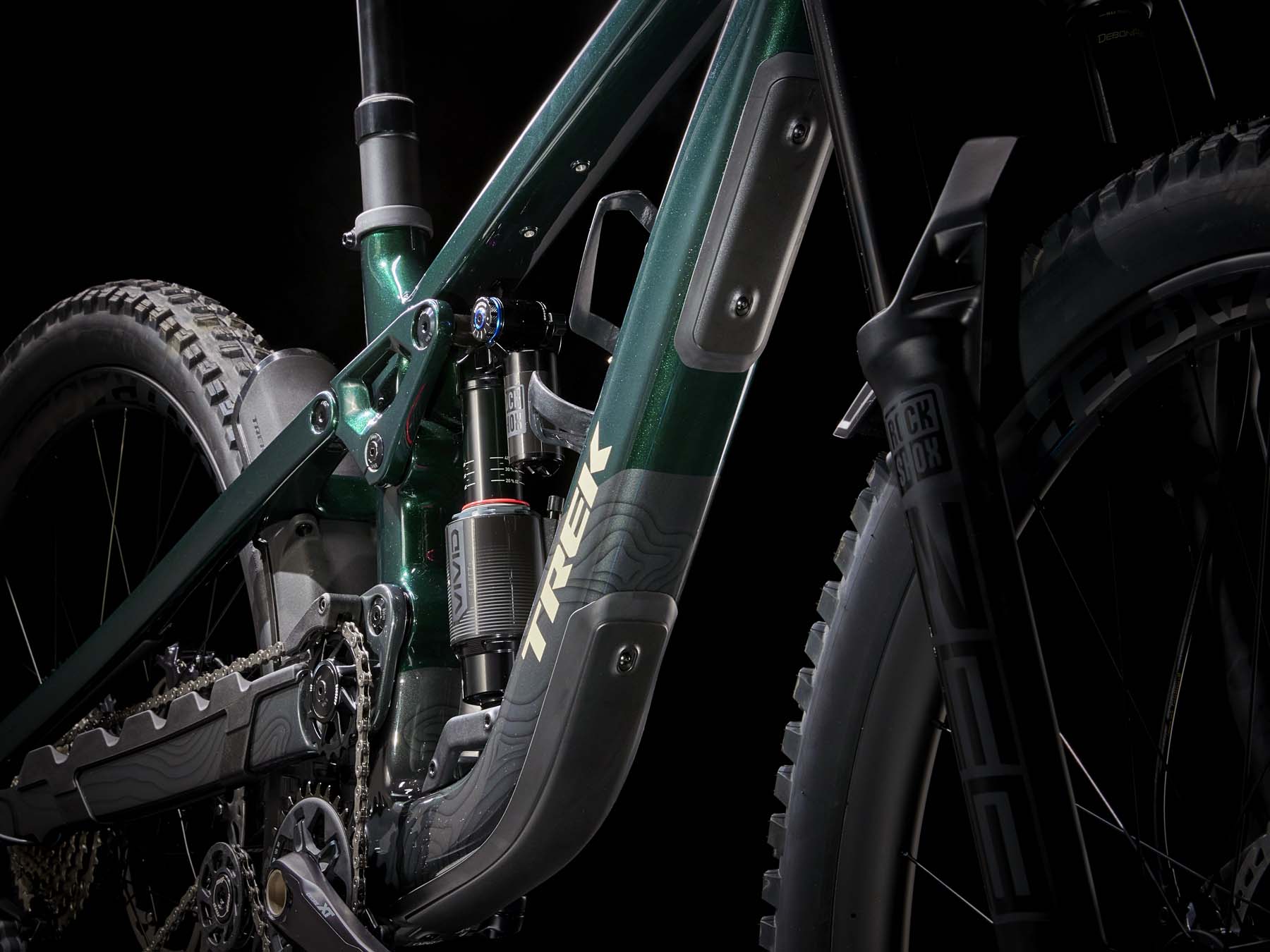
Some Questions / Things We’re Curious About
(1) The new Slash clearly looks to be a true, modern Enduro bike, with geometry and suspension numbers that should make it quite stable and composed at speed. But how versatile is the Slash, and how well does it pedal? Is it an ultra-planted sled of bike (a-la the Norco Range) or is it more well-rounded than that?
(2) How does the Slash stack up against many of the other high-pivot Enduro bikes that have been flooding the market of late, including the Norco Range , Forbidden Dreadnought , Nicolai Nucleon 16 , Cannondale Jekyll , Kavenz VHP 16 , Contra MC , and more?
Bottom Line (For Now)
Trek’s first high-pivot non-DH bike has been a long time in the making — check out Ep. 186 of Bikes & Big Ideas for a lot more on that, including how Trek considered making the Fuel EX a high-pivot. But it’s finally here, and the new Slash looks to be a compelling take on the genre. We’ve already been spending a lot of time on the Slash and will be logging a lot more miles on it in the months to come — stay tuned for our full review.
Flash Review
Blister Members can read our Flash Review of the Trek Slash for our initial on-trail impressions. Become a Blister Member now to check out this and all of our Flash Reviews , plus get exclusive deals and discounts on gear, and personalized gear recommendations from us.
FULL REVIEW
On paper, the new Trek Slash looks like one of the more emphatically descending-oriented Enduro bikes out there, with 170 mm of travel at both ends and a high-pivot layout derived from their Session DH bike .
We’ve been spending a lot of the summer and fall on the new Slash, and it is indeed very stable, composed, and confidence-inspiring when going very fast on steep, rough trails. But is it just a big bruiser of a bike, or is it more versatile than its numbers might suggest? And how does it stack up against a bunch of the other Enduro bikes out there? The answers are pretty interesting.
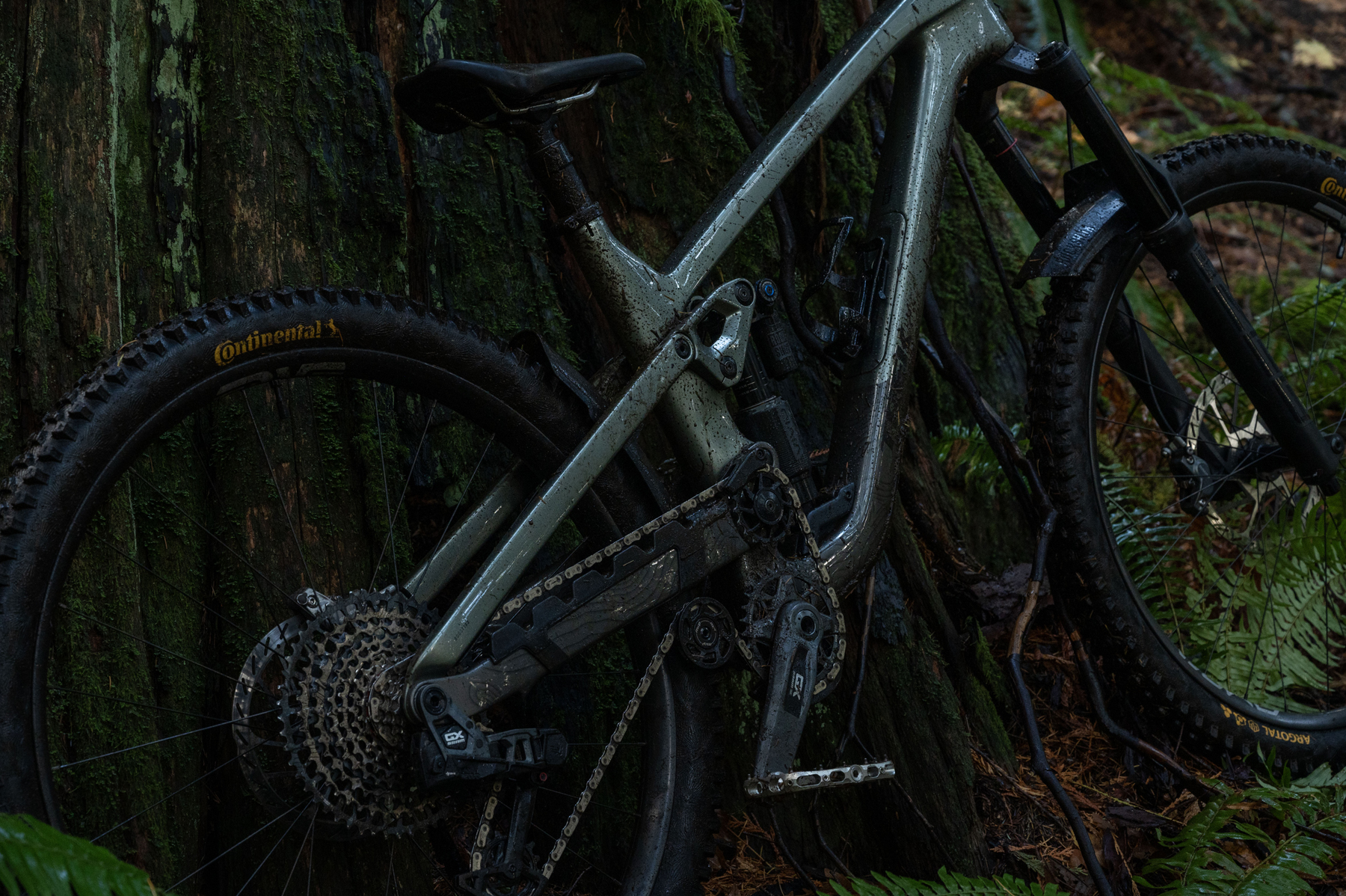
Fit & Sizing
Trek’s recommended sizing for the Slash puts me (6’ / 183 cm) squarely in the middle of the sizing band for the Large frame and outside of the overlapping regions for the M/L and XL sizes. That feels pretty on the money — I had an easy time getting comfortable on the Large Slash and wasn’t ever tempted to deviate from that size. If I were to make any changes to the Slash’s fit I might be tempted to bump up the stack height a little bit. Fortunately, the fork’s steerer tube came cut long enough to allow a hefty stack of spacers, and I wound up swapping out the stock bar for ride-quality reasons anyway (more on that in a minute); a 30 mm rise one suited me nicely.
The Slash’s seat tube is fairly steep (about 77° effective / 74° actual) and the pedaling position feels moderately compact relative to the roomy ~490 mm reach — pretty typical for a modern Enduro bike, but not to the point of feeling awkward on flatter climbs or anything like that.
I honestly don’t have a ton to say here — the Slash fits and feels pretty normal for a modern Enduro bike, and I mean that as a compliment. I had an easy time getting comfortable on it, without anything quirky or surprising going on. And given its relatively small 20 mm steps in reach between sizes, most folks should be able to find a size that works for them.
The Slash is a long-travel high-pivot bike, and even with its carbon fiber frame, carbon wheels, and not-super-heavy tires, our size Large Slash 9.8 GX review bike weighs in at 36.6 lb / 16.6 kg without pedals. Given that, I didn’t have the highest expectations for the Slash’s climbing performance when I first threw a leg over it, but it easily cleared the low bar I’d set in my head — the Slash pedals quite well for what it is. As is the case with pretty much every other ~170mm-travel Enduro bike out there, the Slash isn’t particularly interested in climbing quickly, relative to most shorter-travel “Trail” bikes, but if you’re okay with taking things a little easier and spinning (rather than sprinting) your way to the top, the Slash is impressively efficient.
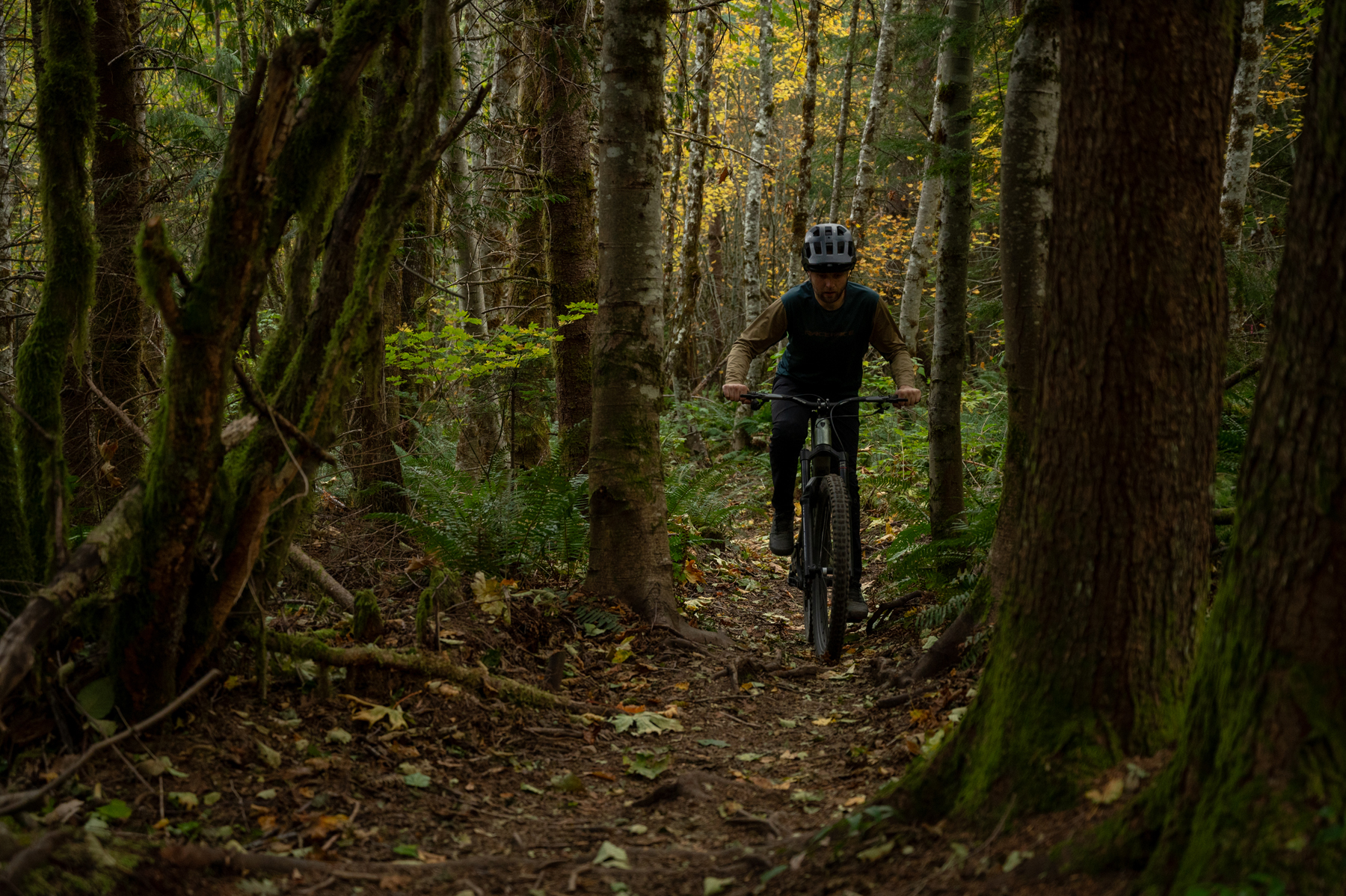
Even with the shock’s climb switch open, there’s not a ton of suspension movement under power, so long as you keep your pedal stroke reasonably smooth. The quite-firm climb switch on the RockShox Vivid adds a very solid platform if you want it. I found myself mostly not bothering with the climb switch very often — the Slash genuinely pedals quite well without it, and I found the loss of traction and comfort to rarely be worth the modest increase in efficiency. That said, I like the combination of a bike that doesn’t need a climb switch and a shock with a notably firm climb setting for the times you really want to eke out every bit of efficiency. I’m a big fan of how the Slash pedals.
As per usual for high-pivot bikes, the Slash does feel like its drivetrain efficiency falls off more quickly as the chain gets dirty and poorly lubed, relative to most bikes with a more conventional drivetrain layout. But provided that the chain isn’t too horrendously gritty and/or dry, the added drag from the extra couple of pulleys on the Slash feels modest. Straight out of the box, there was a bit of noticeable extra noise from the main idler pulley under pedaling, but that quieted down after a ride or two as things wore in, and the overall amount of drag from the Slash’s drivetrain feels very manageable.
The Slash is also a pretty good technical climber, especially from the standpoint of combining solid pedaling efficiency with very good rear-wheel traction under power. As is generally the case with long, low, slack bikes, the Slash can feel like a lot of bike to maneuver through rough, tight, ledge-y sorts of climbs, but it doesn’t feel unduly tough to manage in those circumstances — it just is a long, slack bike, and the tradeoffs there are typical of bikes with geometry numbers like that of the Slash. When things get really tight and awkward, a shorter-travel, more nimble bike is going to be easier to manage, but for the sorts of climbs where the main challenge is simply maintaining rear-wheel traction and keeping momentum, the Slash does quite well.

Especially in the stock mixed-wheel-size configuration, I did find myself wanting a bigger chainring than the stock 30-tooth one — the 30 x 52 low gear combination, paired with a 27.5’’ rear wheel, felt too low to be useful in most circumstances, and on some of the steeper climbs around here, I found myself wanting a gear between first and second. It would, of course, be an easy fix to swap in a larger chainring if you end up feeling similarly, though I (at least partially) solved the issue by swapping in a 29’’ rear wheel for much of my time on the Slash — a setup that I wound up personally preferring mostly for handling reasons, as I’ll describe in more detail below.
While the Slash does a commendable job of getting to the top under human power, it’s a bike that’s meant for the trip back down. So:
The Slash is, unsurprisingly, quite composed and confidence-inspiring when it comes to riding steep, technical trails at speed. It’s stable and planted without being so glued to the ground that it’s all that difficult to “get light” on and skip over holes and rougher bits. It also carries speed quite well when given enough pitch and space to let the bike run a bit. None of that should come as a surprise for a 170mm-travel high-pivot bike. However, the Slash does an especially good job of doing all that smash-y big-bike stuff while also being impressively intuitive and comparatively manageable in slower, tighter spots and/or when you’re taking things easier.
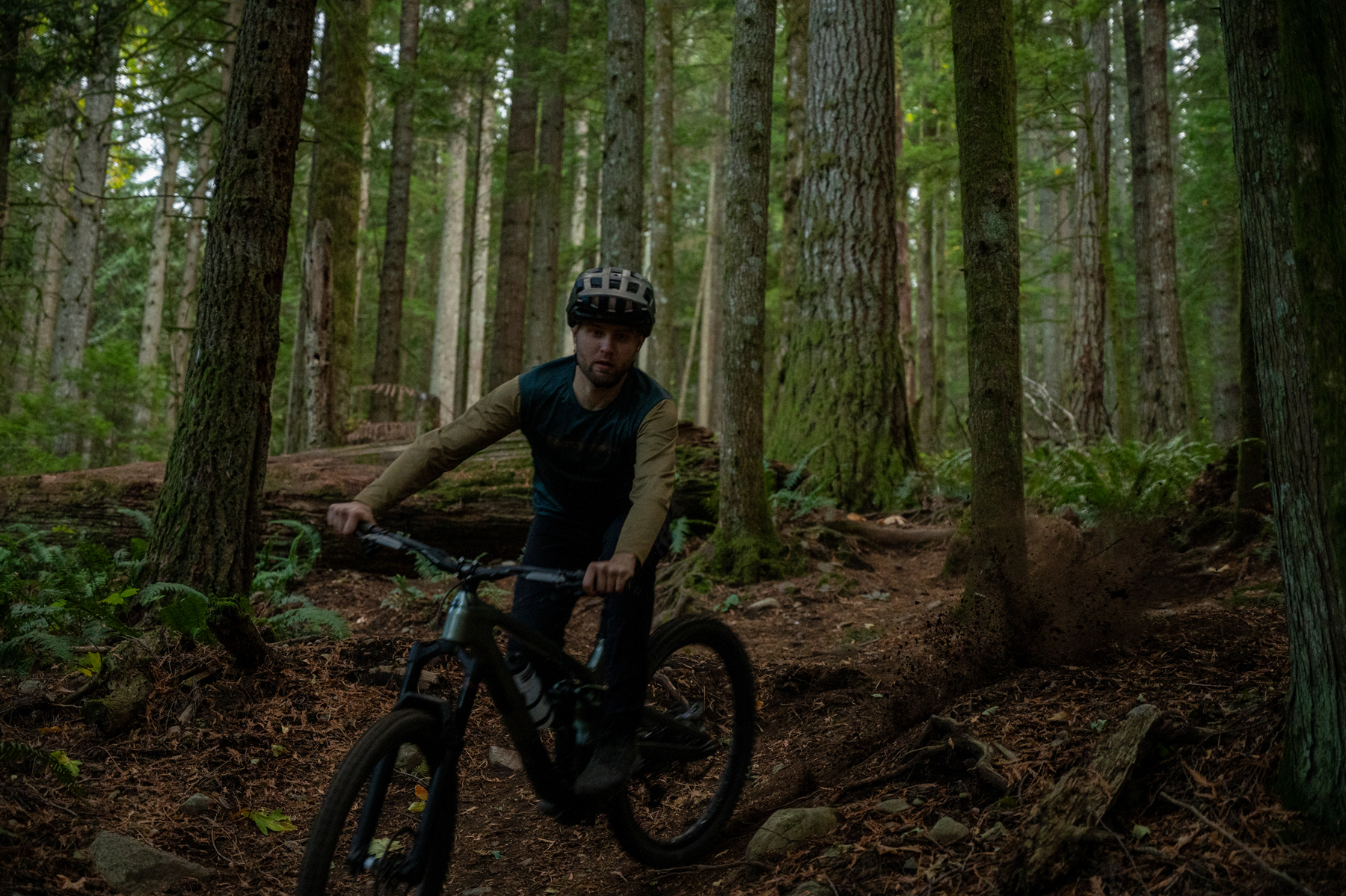
Of course, that’s all relative — the Slash is a long, slack, bike, and it’s not going to trick you into thinking you’re on a much more nimble, shorter-travel one when things get tight and awkward. But the Slash is very consistent and predictable, and that goes a long way toward making it easy to manage in a wide range of situations. The Slash’s braking performance is quite neutral, and it doesn’t have the same kinds of handling quirks that some bikes with ultra-rearward axle paths can display as the rear center (and therefore the balance point on the bike) changes wildly though the travel (e.g., the Forbidden Dreadnought ). The Slash is generally just very, very intuitive in both its handling and suspension performance.
Not needing to translate and react to what the bike is doing simply makes the Slash easy to get on and go, whether you’re flat-out charging or just want to have an easier time while riding steep, difficult trails. As with pretty much every bike in this sort of travel range, I wouldn’t recommend the Slash if you’re not going to be taking it down steep, technical descents on the regular. But for what it is, the Slash is pretty versatile, both in terms of the sorts of riders who I can see getting along with it, and in that feels more manageable than a lot of other similarly composed, stable bikes when you’re not going flat out.
The Slash also does a relatively good job of still being able to maintain speed by pumping — not a strong suit of high-pivot bikes in general — and otherwise facilitating a more dynamic, active riding style for being as stable and composed as it is when you just want to let the bike plow. That “relatively” is important — we’re talking about a big, very stable bike after all, and if you’re after a truly lively, energetic ride, you’d be better off with something lighter, shorter-travel, and more compact. But the Slash is impressively well-rounded for what it is.
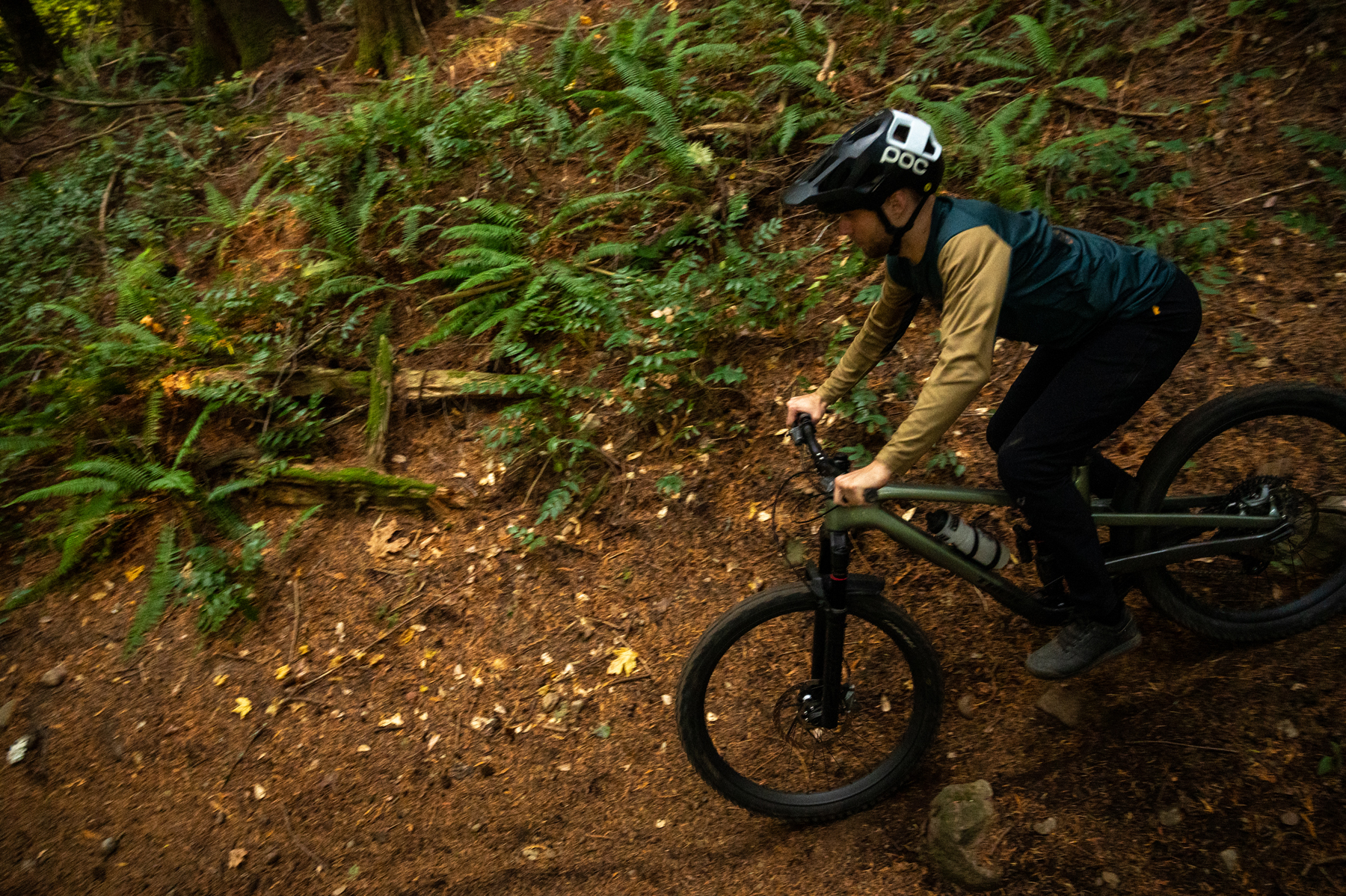
The fact that the Slash doesn’t feel exceptionally glued to the ground and eager to iron out every little bump probably helps in that regard. When you start going faster and hitting things harder, it is quite composed and confidence-inspiring in how it deals with bigger impacts and compressions, but isn’t exceptionally plush and cushy feeling on smaller chatter. It does a good job of maintaining traction on off-camber roots and the like, but does still transmit a bit of feedback about what the wheels are doing. Some bikes (e.g., the Norco Range ) iron out every bit of trail chatter more completely than the Slash. However, those bikes also tend to feel “dead,” less rewarding and energetic when loading them up to pop off something, and/or lack support through the middle part of the travel. The Slash hits a really nice middle ground there.
On that note, I found myself preferring the more progressive of the Slash’s two linkage settings; it offered improved bottom-out control and support deeper in the travel, especially when carrying speed into a really rough section of trail, where the lower progression setting felt slightly more prone to settling deeper in the travel and feeling slightly less balanced in how the bike used its front and rear travel. It’s not a stark difference by any stretch, and the lower progression setting feels plenty useable, especially for folks who want to make the Slash a little more supportive and lively in the beginning part of its travel. It’s easy to toggle back and forth, especially if you also loosen the two bolts that fasten the lower shock mount plates a turn to make aligning the shock hardware easier, and is worth experimenting with if you’re curious.
Wheel Sizes
Toggling between the Slash’s stock mullet wheel configuration and the optional full-29er setup doesn’t make for a massive change in the Slash’s character, either, but offers a relatively subtle twist on the same overall recipe in roughly the ways you’d expect. The smaller 27.5’’ rear wheel option makes the Slash a little quicker handling and correspondingly not quite as stable at speed, but I’d say the bigger difference is that it moves the Slash’s preferred balance point forward and biases it more toward being ridden with weight over the front wheel — bear in mind that the mixed-wheel configuration also shortens the chainstays considerably. The mixed-wheel setup also makes the back end quicker and easier to come around if you keep the front end weighted. The more you want to, well, slash and drift turns, the more the mullet configuration is likely to make sense; the 29er setup makes the Slash’s sweet spot feel bigger, especially if you’re riding it more centered and loading up the bike through the pedals in corners.
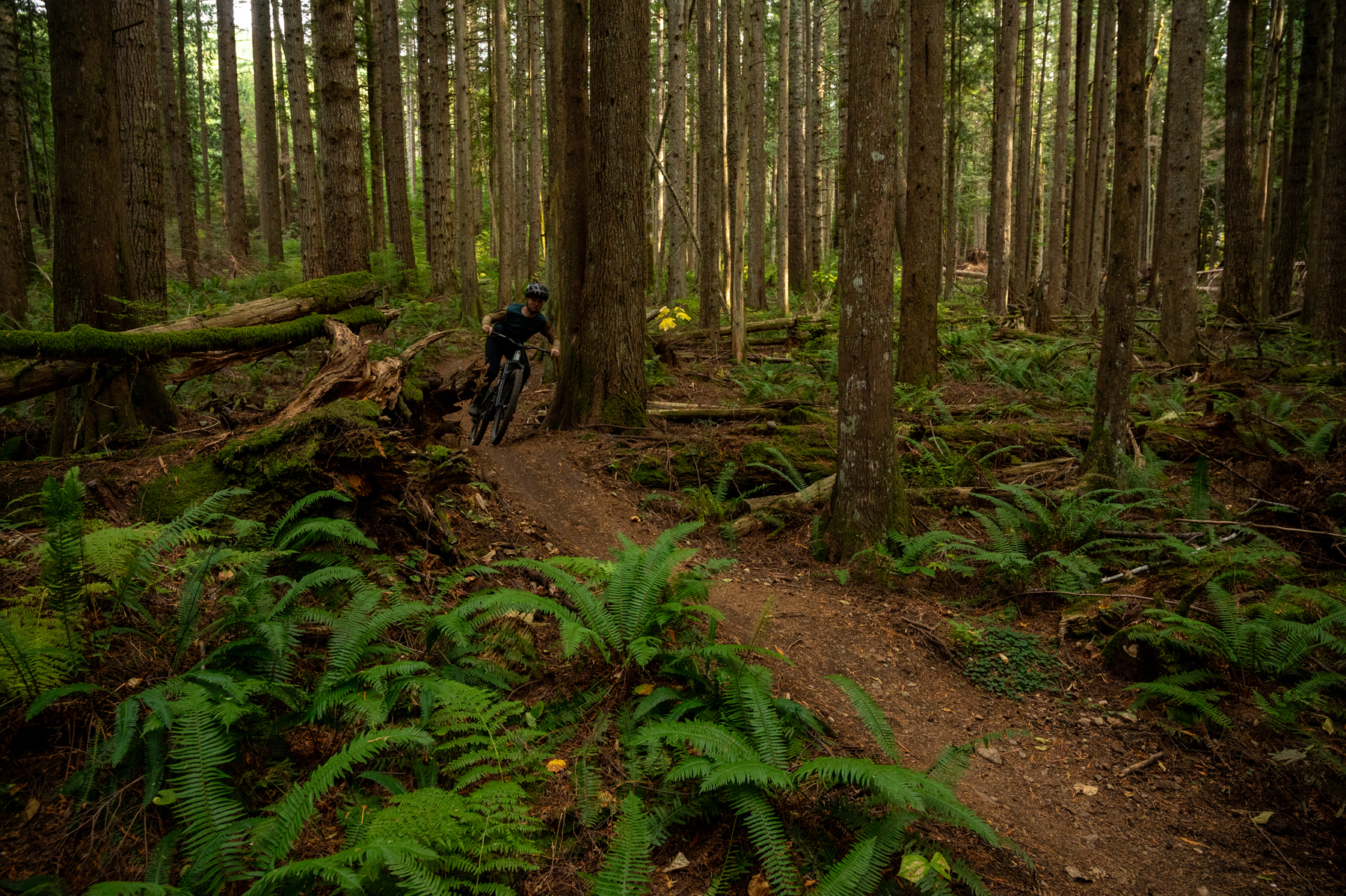
I found myself preferring the matched 29’’ wheels for that reason — they just give me a bigger platform to move around on the bike without upsetting its weight distribution between the wheels. As a result, they made it easier for me to push hard at speed. The mixed-wheel setup was more fun on trails where the Slash was borderline overkill and arguably makes it a little more versatile overall.
Still, the Slash is a big, descending-oriented bike that just happens to be a little more versatile than many other bikes that are similarly composed at speed in rough terrain, rather than a truly versatile all-rounder, so I found myself preferring to lean into what the Slash does best and emphasizing its stability and composure with the dual 29’’ setup. That said, I’m widely on record as not being the biggest fan of mixed-wheel bikes in general — especially those with shorter chainstays, and the Slash’s get substantially shorter in the mixed-wheel configuration. So that’s probably at least as much a confirmation of my general preferences as it is a reflection on the Slash itself.
The Slash’s frame (at least the carbon version; we haven’t been on the aluminum one) also feels very stiff overall, which has both pros and cons relative to some less stiff frames. Perhaps most interesting has been the Contra MC that I’ve been testing alongside the Slash (more on that below, and full review coming soon). The quite-stiff Slash frame feels notably precise and direct in how it responds to rider inputs, and very predictable when it comes to being able to feel how the rear wheel tracks through corners when there’s a lot of lateral load on the bike. The downside is that the Slash transmits more small chatter and feedback than a lot of less stiff frames (the MC being a particularly good example). The Slash’s suspension still provides good overall grip and does a nice job of maintaining traction on chattery, rooty sections, but it simply doesn’t feel quite as smooth or planted as I think it might if the frame was a bit less stiff.
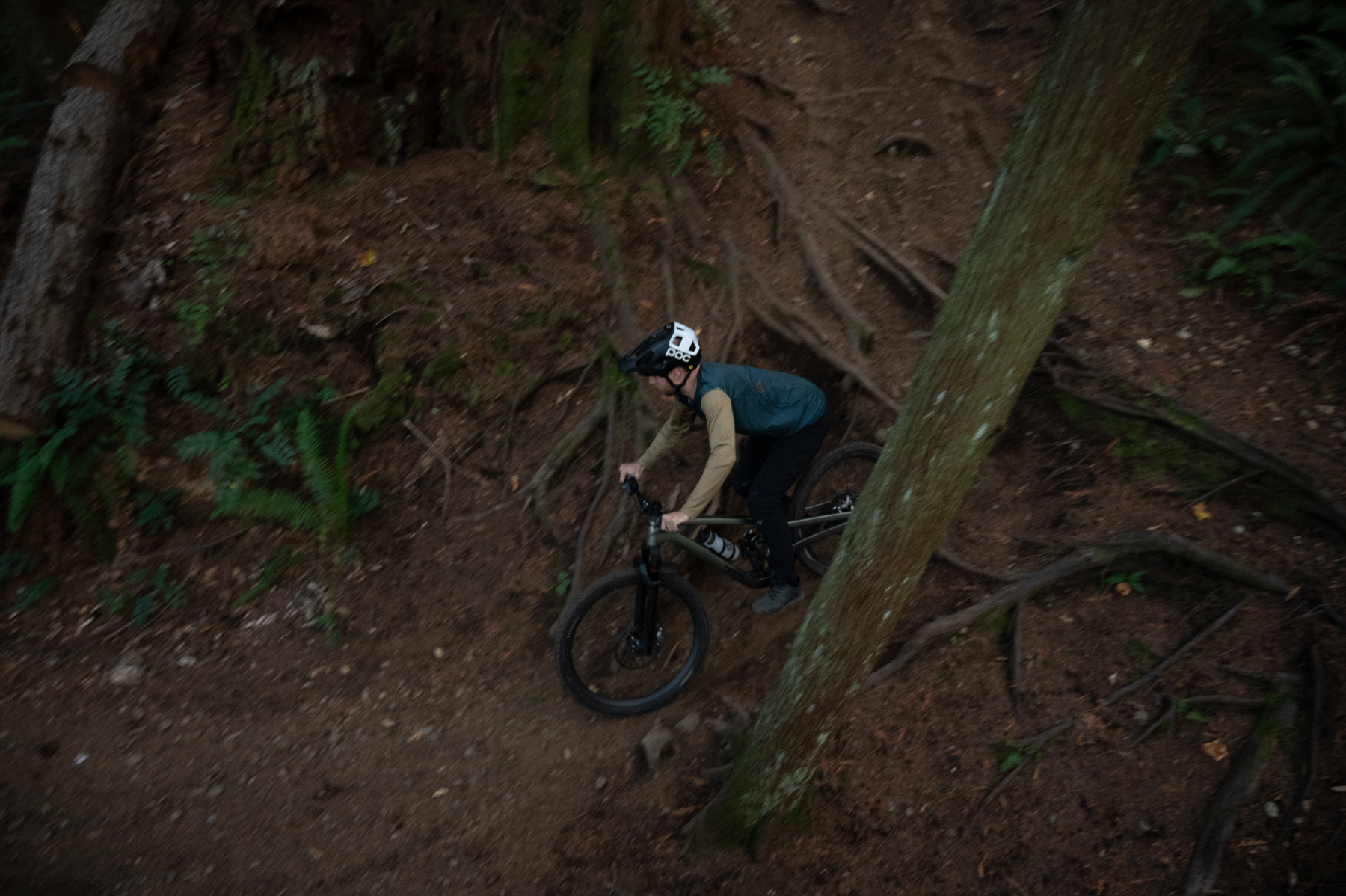
Chain Retention
And now for the elephant in the room. There’s been a lot of chatter across various corners of the internet about the Slash dropping chains left and right, and while I did drop the chain a few times over the course of my testing, it seems to be solvable, and ultimately a matter of chainguide setup. Here’s how it all went during my testing:
The Slash showed up as most review bikes do: mostly assembled, with the front wheel and handlebars removed in order to box up the whole thing. I started with the chainguide installed as it came from Trek; I dropped the chain off the underside of the chainring fairly quickly. The chainguide pulley looked like it was positioned pretty low, so I rotated it upward a bit, increasing the amount of chain wrap around the chainring, and everything was solid — no more dropped chains.
But then Trek sent a note saying they’d sent some early bikes out with the chainguide installed incorrectly, and things got a little more complicated. MRP, who make the lower guide, put together a document explaining how to set it up, with two main points: (1) there should be 7 mm of spacers between the ISCG tabs and the guide itself, to align the pulley with the chainring and (2) there should be a specified gap between the head of the chainguide mounting bolts and the end of the slot for them on the guide, setting the height for the pulley. Our bike showed up with 6 mm of spacers, and even after I’d previously clocked the guide upward, it was still quite a bit lower than MRP suggested, so I set everything up to their spec… and started dropping the chain a lot more regularly — this time off the inside of the pulley on the chainguide.
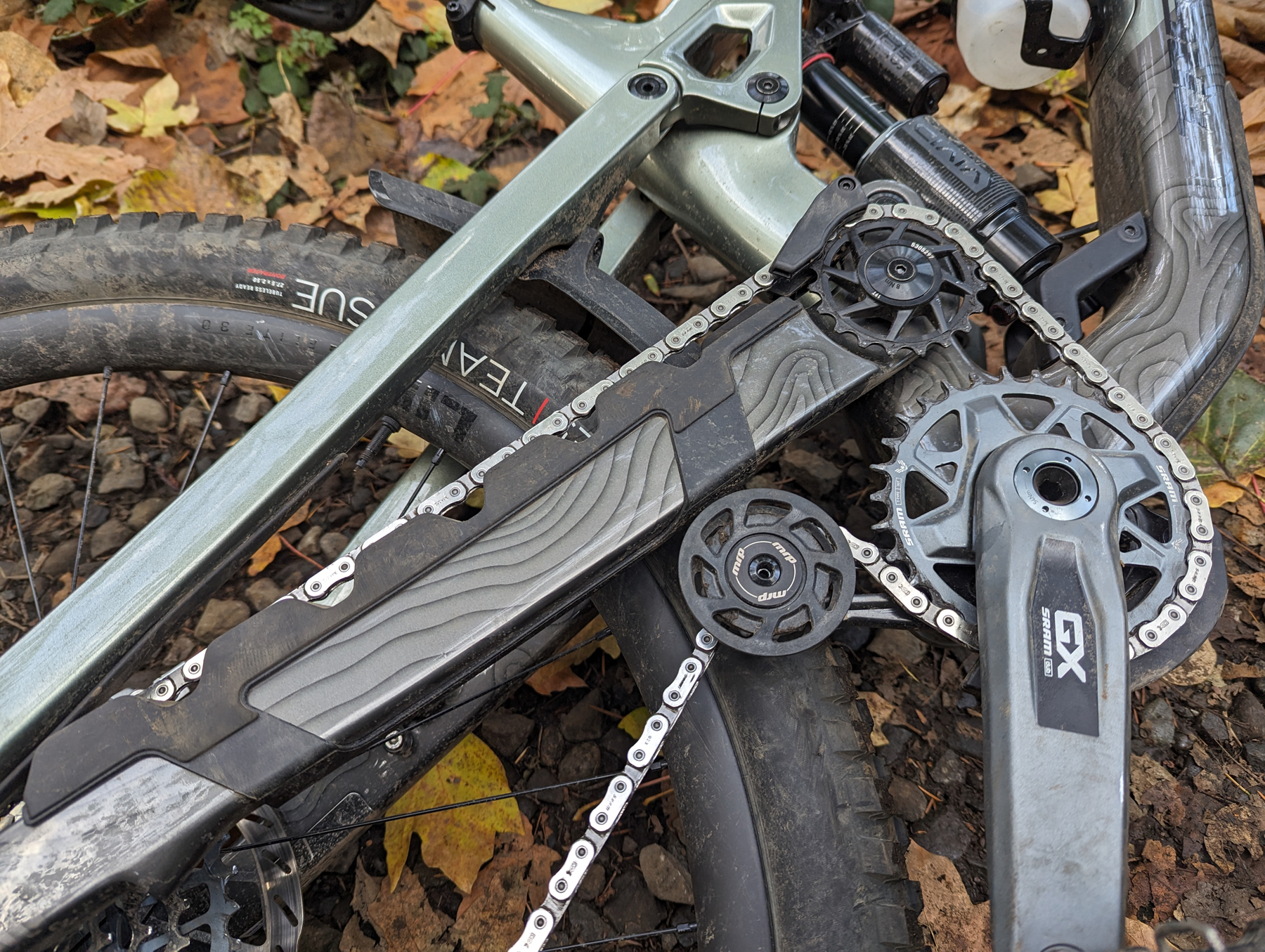
I followed up with Trek, and got word back that they’d been hasty in sending out the last set of recommendations — the 7 mm spacing was correct, but the pulley should be positioned lower than the MRP document called out, with 32 mm of spacing between the underside of the chainstay protector and the top of the pulley. And once I moved the guide back down to that setting, the chain stayed put — no more trouble again.
While that might seem counterintuitive, it makes some sense. Rotating the guide higher does increase the amount of chain wrap around the chainring (and therefore improves retention there) but also decreases the amount of chain growth along the lower run of the chain as the suspension cycles on the Slash — so that portion of the chain loses tension as the suspension compresses. Lowering the pulley a little bit increases tension on the lower portion of the chain as the suspension cycles, and for me, stopped the chain from coming off the chainguide pulley.
It’d certainly be nice if the chainguide setup wasn’t as sensitive, but there does seem to be a Goldilocks setting that works well. While I didn’t measure super precisely, the middle setting that I ran the guide in for the bulk of my testing was pretty close to the 32 mm spacing that Trek later recommended. Through that period, I had no issues with dropping the chain (even with the sub-optimal 6 mm spacing from the frame), nor did I have dropped chains after going to Trek’s stated 32 mm chainstay-to-roller gap and correcting the frame-to-guide spacing to 7 mm.
The build on our Slash 9.8 GX T-Type review bike is generally quite solid, though it’s not an especially great value for the money, at $8,000. The SRAM GX Transmission works well, and I’m a fan of the RockShox ZEB / Vivid suspension package; I didn’t miss the Buttercups (ZEB) or high-speed compression adjuster (Vivid) on the Select+ versions here too badly, as compared to their top-tier Ultimate counterparts. I was also glad to get the 200mm-drop Bontrager Line Elite dropper as compared to the 170mm-max RockShox Reverb AXS that comes on the 9.9 X0 build (I’m still very, very surprised that RockShox has yet to release a longer version). I didn’t get along with the shape of the Bontrager RSL one-piece bar / stem combo that comes on the higher-end 9.9 builds when I tested it on the Fuel EX earlier this year, and I also found the Bontrager Line Pro one that came on our Slash to be very, very stiff. I swapped it out for something more compliant and comfortable (a Spank Spike Vibrocore).
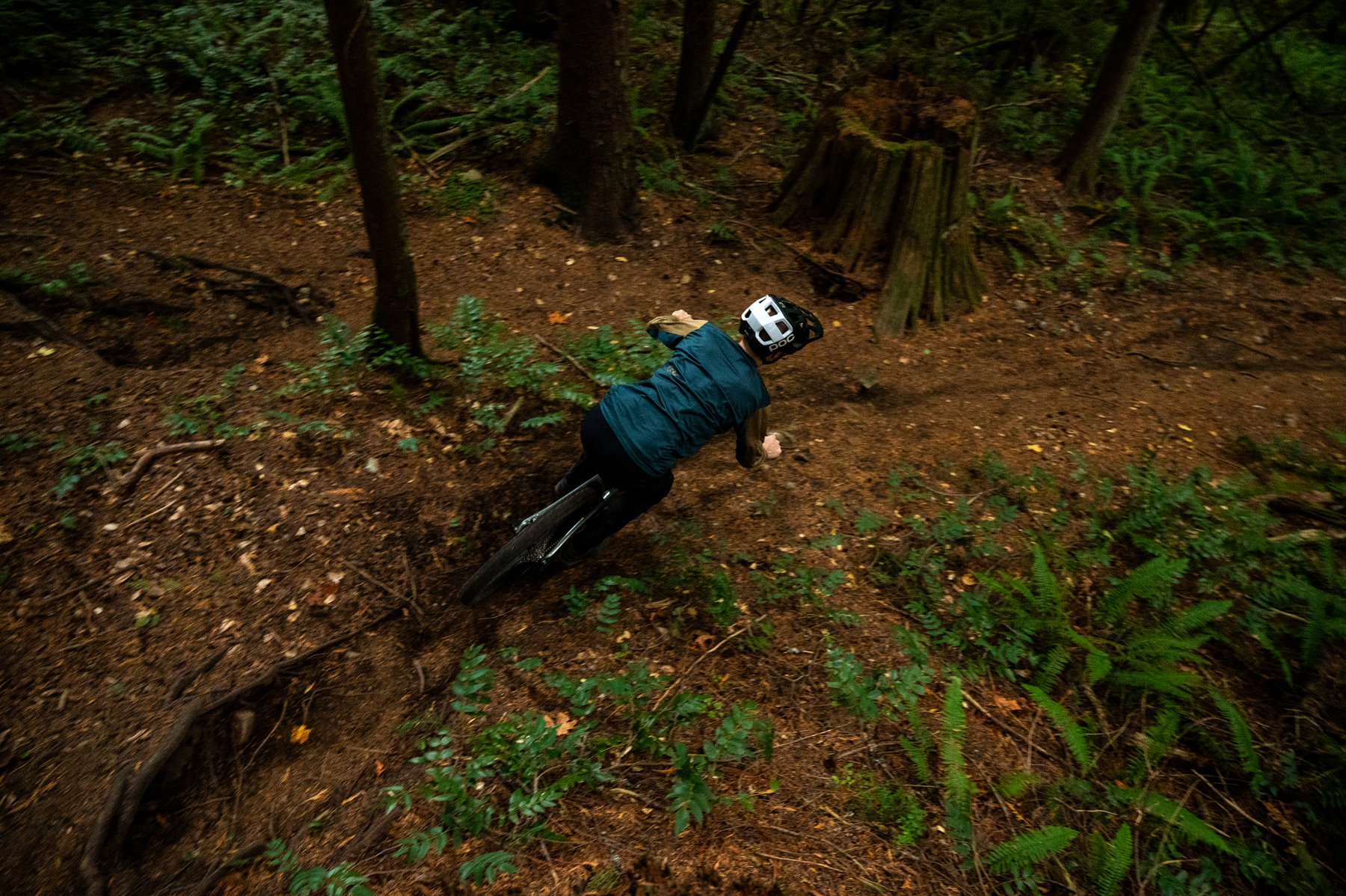
I also wasn’t a huge fan of the stock Bontrager SE6 front / SE5 rear tire combo — they work alright in drier conditions, but their relatively firm rubber doesn’t inspire much confidence on wet roots and rocks, and I also didn’t take long to put a couple of small holes in the casings. I swapped those out for beefier, grippier rubber (Continental Kryptotal DHs) for most of the test period, which felt better suited to the Slash’s capabilities.
While I was swapping wheels around, I also took the opportunity to put on a 220 mm front brake rotor. The SRAM Code Bronze Stealth brakes are a substantial improvement over the Code Rs that they effectively replace as the entry-level Code offering (I think mostly because they feature the Swinglink lever cam that the Code Rs lacked). But they’re still not the most powerful brakes out there, and the bigger front rotor helped on that front.
I would also love to see Trek offer the option for some full-29’’ builds on the Slash, at least in the larger sizes. Mullets are trendy and I absolutely get their appeal, especially for shorter folks on longer-travel bikes who could use some more tire-to-butt clearance. But as I described earlier, I personally clearly preferred the 29er setup on the Slash and it’d be nice to have the option without having to buy another wheel.
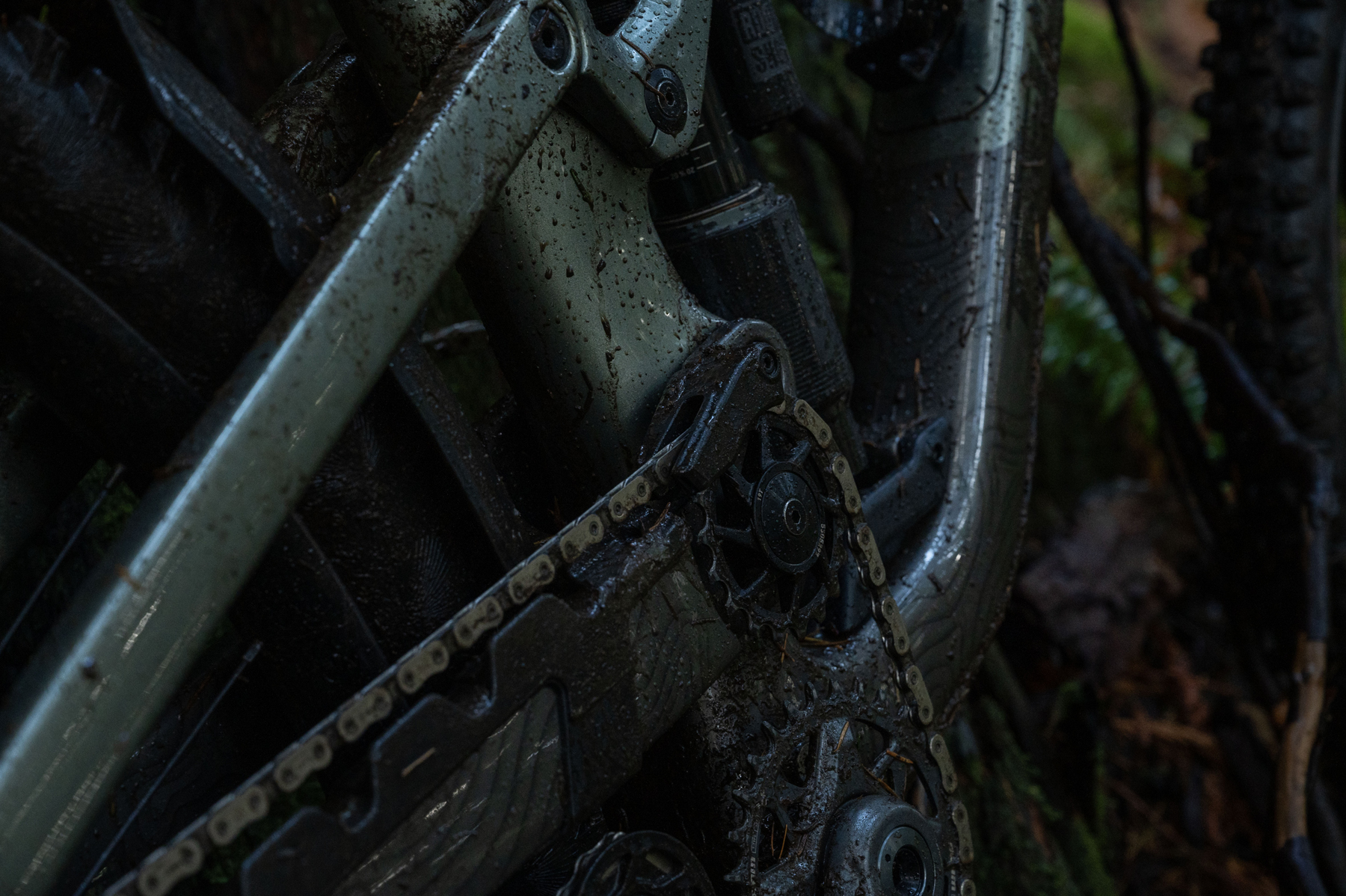
Who’s It For?
The Slash is a big, burly bike and is best suited to folks who are going to spend most of their time seeking out steep, technical descents — and try to ride them at pace. While it’s not the most engaging at lower speeds and on mellower trails, the Slash does pedal notably efficiently for what it is. It also does a very respectable job of not feeling completely out of its element if you’re taking things easier, and is generally very predictable and intuitive in its handling. The Slash would be a great Enduro race bike for folks whose preferences trend toward wanting a bike on the more stable, planted end of the spectrum, or those who just want a very confidence-inspiring bike for tackling big descents that still pedals to the top quite effectively, too.
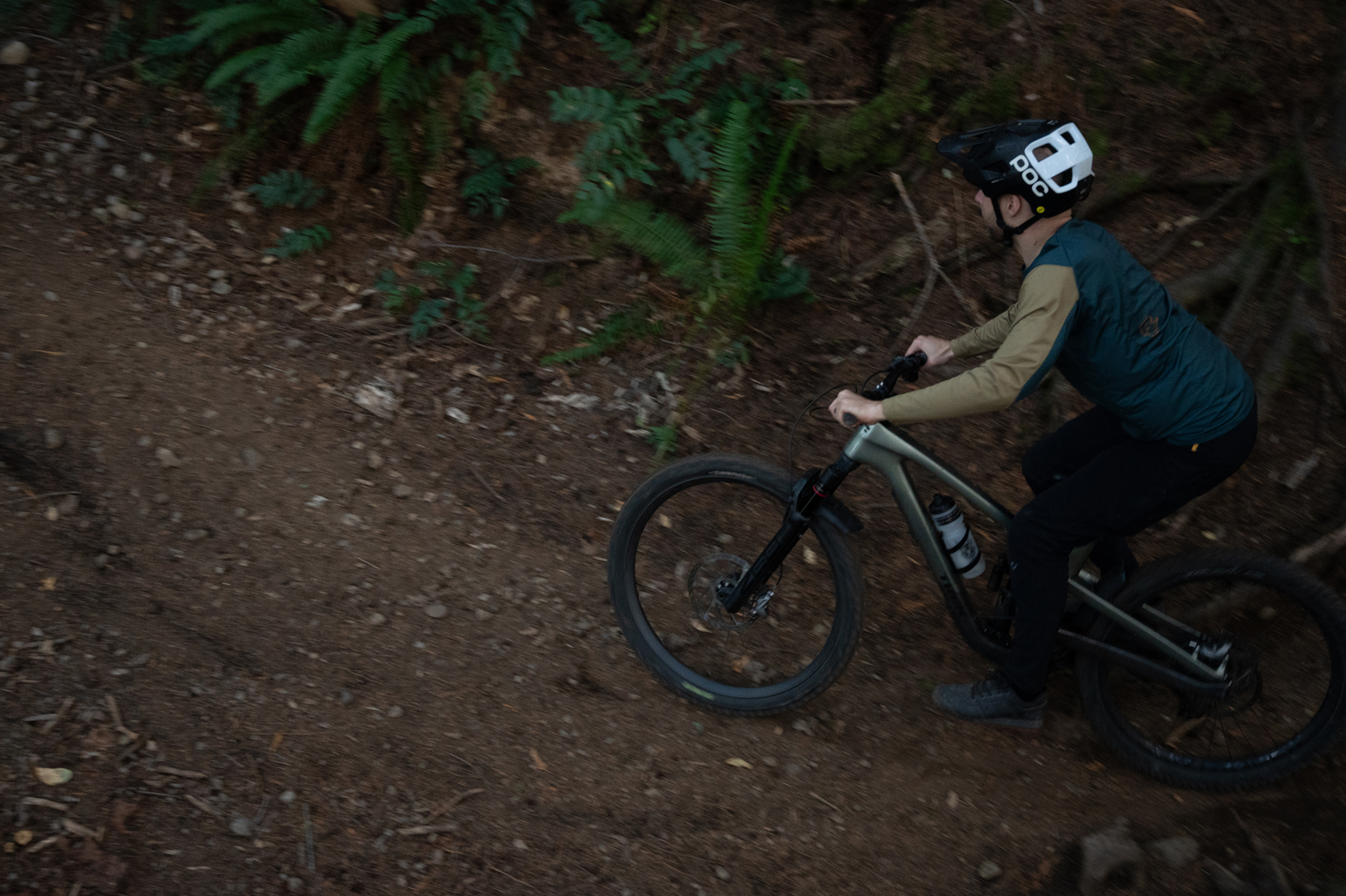
Bottom Line
The latest Trek Slash is undeniably a lot of bike — we’re talking about a 170mm-travel high-pivot platform, after all. It’s quite stable at speed, very composed and confidence-inspiring on steep, rough trails, and is less engaging on flatter, more mellow trails than most shorter-travel options out there.
But the Slash also pedals quite efficiently and does a surprisingly good job of feeling manageable in a relatively wide range of scenarios, beyond just wanting to charge on really burly descents. It would be nice to see a stock 29er option for the Slash, but as is it’s a great option for folks who want an especially stable, composed Enduro race bike, or a bike that’s particularly confidence-inspiring on very steep, rough descents while still pedaling relatively efficiently, and being a little more lively than most similarly planted and composed options, too.
Deep Dive Comparisons
BLISTER+ members and those who purchase our Digital Access Pass can check out our Deep Dive comparisons linked below. Get our Digital Access Pass to view all our Deep Dives and Flash Reviews, or become a BLISTER+ member today to get access to that and a LOT more, including the best worldwide Outdoor Injury Insurance, exclusive deals and discounts on skis, personalized gear recommendations from us, and much more.
Check out our Deep D ive comparisons of the Trek Slash to see how it compares to the Contra MC, Cannondale Jekyll, Norco Range, Forbidden Dreadnought, Canfield One.2 Super Enduro, Yeti SB160, Pivot Firebird, Santa Cruz Megatower, and Propain Tyee.
10 comments on “2024 Trek Slash”
Trek makes some great products and I’m sure they have done a ton of testing, but having owned an idler bike (cannondale jekyll), I will never own a 2 idler bike.
Nice and thorough review. I was looking forward to your comparison to the Nomad v6, any quick thoughts?
Pretty different. The Slash actually pedals a little more efficiently but is more stable at speed and less nimble / easy to throw around. And especially with the Slash in the stock mullet configuration they prefer quite different body positioning, with the Nomad favoring a much more centered, upright stance.
At a quick glance the most strikingly similar design to the Slash seems to be the Kavenz VHP 16 which was an interesting bike reviewed earlier this year. As someone interested in the Kavenz because of your exposure I’d love to know how they compare. Otherwise, another great review!
Good call, though they don’t remind me of each other that much.
The Kavenz is more lively, nimble, and generally playful feeling; the Slash is more stable, planted, and feels more focused on going fast / outright composure at speed. The Slash feels fairly manageable in tight spots and on mellower trails for what it is, but the Kavenz is quite a bit more versatile overall.
What if you could try the Kavenz with the newer longer chainstays? Seems like a lot of straight line stability and nimbleness comes from the chainstays.
I’d want to try it before I say anything definitive, but the Kavenz with the new adjustable length chainstays (and tweaked sizing — I’d probably go up to an XL on it now, especially with longer chainstays) seems really intriguing.
Exhaustive. Can you pls compare the Slash to HD6?
We’ve been trying to get on an HD6 but haven’t been able to make it happen yet, unfortunately.
Curious to know what your suspension settings were?
Leave a Comment Cancel reply
2024 Trek Slash Review | Is this high pivot enduro bike fashionably late, or just late to the party?
The not-so-minor details, 2024 trek slash 9.8 gx axs.
https://www.trekbikes.com
From $6,999 AUD ($10,499 AUD as tested)
- Incredible composure on the rowdiest terrain - Plush & well-controlled suspension - Surprisingly efficient pedalling performance - Mullet setup injects welcome agility - Loads of in-built adjustability
- Extra pulleys add complexity & noise - Tyres too flimsy for the application - Downtube storage is on the small side - Chainstay armour lacks damping - GX derailleur clutch failure
Dan reviews the 2024 Trek Slash
The Trek Slash has undoubtedly been one of the most popular enduro bikes on the market since it was first introduced back in 2011. It was late 2020 when we tested the last version, which impressed us with its buttery-smooth suspension performance and surprising agility for what was a big and burly brawler.
For 2024 however, the Slash has been completely redesigned from the ground-up. Featuring a high pivot suspension design, additional pulley wheels and a mullet setup, it is quite clearly a very different bike to its predecessor.
So how do all the changes play out on the trail? And what about those online reports of chain-dropping issues? We’ll be discussing all of that, and more, in our in-depth review of the new 2024 Trek Slash.
Watch our video review of the 2024 Trek Slash:

It eats up square edge hits for breakfast, while the neutral anti-squat and ABP platform means the back end is unencumbered by drivetrain and braking forces.

An overview of the 2024 Trek Slash
Built for enduro racing and bikepark thrashing, the Trek Slash is designed to compete with the likes of the Merida One-Sixty , Giant Reign and Canyon Strive .
Featuring an all-new frame for 2024, the Slash is now equipped with 170mm of travel front and rear. It comes set up from the factory as a mullet, though by fitting a different shock mount it’s possible to run a 29in rear wheel. The exception is the Small frame size that is purpose-built around 27.5in wheels front and rear.

You’ll still find a four-bar ABP platform, with the most rearward pivot located around the rear axle to help isolate brake forces from the suspension. Trek’s engineers have moved the main pivot almost halfway up the seat tube, which creates a more pronounced rearward axle path. To mitigate chain growth, a large 19T idler wheel routes the chain close to the main pivot. Trek claims this produces around 100% anti-squat all the way through the travel, with the goal being to reduce pedal-bob.
There’s a gazillion other features incorporated into the new Slash, including downtube storage with a second generation hatch design, bolt-on mudguards and frame armour, as well as a flip chip in the lower shock mount that offers linear or progressive suspension settings. While almost every Slash comes equipped with the new RockShox Vivid air shock, the frame is also compatible with coil shocks.

Trek Slash geometry & sizing
Just like the latest Fuel EX , the new Trek Slash incorporates modular headset cups. Complete bikes come from the factory set up in the neutral position with a 63.5° head angle, though by removing the upper headset cup and installing an asymmetric cup you can slacken that out to 62.5° or steepen it to 64.5°. You will have to purchase the asymmetric cup separately for $64 AUD however.
There are some further changes in geometry over the old bike. The seat angle is considerably steeper at around 77-78°, and Trek has also updated the Slash with size-specific rear centre lengths. This is achieved by modifying the location of the BB on the main frame, which varies the rear centre from 429mm on the Small, to 445mm on the XL.
Listed below is the geometry chart below for all five frame sizes. This shows the geometry when matching wheels are fitted (27.5in wheels on the Small, 29in wheels on the M-XL sizes). In the mullet configuration, the angles slacken by 0.2°, the BB drops by 2mm and the rear centre length shortens by nearly 6mm.

Trek Slash price & specs
There are six models in the Trek Slash lineup for 2024. Prices start at $6,999 AUD for the Slash 8, which is the only alloy model in the range. At the other end of the spectrum is the Slash 9.9 XX AXS that sells for a staggering $19,999 AUD. That’s a truly insane amount of money for a bike that doesn’t come with a mid-drive motor.
Thankfully the bike that we’ve been testing is quite a bit more reasonable. It’s the Trek Slash 9.8 GX AXS, which sells for $10,499 AUD. Despite being the second cheapest model it still features a full carbon frame, high performance RockShox suspension and a wireless SRAM GX AXS Transmission, making it an appealing package.

- Frame | OCLV Mountain Carbon, ABP Suspension Design, 170mm Travel
- Fork | RockShox Zeb Select+, Charger 3 RC2 Damper, 44mm Offset, 170mm Travel
- Shock | RockShox Vivid Select+, 230x65mm
- Wheels | Bontrager Line Elite 30, OCLV Carbon Rims, 29mm Inner Width
- Tyres | Bontrager SE6 Team Issue 2.5in Front & SE5 Team Issue 2.5in Rear
- Drivetrain | SRAM GX Eagle AXS Transmission 1×12 w/34T Alloy Crankset & 10-52T Cassette
- Brakes | SRAM Code Bronze w/200mm Centerline Rotors
- Bar | Bontrager Line Pro, OCLV Carbon, 27.5mm Rise, 820mm Width
- Stem | Bontrager Line Pro, 35mm Length
- Grips | Bontrager XR Trail Lock-On
- Seatpost | Bontrager Line Elite, 34.9mm Diameter
- Saddle | Bontrager Arvada, Austentite Rails
- RRP | $10,499 AUD

With the Slash however, the smaller rear wheel seems to help counter some that ground-hugging sensation.

Trek Slash weight
Confirmed weight for our Trek Slash test bike is 16kg, without pedals and with the tyres set up tubeless. That’s notably higher than the claimed weight of 15.65kg, and it’s also quite a bit heavier than the previous Slash we tested, which came in at 14.56kg.
Still, it’s in the ballpark for a 170mm travel enduro bike these days, especially one that’s built around a high pivot design.
It’s all pretty burly too, including the Bontrager Line Elite carbon wheelset that weighs a bit over 2kg. These wheels are a great match for the Slash, being quite stiff and also hella durable.
We can’t say the same for the Bontrager tyres however, which at around a kilo each are too lightweight for a proper enduro bike. Unless you want to swap the tyres straight away, we’d recommend at least fitting an insert into the rear wheel to lessen the chance of puncture pain.

Testing the 2024 Trek Slash
We put the Trek Slash into the hands of our enduro tester Dan, who’s aggressive riding styles regularly leaves corners and berms shaking in their boots. Having spent a load of time on the previous version, Dan was perfectly placed to see how this new Slash would compare.
Before putting tyres to dirt however, we had some concerns around the chain-dropping issue that had been reported by reviewers and users online. We spoke with our local Trek dealer, which informed us about a service bulletin that had been issued to address this problem. It turns out that bikes from earlier production runs were being assembled with incorrect spacing for the chainguide, as well as too big of a gap between the chainstay and the lower pulley wheel.
Although our test bike had previously been ridden by another media publication, upon closer inspection we discovered that neither the chainguide spacing or lower pulley wheel were set up correctly. After sourcing the right spacers, a few adjustments with a hex key was all that was required to get everything lined up to spec.

Since making those adjustments we have not once dropped the chain during six weeks of abusive testing. Even still, Trek has informed us that it has developed a replacement upper idler that features taller teeth for more positive engagement with the chain. The replacement idler should be available in early 2024 and will be sent out to Trek dealers to be installed on existing bikes, free of charge.
As such, most customers shouldn’t encounter any chain dropping problems if the bike has been set up properly from the shop. If you are having troubles with your Slash, be sure to check out the service bulletin .
How have you found the fit of the bike Dan?
I’m 183cm tall and the size Large feels spot on. The 488mm reach is almost identical to the previous Slash, but you’re not nearly as stretched out since the seat tube is quite a bit steeper. I still needed to slide the saddle forwards a bit to get a comfortable seated climbing position, but not nearly as much as the old bike.
With that saddle adjustment the Slash fits perfectly. The climbing position is very comfortable, and on the descents you’re nicely centred, giving you a feeling of being ‘in the bike’.

What about the contact points?
The Trek Slash comes standard with 820mm wide bars, which I chopped down to a more sensible 780mm. The Bontrager carbon bars have always looked a bit funny to me, but once I rolled them so that the grips were flat they were fine. They are quite stiff, so you’re likely to notice some feedback at cruising speeds. That said, we’re glad to see a conventional two-piece setup rather than the one-piece carbon cockpit that comes on the higher-end Slash models. Adjustments are easier and it’s obviously a lot cheaper if you want to change out either the stem or bars to suit your preference.
I also swapped the grips straight away, as I can’t get on with the flared alloy lock-rings on the outboard side of the Bontrager grips. I feel like they really dig into the outside of my palms, since I ride with my hands on the very edge of the bars.

Talk us through your suspension setup
Setting up the suspension on the Slash is made relatively easy thanks to Trek’s online calculator . This gives you a great starting point for pressures and rebound settings, all of which are based off your weight. Furthermore, the RockShox Vivid shock has gradients anodised onto its stanchion to help you eyeball sag.
For my 83kg riding weight I needed 209psi to hit the recommended 30% sag for the rear shock. I found Trek’s suggested rebound setting (12/20 clicks) to be too fast for my preference and ended up slowing it down to just five clicks out. I backed the compression adjuster off to its most open position (-2) and ran the Hydraulic Bottom Out dial in the middle of its range.
I set up the Zeb fork as recommended by both Trek and RockShox with 63psi in the DebonAir+ spring. Again I ran a slower rebound setting than suggested, ending up on a 7/18 clicks. I backed off the high-speed compression dial all the way (-2) and added a few clicks from neutral for the low-speed adjuster (+4).

What do you dig about the Trek Slash?
The Trek Slash is an insanely good descending bike. It’s got a great stance on the trail, as you’d expect given the geometry is so close to a full-blown DH bike. However, it’s the top-notch suspension performance that makes it such a beast when gravity takes over.
The RockShox Vivid is very impressive, offering a level of sensitivity that isn’t that far off a coil shock. It’s supple over smaller bumps and chatter, and rear wheel traction is excellent as a result. There’s also great support, and the HBO adjuster allows you to dial in more end-stroke damping if you’re a particularly hard lander.
Trek’s high pivot suspension design has to be commended too. It eats up square edge hits for breakfast, while the neutral anti-squat and ABP platform means the back end is unencumbered by drivetrain and braking forces. This helps the Slash to flow smoothly through chunky rock gardens and high-speed braking bumps, isolating you from the chop while keeping the tyres driving into the ground.

What’s particularly impressive is how the Slash manages to be so plush while maintaining control at higher speeds. It thrives on bombing down steep and technical terrain and it only gets better the harder and faster you push it. With that in mind, I suspect few riders will be likely to find its limits.
Still, I was surprised at how rideable it was outside of full-gas descending. While the suspension is supple, it rides high in its travel and there’s plenty of support for handling bigger hits. This makes the Slash stable and predictable to jump with, and providing you’ve got the inclination, it can be quite playful too.
What does the mullet setup bring to the party?
I think this is a big reason why the Slash doesn’t feel like a total anchor on flowier trails.
In general I like the mullet setup, as it makes the bike more manageable for steep descending. It’s also great through tighter corners, as you’re able to flop the bike over and change direction a bit easier. In these situations a full 29er can stand you up a bit sometimes, especially if you’re on the brakes. Add a high pivot suspension design into the equation and the bike gets harder to manoeuvre due to the way the rear end gets longer as the shock goes into its travel. With the Slash however, the smaller rear wheel seems to help counter some that ground-hugging sensation.

Another factor is the rear centre length, which comes in at just 434mm on the Large frame size. Of course the high pivot design means it does get longer as the suspension goes through its travel. According to Trek, the rear centre grows to 446mm at sag, and ends up at 451mm at full bottom-out.
However, the rear centre length isn’t as dramatic as some other high pivot bikes out there like the Norco Range , and it really helps with agility when slinging through twisty trails. Combined with the smaller rear wheel and supportive suspension, the Slash offers a surprisingly interactive ride quality that encourages you to work the terrain rather than just hang on like a passenger.
We still find it interesting that Trek decided to go for a mullet build out of the box, given this is pitched as an enduro specialist. Of course if you’re serious about racing then you’ll likely want to try the full 29er setup to enhance overall grip and momentum. But we expect there’ll be far more Slash owners that just ride for fun, and for those riders the mullet configuration is the ticket.

What didn’t you like?
No points for guessing that the Trek Slash isn’t the most enthusiastic performer on flatter terrain or at slower speeds.
That’s kind of a given for a 16kg bike with a 63.3° head angle and chunky tyres, and the situation isn’t helped by audible drag from the chain and the two additional pulleys it has to contort around. It’s not as noticeable as other high pivot bikes we’ve tested, which is perhaps due to the 55mm chainline that the SRAM Transmission is optimised around. Keeping the chain clean and well-lubricated is still crucial to minimising noise and banishing the nagging voice in your head when you’re heading up the mountain.

To be fair, I’ve not found the Slash to be a pig on the climbs. The steeper seat tube angle helps a lot, and the rear suspension is for sure more stable under pedalling compared to the old bike. It’s a relatively calm and comfortable affair when you’re winching your way up a steady fireroad climb.
There’s loads of grip for scaling more challenging singletrack ascents, though if the gradient gets especially steep it can be hard to stop the front wheel from wandering around. You’re also more likely to catch rocks and roots with the 27.5in rear wheel, and I found the lengthening rear centre would occasionally disrupt my momentum when getting over bigger ledges. It can still be muscled about, but if you’re looking for all-round performance, setting up the Slash as a full 29er will be worth considering.
Any issues with the chain or the frame?
Thankfully there have been no chain-dropping issues since we got everything set up correctly. It’s also good to know there’s a new upper idler coming that should eliminate the chance of any further problems. The whole saga must have been pretty embarrassing for Trek, but we’re glad to see proactive solutions.

While the chain is managed well, it does end up making contact with the chainstay guard, especially in the higher gears. The rubber protection is more than adequate, though the hard rubber compound results in quite a bit of noise when you’re coasting through bumpy terrain. It’s a fairly dead sound, but I’d still like to see a softer rubber guard to better dampen chain slap.
I also had some popping noises from the headset after a seriously wet and muddy ride, though a quick clean and re-grease was all that was required to silence it. On that note, thank god Trek resisted the trend to route the cables through the headset. The conventional headset and frame-routed cables are so much easier to work on.

The downtube storage is a great concept, and I like the new latch design and the fact that all the plastic components are made from recycled materials. Trek has also updated the hatch with improved sealing, and it all goes together neatly with an almost-flush profile.
However, the opening in the downtube is still a bit small, and that issue is exacerbated by cable guides that sit on either side. It creates an additional snag point that meant I couldn’t actually fit a standard inner tube with the provided storage sleeve. A lightweight inner tube and careful packing will do the trick, but I wouldn’t put any tools inside the sleeve as it makes installation and removal harder.

We also had the same problem with the removable rear axle lever as we did on our Fuel EXe test bike . The lever has never popped out on its own, but the sloppy tolerance means there’s a fair bit of play while riding, leading to an annoying rattle.
These issues of refinement were more noticeable given the finish on the Slash frame is otherwise really good. The included bolt-on mudguards and downtube protection are nice touches, and the fact that Trek gives you a lifetime warranty on the frame provides great peace of mind.

Component highs & lows
As far as the 2024 Trek Slash lineup goes, we reckon the 9.8 GX AXS model tested here is the pick of the bunch. It costs quite a bit less than the higher-end models, but loses out very little in terms of performance.
The suspension is excellent, with the new Vivid being a particular highlight. I had no issues with the Code Bronze brakes, which offer great power, consistency and a nice lever feel.

SRAM’s GX Transmission has worked flawlessly throughout testing, though in typical fashion I discovered a problem right at the end of the review period. For some reason the clutch isn’t returning cleanly anymore, resulting in a lack of tension on the chain in the higher gears. We’re unsure if there’s any damage that might have been caused by an impact, though the derailleur isn’t wearing any scars to suggest this is the case. Either way, SRAM will be replacing the derailleur under warranty and we’ll send this one back to be assessed. It’s the first issue we’ve had of any sort with the latest SRAM Transmissions, and given how hard we’ve flogged the XX and X0 groupsets in our long-term review , it feels like an anomaly.

There were zero doubts about the puncture-prone Bontrager tyres. The rear ended up with a total of seven Dynaplugs scattered across the tread and bead before it finally gave up the ghost after a hefty blowout on the trails of Mt Buller. Unusually for me, I also punctured the front tyre close to the bead. I’ve not had problems in the past with the Bontrager SE6/SE5 tyres on the Rail or old Slash, so who knows, maybe it’s just the new Slash encouraging me to take uglier line choices?

Traction is otherwise dependable in dry and rocky conditions. Bontrager’s rubber compound isn’t the softest going, so grip does suffer on wet roots and rock slabs, and that’s exacerbated by the higher pressures you need to run to avoid punctures. As I mentioned earlier, consider fitting a CushCore insert in the rear wheel at the very least, or swap out the tyres for something with a tougher casing and softer rubber.
Given all the pinch-flats, I’m happy to report that the carbon wheels have been absolutely rock-solid. The rear took a particularly gnarly hit coming off the top of Mt Stirling, but neither wheel is yet to require so much as a spoke key. Even if you do manage to damage one of the carbon rims, it’s good to know that Bontrager offers a 2-year crash replacement scheme.

Flow’s Verdict
We’ll admit that we were somewhat skeptical when we first got wind of the 2024 Trek Slash. We genuinely loved the old version, and there was concern that some of its magic would be lost in Trek’s pursuit of the high pivot trend. Thankfully that hasn’t been the case, with the new Slash being one of the most impressive enduro bikes we’ve ever tested.
Unfortunately for Trek, the Slash ended up having a rough start due to those early reports of chain-dropping. However, we’re glad to report that with the correct setup our test bike has been flawless in this regard. It also turns out that the combination of a high pivot suspension design, Trek’s ABP platform and RockShox’ superb Vivid shock delivers outstanding rock-devouring performance. Along with the sturdy chassis and raked-out geometry, the Slash offers a floaty ride quality that allows you to charge with confidence.
It ain’t a complete freight train though. Yes it needs an aggressive rider who likes to push hard, but for a 170mm travel enduro bike it’s surprisingly well-rounded and has been a great partner on longer days out. We have to give kudos to Trek for committing to the mullet setup, which injects a good deal of pep given this bike’s outrageous grip and stability. Add in all the clever in-built wheelsize, geometry and suspension adjustability, and there’s loads of scope for tweaking the geometry and ride quality to your preference and terrain.

- Submit for Review
- Terms & Conditions
Enjoy reading this?
Get similar articles delivered directly to your inbox
- Register New User
- First Looks
- Friday Fails
- Community Blogs
- Fantasy League DH
- Places Directory
Field Test: 2021 Trek Slash - Ready to Race
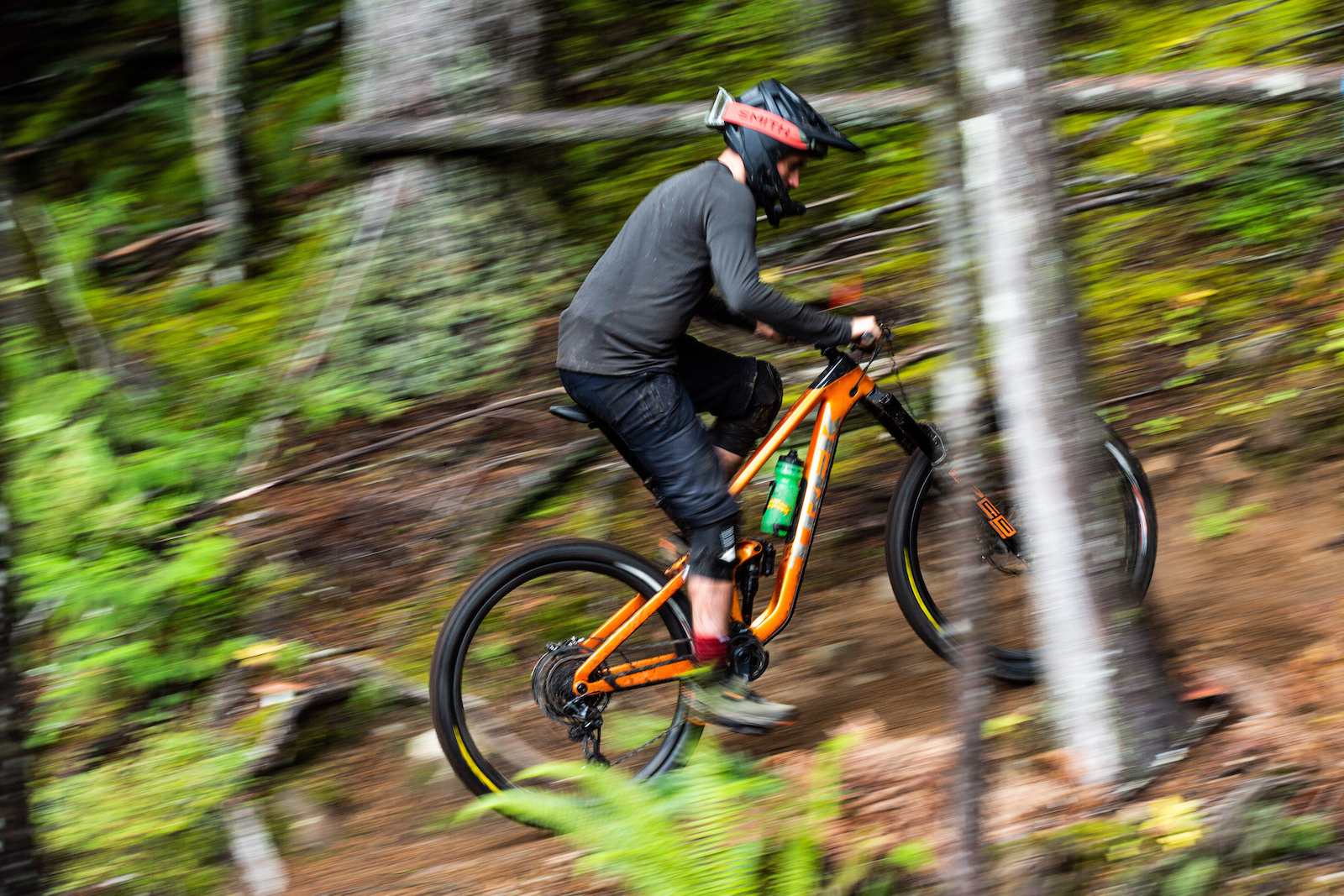
Cool Features
The backcountry battle axe You’ll need this where you’re going Slash is a no-holds barred enduro sled built to rip, rally, and rail through the gnarliest trails on the planet. With 170 mm of front and rear travel, mixed wheel size and new high-pivot design, the Slash not only descends like a beast, but it’s also ready to billy-goat up punchy climbs with square-edge slabs that send your friends on hike-a-bike missions. Crush laps that enduro bikes of yesteryear only dreamed of. Charge through the chunder, hurtle over wheel-roasting roots and blast through boulder fields with drops so deep you’ll question your sanity – but never your bike’s capability.
- Watch the walk-through
2023 Pinkbike Bike of the Year
“Slash put down an impressive performance during the Enduro Field Test, with a blend of speed and stability that put it on every editor's list of favourites. It also happens to be very adaptable, and while steep, chunky terrain is certainly its forte, it's no one-trick pony.” – Mike Kazimer, Pinkbike

"One of our favourite bikes of the year."
'slaps a huge smile on your face', "one of the most impressive enduro bikes we've tested".
High pivot, high aspirations
The Slash pedals better than other high-pivot bikes thanks to an idler pulley layout that's optimised for efficiency. Plus, that rearward axle path gives the Slash mind-blowing traction for scrambling up tricky climbs without getting caught on roots and rough edges. You get less wasted energy and more fuel left in the tank for the descents.
Upper idler
The 19-tooth upper idler pulley is bigger than most so the chain doesn't have to bend as sharply, adding efficiency and strength.
Lower idler
The lower idler pulley prevents chain growth below the chainstay and keeps that tension off the derailleur cage so you get better shifting and suspension performance.
The main ingredient in Slash's pedalling alchemy is its anti-squat curve. Anti-squat is affected by a few variables, but one of the biggest factors is main pivot position. The size and placement of the upper idler gives us another way to tune the anti-squat curve. Between the upper and lower idler layout and size, the Slash delivers a super-efficient and super-consistent feeling anti-squat curve that makes this bike pedal more like the short-travel Top Fuel than the previous generation Slash.
Built burly
1. Super slack head tube
Sitting at a relaxed 63.5-degrees, the Slash’s head tube keeps your front wheel far ahead for serious stability on the steepest, gnarliest trails.
2. Steep seat tube angle
Perched at 77-degrees, the Slash keeps you in the perfect position for putting down power on long slogs up fire roads and punchy, slabby climbs.
3. That just-right reach
460 mm of reach keeps the cockpit long and stable for control and stability through everything.
4. Size-specific chainstays
Get the same trail-taming feel no matter your height thanks to size-specific chainstays that keep handling consistent.
Adjustable leverage rate
Easily adjust suspension progression with just the flip of a chip. Ride it in the less progressive setting for a plusher feel perfect for rugged trails loaded with square-edge bumps. Flip it to more progressive when you’re riding fast, hitting big features and don’t want to bottom out – or if you want to roll with a coil shock.
Stow it, don’t show it
Stash your ride essentials with in-tube storage on all models – both carbon and alloy. Included Bontrager BITS bag keeps your odds and ends organised.
Created for customisation
Want to run a longer dropper? Swap air for a coil shock? No problem. The Slash has plenty of room for beefy tires, big coil shocks and running up to a 190 mm fork. Plus, it’s even equipped with accessory mounts under the top tube when your storage door is loaded and you need to haul a little more.
We spent hours analysing high-speed camera footage to figure out just how to shape a guard to minimise chain movement, so you get a quieter, more protected ride.
Slash Gen 5
The Slash Gen 5 is a long-travel 29er built for wild terrain. It packs in 160 mm of rear and 170 mm of front suspension, a lighter build and traditional suspension design. 1. 160 mm/170 mm travel 2. 29˝ front and rear wheels 3. Traditional suspension design 4. Lighter build
Slash Gen 6
The Slash Gen 6 goes even burlier with mixed wheel sizes for ultra-steep descents, longer 170 mm front/rear suspension, extra adjustability features and a high pivot suspension design. 1. 170 mm/170 mm travel 2. 29˝ front and 27.5˝ rear wheel 3. High pivot suspension design 4. Extra adjustability features

- Rider Notes
2024 Trek Slash AL Gen 6 Frameset

A 27.5″ / 29″ aluminum frame full suspension downhill frameset.
Manufacturer Price
Slash AL Gen 6 Frameset
In Stock: SM, MD, MD/LG, LG, & XL
For This Bike
View more similar bikes →
5'1" – 5'6"
5'4" – 5'10"
5'8" – 5'11"
5'9" – 6'3"
6'1" – 6'5"
Do you have this bike? Help other riders make a decision about which size will work for them by sharing your own size and fit notes. Report your fit

May 2024 · Nelson
Our feelings about the Gen 6 Slash may be mixed, but the good outweighs the bad, and we were able to get past the inconveniences.
Read Review

A great excuse to make poor choices

Trek made some changes for Gen 6 of the Slash. Cooper has had a good amount of time to suss them out.

Jan 2024 · Steve Fisher
Trek gives the 2024 Slash a high-pivot linkage with 170mm travel and mixed wheels, making a capable and well-rounded long-travel bike.

The 2024 Trek Slash looks nothing like the old one. So how do all the changes play out on the trail? Read on for our Trek Slash review.
Incredible composure on the rowdiest terrain
Plush & well-controlled suspension
Surprisingly efficient pedalling performance
Mullet setup injects welcome agility
Loads of in-built adjustability
Extra pulleys add complexity & noise
Tyres too flimsy for the application
Downtube storage is on the small side
Chainstay armour lacks damping
GX derailleur clutch failure

Nov 2023 · Luke Marshall
Trek has brought pedalling efficiency to the high-pivot market, but lost some of the design’s renowned sensitivity in the process
Well-mannered pedalling for a 170mm high-pivot bike
Balances stability and agile handling
Full of useful features
Firm shock damping tune reduces suspension sensitivity
Stiff wheels and handlebars
Tyres hinder capability

Oct 2023 · Dario DiGiulio
Trek did a very good job making the Slash a quiet bike, then seemingly lost the plot when they specced a hard rubber chainslap protector that does little to mitigate the drivetrain noise in bumpy terrain.
Excellent geometry and balanced ride
Composed, capable, and predictable suspension
Climbs well for such a downhill-focused bike
Excels in challenging terrain
Chassis may be too stiff for some
Chain drop issues due to improperly spaced lower idler (fixed)
Stock chainstay protector did very little to manage noise
The all-new Trek Slash is beefed up in celebration of its sixth iteration. This fresh design features an oversized, 19-tooth idler pulley and a high-pivot rear suspension configuration for the first time in the model’s lineage. Travel has been increased to 170 millimeters, pushing it further into the all-out, winch-and-plummet ethos that so many enduro bikes seem to be gravitating to. Our 9.9 version was spec’d with Bontrager’s RSL integrated handlebar and stem, a SRAM T-Type XO drivetrain, and the all-new RockShox Vivid Ultimate rear shock. The previous Slash was an impressive bike. It was impressively light for an enduro bike and was surprisingly efficient to pedal around all day. The new Slash Gen 6 leans more heavily toward the chairlift and shuttle culture side of the mountain bike world with some extra heft and additional pulleys in the drivetrain. However, with the oversized pulley and lighter casing tires, I found the Slash to climb the most efficiently of any high-pivot bike I’ve reviewed thus far. I attribute this mostly to the large, 19-tooth upper idler.

Last updated June 3
- Rocky Mountain
- Specialized
- YT Industries
- Allied Cycle Works
- Black Market
- DALLINGRIDGE
- Diamondback
- Early Rider
- EVO Bicycles
- Growler Bikes
- Guerrilla Gravity
- iGO Electric
- Intense 951
- Juiced Bikes
- View all brands
- Production Privee
- Rad Power Bikes
- Rambo Bikes
- Riese & Müller
- Soul Fast E Bikes
- Spark Cycleworks
- State Bicycle Co.
- Structure Cycleworks
- Surface 604
- Van Nicholas
- Vintage Electric
- We Are One Composites

- Cross Country

- All Mountain
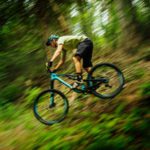
Trek Slash C Frameset
- AUS $ NZD $ USD $ CAD $ GBP £ EUR €
Size / 15.5" High, 15.5" Low, 17.5" High, 17.5" Low, 19.5" High, 19.5" Low, 21.5" High, 21.5" Low
Weight / 3.06
At a glance
Where to buy.

Specifications
- Frame OCLV Mountain Carbon main frame and 1x-specific stays, ABP, Boost148, Knock Block, EVO link, tapered head tube, Mino Link, Control Freak internal routing, Carbon Armor, ISCG 05, G2 Geometry, 150mm travel
- Wheel Size 29"
- Stem Bontrager Line Pro, Knock Block, 35mm clamp 0 degree, 50mm length
- Headset Knock Block Integrated, sealed cartridge bearing, 1-1/8˝ top, 1.5˝ bottom
Q: How much is a 2019 Trek Slash C Frameset?
A 2019 Trek Slash C Frameset is typically priced around $4,099 USD when new. Be sure to shop around for the best price, and also look to the used market for a great deal.
Q: Where to buy a 2019 Trek Slash C Frameset?
The 2019 Trek Slash C Frameset may be purchased directly from Trek .
Q: How much does a 2019 Trek Slash C Frameset weigh?
A 2019 Trek Slash C Frameset weights 3.06.
Q: What size wheels does the 2019 Trek Slash C Frameset have?
The 2019 Trek Slash C Frameset has 29" wheels.
Q: What size 2019 Trek Slash C Frameset should I get?
No comments on this bike yet. Why not be the first?
Leave a Reply Cancel reply
Your email address will not be published. Required fields are marked *
Want more MTB in your mailbox?
The latest on mountain bikes delivered straight to your mailbox.

More Bikes in Range View All

Trek Slash 8

Trek Slash 7

More Enduro Bikes View All

Fuji THRILL LT 2.0 (Euro)

Fuji Thrill LT 1.0

Centurion No Pogo R860i
Deals view all, view all deals, recent posts view all.

Blackburn Honest Digital Pressure Gauge Review
It's 2020 people. The squeeze and bounce test doesn't cut it anymore (and this is…

Comparing Mountain Bikes
Mountain Bikes are complicated machines. They have parts from hundreds of different manufacturers, come in…
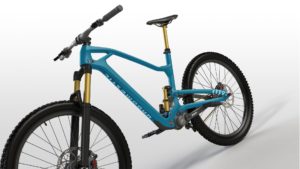
Undomestic Mountain Bikes: Here’s what we know
Update March 2020: Undomestic has announced that they are manufacturing frames "at this moment" and…
Send Feedback
Have a suggestion? Looking for a bike that's not on MTB Database? Or perhaps you've spotted an error?
We'd love to hear from you. Let us know with the form below.
This website uses cookies to ensure you get the best experience possible. Learn more.
About MTB Database
Explore, search and compare thousands of the world’s best mountain bikes here on Mountain Bike Database.
Compare prices, components, suspension, reviews, images and more on current and past MTB’s. You can even share reviews, comments and questions on mountain bikes. View and compare a huge selection of bikes from brands such as Trek , Specialized , Giant , Santa Cruz , Norco and more .
We strive to provide accurate and up-to-date information for mountain bikes on MTB Database. If you’ve spotted any issues, please let us know . We also include helpful tools, such as our frame size calculator, to assist you in choosing the right mountain bike. Bear in mind that these tools serve as a guide and simply provide a general indication. Refer to information provided by your bike manufacturer for the most applicable information for your bike.
Bikes By Brand
Bikes by year, bikes by riding style, bikes by wheel size, popular bikes.
- 2022 Specialized Epic EVO Comp
- 2022 Trek Marlin 6
- 2022 Specialized Enduro Comp
- 2022 Specialized S-Works Epic EVO
- 2022 Specialized Epic EVO Expert
- 2022 Giant Fathom 29 1
- 2022 Trek Marlin 7
Latest Bikes
- 2023 Commencal SUPREME DH V5 SIGNATURE 70'S
- 2023 Orange Phase 29 Factory
- 2022 Commencal META SX V4 TEAM Frame
- 2023 Commencal SUPREME DH V5 SIGNATURE LTD
- 2023 Commencal META SX V4 - Frame
- 2023 Riese & Müller Swing4 vario
- 2023 Riese & Müller Swing4 silent
- Afghanistan
- Åland Islands
- American Samoa
- Antigua and Barbuda
- Bonaire, Saint Eustatius and Saba
- Bosnia and Herzegovina
- Bouvet Island
- British Indian Ocean Territory
- Burkina Faso
- Canary Islands
- Cayman Islands
- Central African Republic
- Christmas Island
- Cocos (Keeling) Islands
- Congo (Brazzaville)
- Congo (Kinshasa)
- Cook Islands
- Curaçao
- Czech Republic
- Dominican Republic
- El Salvador
- Equatorial Guinea
- Falkland Islands
- Faroe Islands
- French Guiana
- French Polynesia
- French Southern Territories
- Guinea-Bissau
- Heard Island and McDonald Islands
- Isle of Man
- Ivory Coast
- Liechtenstein
- Marshall Islands
- Netherlands
- New Caledonia
- New Zealand
- Norfolk Island
- North Korea
- North Macedonia
- Northern Mariana Islands
- Palestinian Territory
- Papua New Guinea
- Philippines
- Puerto Rico
- São Tomé and Príncipe
- Saint Barthélemy
- Saint Helena
- Saint Kitts and Nevis
- Saint Lucia
- Saint Martin (Dutch part)
- Saint Martin (French part)
- Saint Pierre and Miquelon
- Saint Vincent and the Grenadines
- Saudi Arabia
- Sierra Leone
- Solomon Islands
- South Africa
- South Georgia/Sandwich Islands
- South Korea
- South Sudan
- Svalbard and Jan Mayen
- Switzerland
- Timor-Leste
- Trinidad and Tobago
- Turkmenistan
- Turks and Caicos Islands
- United Arab Emirates
- United Kingdom (UK)
- United States (US)
- United States (US) Minor Outlying Islands
- Virgin Islands (British)
- Virgin Islands (US)
- Wallis and Futuna
- Western Sahara
- RIDEWRAP HQ, WHISTLER
- RIDEWRAP, COLORADO
- RIDEWRAP, SANTA CRUZ

Trek Slash // RideWrap Tailored Protection™ Frame Kit

US $125.00
Specific to your Trek Slash. Our Tailored Protection™ Frame Kit covers up to 95% of your Frame and ensures your bike is protected.
Description
Frame Protection for your Trek Slash.
This kit includes bikes from production years: 2018, 2019, 2020, 2021, 2022, 2023, 2024.
Wheel Sizes include 27,27/29,29.
- Your RideWrap Tailored Protection™ kit has the highest available coverage on the market thanks to a proprietary design process. Kits are tight to extremities and narrow seams are strategically located.
- RideWrap protection film is virtually invisible. Optically clear protection means your bike is the center of attention.
- RideWrap protection film is self-healing. Minor marks and scuffs will disappear with the warmth of a sunny day.
- RideWrap has a low surface energy and is hydrophobic. This means that less dirt sticks to your bike and it is easier to clean.
- RideWrap protection film has a 10 year warranty against yellowing and cracking.
Designed, engineered and tested with proprietary technology in Whistler, BC.
Please carefully confirm that this product is for the correct model, year, frame material, wheel size, and size. RideWrap Tailored Protection kits are specific to the features of the frame/fork. If you select anything other than your actual frame/fork, the protection kit will not fit.
- Coverage: ~95%
- Included in the box: Protection kit, install key, pre-install cleaning wipes, squeegee, install solution concentrate, Microfiber, and RideWrap sticker sheet.
- Finishes Available: Clear Gloss or Matte
- Made with high-quality RideWrap materials
Tailored Protection not available
We strive to have the most bike protection kits in our catalog so that you can get the protection your bike needs, we’re sorry this one is not available at this time.
Our team is working hard everyday to add new current model bikes to our inventory.
Unfortunately, the team has either not had the opportunity to measure this particular model or size or the model year has been superceeded, so Tailored Protection is not currently available.
We recommend our high-quality universal fit products to get protected today.
Please submit a request for your model to get it on our radar.
This is an automated system that will add this model to our team's investigation list. Please note, that they only investigate current model year bikes, and if yours is a previous generation, unfortunately it will not be available. This request does not guarantee a timeline or that we will be successful in offering this model, but we will do our best!
If you'd like to be notified when we have protection available for your bike, please include your email below. Don’t worry, unless you select to subscribe to our mailing list, we will ONLY contact you in the event there is a change in the status of this model.
protecting high risk areas of the bike. The Covered Kit offers a generic fit per frame style to cover high wear areas.

Key areas are given treatment. The Essential Kit is perfect for cable rub and protecting against wear and tear.

Banshee Legend< // RideWrap Tailored Frame Protection Kit
- Brand : Banshee
- Model : Ledgend
- Year : 2018:
- Wheel Size : 27
- Frame Material : Carbon

What is Trek Slash Bike Frame Protection ?
Bike frame protection components provide a barrier between your bike and whatever the trail, travel, or storage troubles throw at it. They keep your bike looking fresh and protect the investment you make when purchasing a bike. RideWrap protection components take the abuse, so your bike doesn’t have to. Our protection products offer protection from trail debris, shuttle abrasion, travel damage, and talent deficiencies. Protect your bike and your investment with RideWrap protection components so you can ride more and worry less .

Trek Slash frame protection benefits
RideWrap Bike frame protection products keep your bike looking fresh. They protect your frame and fork from damage. Using RideWrap protection products increases the resale value of your bike by protecting it from scrapes, scratches, and regular wear and tear. RideWrap protection films make your bike easier to clean. The hydrophobic quality of the film sheds mud and speeds up wash time. RideWrap gives you confidence to focus on the ride not the consequences. Charge harder, pedal further, and ride more knowing your bike is protected. Now get out there, ride more and worry less.
Keep your bike looking fresh.
Increase resale value.
Focus on the ride, not the what-if.
Reduce time spent washing.

6.9 reasons to protect your bike
What will happen in the future and why is it important to protect your bike this year? If you’re like us, then you’re already …
Privacy Overview
Necessary cookies are absolutely essential for the website to function properly. This category only includes cookies that ensures basic functionalities and security features of the website. These cookies do not store any personal information.
Any cookies that may not be particularly necessary for the website to function and is used specifically to collect user personal data via analytics, ads, other embedded contents are termed as non-necessary cookies. It is mandatory to procure user consent prior to running these cookies on your website.

- PlayStation 5
- PlayStation VR2
- PlayStation 4
- PlayStation Store
- PlayStation Plus
- Portuguese (Br)
- Spanish (LatAm)
- Spanish (EU)
- Traditional Chinese
No Rest for the Wicked: Revealing new details on combat, crafting, town-building

Ori developer Moon Studios shares a closer look at its new beautiful yet brutal action-RPG.

You wake up as the survivor of a shipwreck, with nothing more than the ragged clothes on your back to your name. A short trek away lies the dying captain of the vessel, who mentions the place he was trying to reach– a place called Sacrament. And so, your long and difficult journey begins.
No Rest for the Wicked is the newest game from Moon Studios, creator of the Ori series. First announced at last year’s Game Awards, this PS5-bound action RPG is as visually luscious as their previous work but wrapped in a darker, mature narrative. We sat down with the team for an early preview of the game to discover more about its central gameplay mechanics and world design.
In the harsh world of No Rest, suffering comes on two fronts: political maneuvering by well-connected royals and religious figures in the wake of the King’s death, and a horrific curse called the pestilence that transforms the humans it claims into unholy abominations. As all this happens, the populace is turning to more desperate and illicit means of survival.
A world of great beauty and unspeakable suffering
Moon Studios is well known for its ability to create compelling worlds and stories, and No Rest for the Wicked explores new territory for the developer. “After having made both Ori games, our next goal was to create our own huge fantasy universe,” says Thomas Mahler. “With Ori, we always relied on using allegory. We told stories that touched people, but we used fantasy creatures that, in essence, had to deal with very human problems. This time, we wanted to actually use humans and craft a Shakespearian tale with very strong human themes like family, trust, betrayal, comradery, and so on.”

To that end, No Rest offers up a very different feel from that of Ori’s warm, inviting natural environments: dilapidated, crumbling fortresses, barren, scarred landscapes, and vicious-looking foes — human and non-human alike — populate the tumultuous land of Isola Sacra. With each sword-slash, you see blood and viscera, illuminating the brutal, painful reality of life here.
Yet among it all is a strange and compelling beauty, captured in the gorgeous stylized visuals Moon Studios specializes in, the studio seemingly not missing a step with the switch from 2D to 3D: every frame looks like a painting come to life.
“We’re just very much set in not being yet another studio that tries to go for a photorealistic style,” Mahler continues. “We think paintings age less quickly than trying to pursue photorealism. When I see a Caravaggio painting, I’m still amazed by what he was able to accomplish just using oils 500 years ago.”
Humble beginnings

Starting up the game, you have next to nothing on your person. That changes quickly as you discover a worn one-handed sword and some discarded tools, likely the scraps the nearby bandits didn’t bother looting from their victims. Taking up the blade and using some found materials to cook up a basic stew, you prepare to fight through the area under the bandits’ control to try and reach Sacrament.
There are many ways to engage foes–barging in head-first, or trying to get the jump on them with a sneaky ambush–but once you engage them, you’ll need to fight smartly, as your stamina meter makes sure your every move counts. A careless sword swipe, a bad dodge, a failed parry, or a broken guard can quickly get extremely painful. If you’re in a pinch, a well-placed Rune attack might help you turn the tables, but at the cost of focus.
Fortunately, you have a variety of gear on your side–which you’ll either find, buy, or craft– and a stat-building system that lets you invest points where you choose on level up. Unlike many action RPGs, which have you pick a class very early and restrict your gear based on that choice, you grow into a class in No Rest for the Wicked more organically.

“We just wanted to give players an extremely diverse set of gear they can find to fulfill all their fantasies of the characters they’d like to play within an RPG,” notes Mahler. “We start the player out with pretty simple movesets, but as they progress further and further, they’ll be able to advance those movesets, and combine various combos, special attacks, and spells together. As for leveling and stat-building, in general, our methodology was that we wanted things to be as active as possible. We believe that players want all progress to be felt instead of just seeing some numbers go up that might not immediately affect your playstyle.”
Shaping your adventure
The overhead view of the action helps the environments in No Rest for the Wicked feel epic and atmospheric while also giving you subtle hints about out-of-the-way paths or hidden nooks and crannies. Background objects may be more destructible than first assumed, often yielding some precious loot as a reward for our experimentation. Pushing against odd-looking walls and bits of geometry that seemed a bit off may reveal passages filled with valuable treasures–and sometimes also their guardians.

Besides combat gear, there are plenty of other items to be acquired–bits of food for cooking, wood and ore for crafting, and assorted other sundries. With tools like an axe or pickaxe, we can chop down trees and harvest ore–though you’ll want to make sure the area is clear from hazards first. Otherwise, a flaming projectile to the face might interrupt your gathering session.
The harvesting and crafting elements become more and more pronounced as the game progresses, and eventually, you can choose to engage in the reconstruction of Sacrament. “We have so many different mechanics all mashed into this one game, which we then had to all make work together, “explains Mahler. “The idea is simple: We create certain needs for players and then we provide a lot of tools on how to fulfill those needs. For example, if players choose to farm and engage in housing, crafting, etc., they’ll then be able to take the outcome of those interactions back into the battle.”
“The ultimate goal here is once again to fulfill that RPG fantasy and ultimately craft a game that is not just about slaying enemies. We want you to have a diverse set of things you can do at all times. Tired of being in combat? Well, go and get some resources instead. Or go and help rebuild Sacrament. Or engage in housing and build yourself a dream home that constantly produces resources for you. Or go fishing. There should be no end of ‘Or’s’ in this game.”
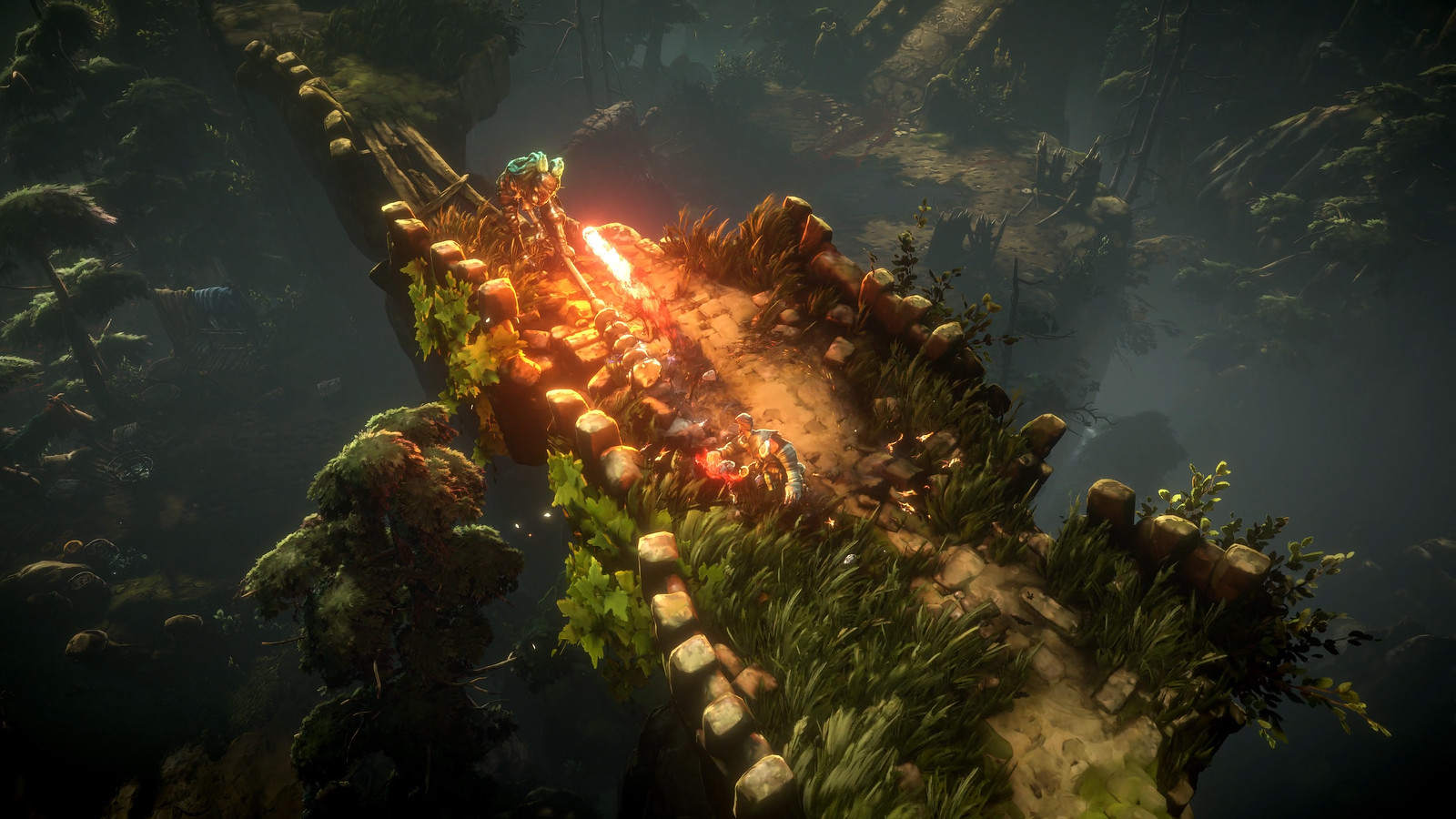
The first few steps on a long road
The demo ended with a boss battle against the pestilence-infected Warrick, who has been warped and transformed beyond recognition. It’s not an easy struggle, but learning the parry cues makes the fight more manageable, turning the corrupted creature into a sitting duck for a precious few seconds. So ends the beginning of what’s likely to be a very, very long journey.
Thomas Mahler hopes players will enjoy the game his team has spent many moons crafting. “During development, we looked at what current ARPGs offer players. Our goal was to take all the aspects from all these games we love, mix that together, and create a new recipe that ultimately becomes the game we always wanted to play!”
Did you like this? Like this
Comments are closed.
Trending stories.

Astro Bot pre-order begins June 7, features PaRappa Lovestruck Lyricist outfit and more

Nicolas Doucet Studio Head, Team Asobi

Concord is now available to pre-order, Early Access and beta detailed

Pam Piscitello Director of Marketing and Operations - Firewalk

Helldivers 2 enlists The Viper Commandos Warbond on June 13

Katherine Baskin Social Media and Community Manager, Arrowhead Game Studios

Elden Ring: Shadow of the Erdtree hands-on report

Eric Whelan (he/him) Content Communications Manager, Sony Interactive Entertainment

PlayStation Plus Monthly Games for April: Immortals of Aveum, Minecraft Legends, Skul: The Hero Slayer

Adam Michel Director, Content Acquisition & Operations, Sony Interactive Entertainment

Marvel’s Spider-Man 2 arrives only on PS5 October 20, Collector’s & Digital Deluxe Editions detailed

James Stevenson Community Director, Insomniac Games

PlayStation Plus Game Catalog for June + PS5 Game Streaming news update for Premium members
Nick Maguire VP, Global Services, Global Sales and Business Operations, SIE

PlayStation Plus Game Catalog lineup for February: Horizon Forbidden West, The Quarry, Resident Evil 7 biohazard and more
Please enter your date of birth.
Sorry, you may not access this content..
Kingdom Of The Planet Of The Apes Looks Utterly Wild Without Special Effects

When 20th Century Fox began production on the first "Planet of the Apes" film, they enlisted special effects makeup artist John Chambers to help transform actors like Roddy McDowall, Kim Hunter, Maurice Evans, and James Whitmore into anthropomorphic apes. Chambers was already famous for having perfected Spock's Vulcan ears on "Star Trek," but a society of intelligent apes who were capable of communicating was like something straight out of "The Twilight Zone." Rather than create ape masks, Chambers instead crafted individual prosthetic pieces to be applied in sections, allowing the actors to emote with their own facial muscles — a technique that revolutionized the art of special effects makeup.
Now, over 50 years later, the intelligent apes have traded practical makeup prosthetics in favor of breathtaking and realistic digital artistry. When it comes to 2011's "Rise of the Planet of the Apes," /Film's Larry Fried declared , "There is simply no greater digitally-realized character than Caesar (Andy Serkis), cinema's first-ever photorealistic leading ape and one of modern filmmaking's most complex and challenging characters." 13 years later, "Kingdom of the Planet of the Apes" is taking things a step further, incorporating multiple apes of different species with their own emotional arcs and utilizing Wētā FX's state-of-the-art technological advancements .
"Kingdom of the Planet of the Apes" is a lush, beautiful action/adventure film with remarkably realistic animals, but it's seeing the footage of the actors performing before any digital manipulation that truly showcases what an impressive accomplishment these films are. Actors completely transform their bodies, faces, and voices to assist with the believability of the apes instead of relying on the CGI that will be added in post-production. The results are utterly wild, and double as the greatest argument against AI "art."
Kingdom of the Planet of the Apes' environment is mostly practical
"Kingdom of the Planet of the Apes" takes place on Earth a few hundred years after the events of "War for the Planet of the Apes," which is set in approximately 2028. Nature has, for the most part, taken back the planet, with most building structures covered with greenery or destroyed by time. Instead of relying solely on digital backgrounds, director Wes Ball elected to shoot on location to help seamlessly blend the digital effects of the apes with a tangible world. As he told Collider during a Directors on Directing panel at WonderCon, "We probably had one blue screen set on the movie. For the most part, we're out in real locations shooting with real actors." This meant taking the risk of shooting in unpredictable environments in order to form a more realistic setting.
Ball also told Collider that to pull it off, there were many cameras utilized to capture every possible angle of the actors to assist with the later digital effects. "I've got a camera on one face, and I've got about half-a-dozen to two dozen infrared cameras that are hiding in the set, behind little things of leaves, or whatever, just camouflaged on the set, that are actually the technical craft process of capturing all of this information so that we can get it right," he explained. This technique of blending practical sets with CGI enhancements also helps trick the brain — preventing us from involuntarily "looking for the seams" — and fall into a world of believability instead. "There's about 30 to 40 minutes of full CG, which I don't think people will be able to tell, there's some scenes that you would never guess, just because that's how it had to get done," said Ball. "But it all started from a real camera, and a real world with real, physical actions."
Actors learned to mimic apes using specialized crutches
Apes all move differently depending on their species, which meant that the actors had to learn how to hold their bodies in ways that more closely resemble our evolutionary siblings. Alain Gauthier served as the movement coordinator and choreographer on "Kingdom of the Planet of the Apes," and conducted an "Ape School" for all of the actors to better understand how to walk, run, tip-toe, balance, and believably act like an ape. During a press junket for the film, journalists, including Comicbook.com special assignment producer Brandon Davis , got a crash course in Ape School with instruction from Gauthier and assistance from film stars Owen Teague (Noa) and Kevin Durand (Proximus Caesar). According to Gauthier, Teague and Durand were also the actors who took to acting like apes most quickly, with Durand hailed for his familiarity playing such physical roles.
"[Durand and I] did have a one-on-one for a while together, so that obviously accelerated things, but he took to it really [quickly]," said Gauthier, "And Owen [laughs] he's just been hanging out with Apes too much!" It's all a matter of understanding the differences between ape body structures and human body structures. Keeping the knees bent, the back straight, the hips rounded, the head forward, and remembering to move the entire body when moving as ape hips are higher and have limited torsion are the key basics to moving like an ape. "We all have completely unique ways of moving as our apes," said Teague.
Durand noted that director Wes Ball said that even if only looking at the skeletal dots of the CGI tracking markers, he could tell which actor was who solely based on movement — because the personalities of the physicality were all unique to the performer.
Kingdom of the Planet of the Apes used ethical machine learning
As the threat of AI continues to worry many creatives, Wētā FX is paving the way for ethical uses of machine learning via something they call "a solver." It is essentially an algorithm processing input data (like tracking dots on an actor's face or a motion capture suit) and trying to match where the movement should go from one frame to the next. It's especially useful when making the apes' faces look realistic. According to an interview with Polygon , it's also an extension of the technology developed for Josh Brolin's face as Thanos in the "Avengers" movies. In the words of "Kingdom of the Planet of the Apes" visual effects supervisor Erik Winquist, "Solvers might manipulate digital ape models to roughly match the actors' mouth shapes and lip-synching, giving the faces the vague creases and wrinkles you might expect to form with each word."
However, it's an imperfect science and still requires the artistry of humans to guarantee the apes look as best as possible — because no solver will ever be able to match the necessary human element of filmmaking. "It meant that our facial animators can use it as a stepping-stone, essentially, or a trampoline," Winquist told Polygon through a laugh. "So [they can] spend their time really polishing and looking for any places where the solver was doing something on an ape face that didn't really convey what the actor was doing." This means animators don't have to get hung up with the tedious technical details and can instead focus on the emotional subtleties of a more "human" expression. This, in turn, means that the emotion on display from the apes is not artificial; it's the work of incredibly talented actors shining through.
Kingdom of the Planet of the Apes will be released pre-CGI
For those interested in seeing more of how "Kingdom of the Planet of the Apes" came to be before the digital effects were added, 20th Century Studios has already announced that the physical media release of the film will contain a special bonus feature of the entire film without CGI. As director Wes Ball told Games Radar , "I'm doing a little thing for the DVD where you can watch the movie — the entire movie — with the raw dailies. I'm working on that, where you'll be able to watch and see both the final [cut] and the raw dailies. You can see how close they get, what they do, and how they stitch everything together. It's amazing, and you can just sit there and enjoy it." This is especially exciting for those who have been decrying the lack of physical media releases , especially those without the added gift of behind-the-scenes special features.
"I'll do some commentary over it with Erik [Winquist], our VFX [supervisor]. I think it's gonna be great. For geeks like us, it's gonna be a first. They've never seen this kind of thing," Ball explained. "Some of the hardest stuff in VFX is how you get CG characters to interact with others. So we have a human girl hugging a CG ape and it's like, 'How do you do that?'" The film is currently crushing it at the box office , so hopefully this will motivate 20th Century Studios to continue the saga of Noa, and audiences will be able to enjoy the continued technological advancements along the way.
"Kingdom of the Planet of the Apes" is now playing in theaters everywhere.

COMMENTS
Slash Gen 5. Slash Gen 5 is a long-travel 29er built for wild terrain. It packs in 160mm of rear and 170mm of front suspension, a lighter build, and traditional suspension design. 1. 160mm/170mm travel. 2. 29˝ front and rear wheels.
We saw the high pivot come into form on the Session in the 2022 model year, and earlier this year the release of the Fuel EX showcased Trek's interest in engineering diversely adjustable bikes, both of which carry into the sharply engineered Gen 6 Slash. FRAME. Trek's signature OCLV Mountain Carbon is employed in the construction of this ...
Trek is ready to unleash the new Slash, which gets more travel, a more practical frame design and a very special rear shock. We've been testing the 2021 Trek Slash 9.9 for the past month, and it turns out this ain't no one-trick pony. Read on for everything you need to know about the new Slash.
Updated for 2023, the high pivot Trek Slash Gen 6 can be run with a number of wheel size configurations and can take up to a 190mm travel fork but comes with a 170mm fork and mixed-wheel setup as standard. Riders can choose a full 29er race machine, 27.5" aggro-shredder or put a dual crown 190mm with a mullet and have a mini-Session bike park ...
Trek Slash Details • Carbon fiber frame • Travel: 170mm / 170mm fork • Mixed wheel or full 29" • 63.3° head angle • 77° seat angle • Reach: 432, 448, 468 (test), 488 (test), 513
The Slash comes stock with 170 mm of travel front and rear, but is approved for up to 190 mm forks. However, Trek is still saying no to dual crown forks, even on the aluminum version. I really hope this changes, as the alloy Slash is the best candidate for a 190 mm dual crown fork I've ever ridden. Frame Details
A 29″ carbon frame full suspension enduro frameset. ... It's good enough to score a 10 out of 10; a rare feat. Trek Slash 9.8 XT need to know: Mino Link geometry adjustment allows for a 27.5in Mullet setup KnockBlock 2.0 offers an increases the steering angle from 58º to 72º and can be removed if needed A bash guard on the MRP chain guide ...
The frame of the 2021 Trek Slash in detail. Like its predecessor, the new Trek Slash is available as an aluminium or carbon version. The kinematics and geometry of both versions are identical. Trek are also the first company to integrate the practical storage compartment in the down tube on an aluminium frame - awesome! Like its predecessor ...
Trek's recommended sizing for the Slash puts me (6' / 183 cm) squarely in the middle of the sizing band for the Large frame and outside of the overlapping regions for the M/L and XL sizes. That feels pretty on the money — I had an easy time getting comfortable on the Large Slash and wasn't ever tempted to deviate from that size.
No shortage of frame armour on the Trek Slash! Component highs & lows. As far as the 2024 Trek Slash lineup goes, we reckon the 9.8 GX AXS model tested here is the pick of the bunch. It costs quite a bit less than the higher-end models, but loses out very little in terms of performance.
5,199 CAD for the Trek Slash Frame or 3,699 for the Specialized Enduro Frame that doesn't come with Knock Block, hmmm.... [Reply] 7 2. fruitsd79 (Dec 12, 2020 at 8:53) 2200 for a complete Mega ...
Built burly. 1. Sitting at a relaxed 63.5-degrees, the Slash's head tube keeps your front wheel far ahead for serious stability on the steepest, gnarliest trails. 2. Perched at 77-degrees, the Slash keeps you in the perfect position for putting down power on long slogs up fire roads and punchy, slabby climbs.
A 29″ carbon frame full suspension enduro bike with high-end components. ... It's good enough to score a 10 out of 10; a rare feat. Trek Slash 9.8 XT need to know: Mino Link geometry adjustment allows for a 27.5in Mullet setup KnockBlock 2.0 offers an increases the steering angle from 58º to 72º and can be removed if needed A bash guard ...
The all-new Trek Slash is beefed up in celebration of its sixth iteration. This fresh design features an oversized, 19-tooth idler pulley and a high-pivot rear suspension configuration for the first time in the model's lineage. Travel has been increased to 170 millimeters, pushing it further into the all-out, winch-and-plummet ethos that so ...
Since it's been a few years since the Slash saw a revamp, and given the recent development of the Session high-pivot frame, this new take on Trek's long trav...
The Trek Slash 8 is a versatile full-suspension mountain bike that can handle rough trails and fast descents. Find out how it performs in our detailed review, where we test its features, geometry ...
Specs, reviews & prices for the 2019 Trek Slash C Frameset. Compare forks, shocks, wheels and other components on current and past MTBs. View and share reviews, comments and questions on mountain bikes. Huge selection of mountain bikes from brands such as Trek, Specialized, Giant, Santa Cruz, Norco and more.
What is Trek Slash Bike Frame Protection? Bike frame protection components provide a barrier between your bike and whatever the trail, travel, or storage troubles throw at it. They keep your bike looking fresh and protect the investment you make when purchasing a bike. RideWrap protection components take the abuse, so your bike doesn't have to.
With each sword-slash, you see blood and viscera, illuminating the brutal, painful reality of life here. Yet among it all is a strange and compelling beauty, captured in the gorgeous stylized visuals Moon Studios specializes in, the studio seemingly not missing a step with the switch from 2D to 3D: every frame looks like a painting come to life.
Kingdom Of The Planet Of The Apes Looks Utterly Wild Without Special Effects. 20th Century Studios. By BJ Colangelo / May 15, 2024 8:00 am EST. When 20th Century Fox began production on the first ...